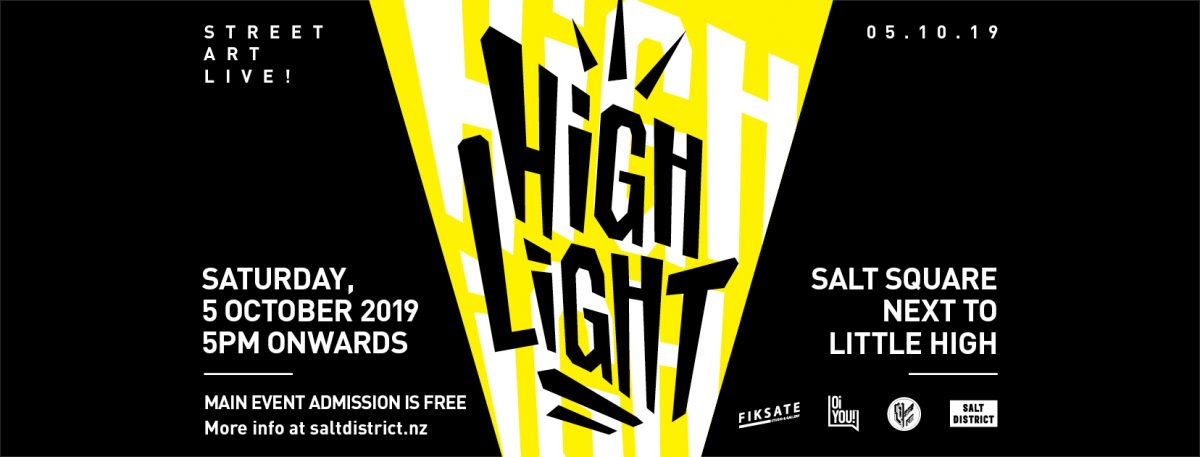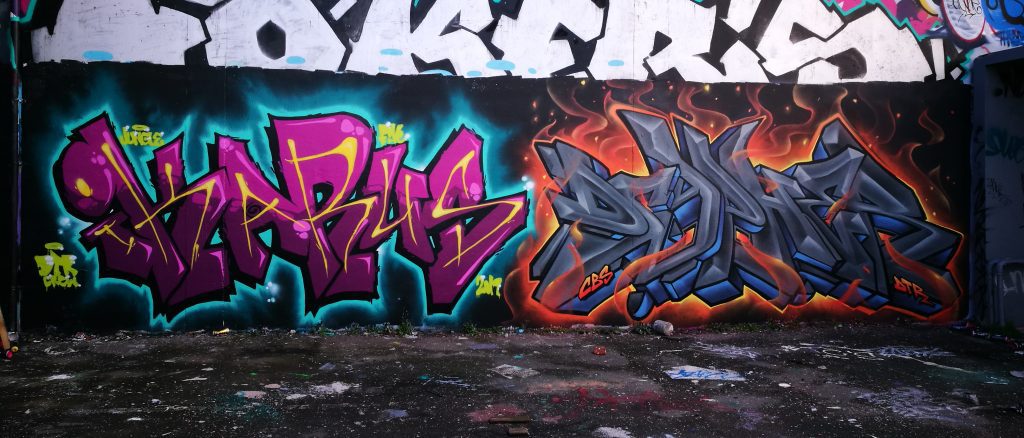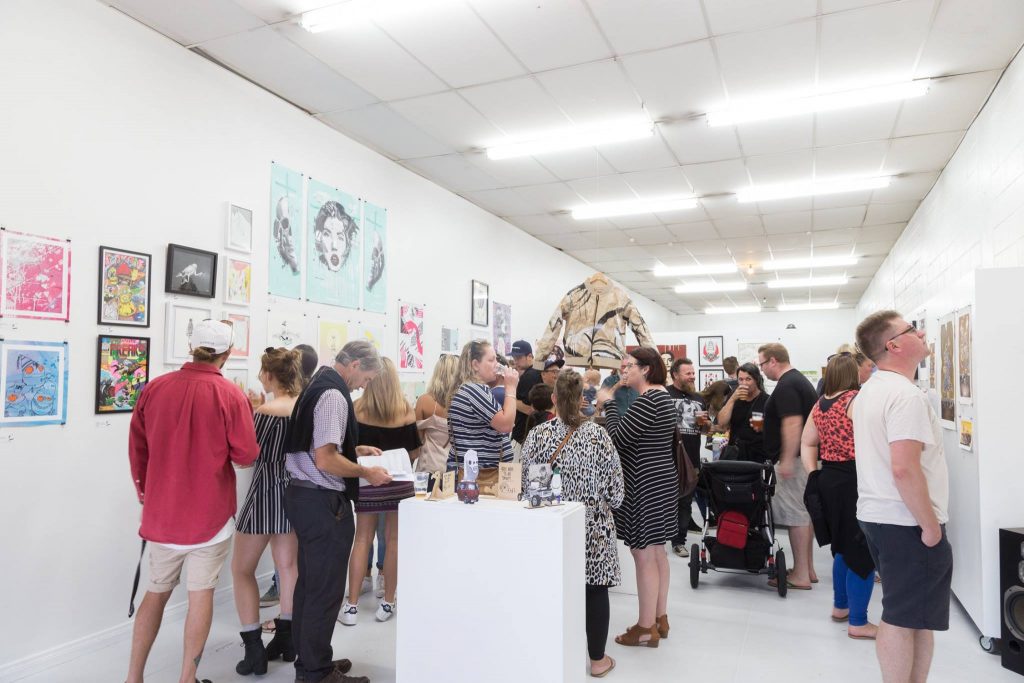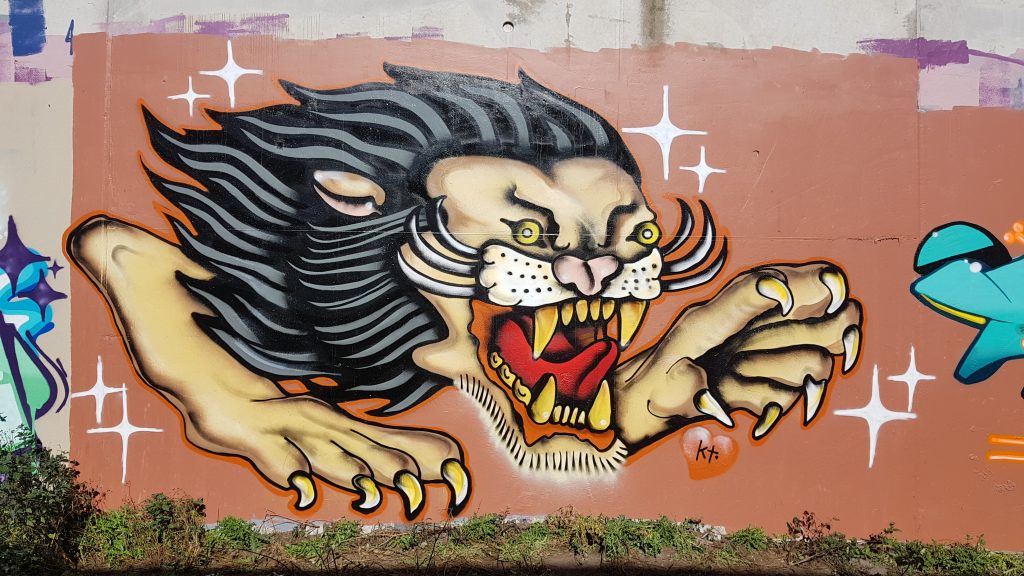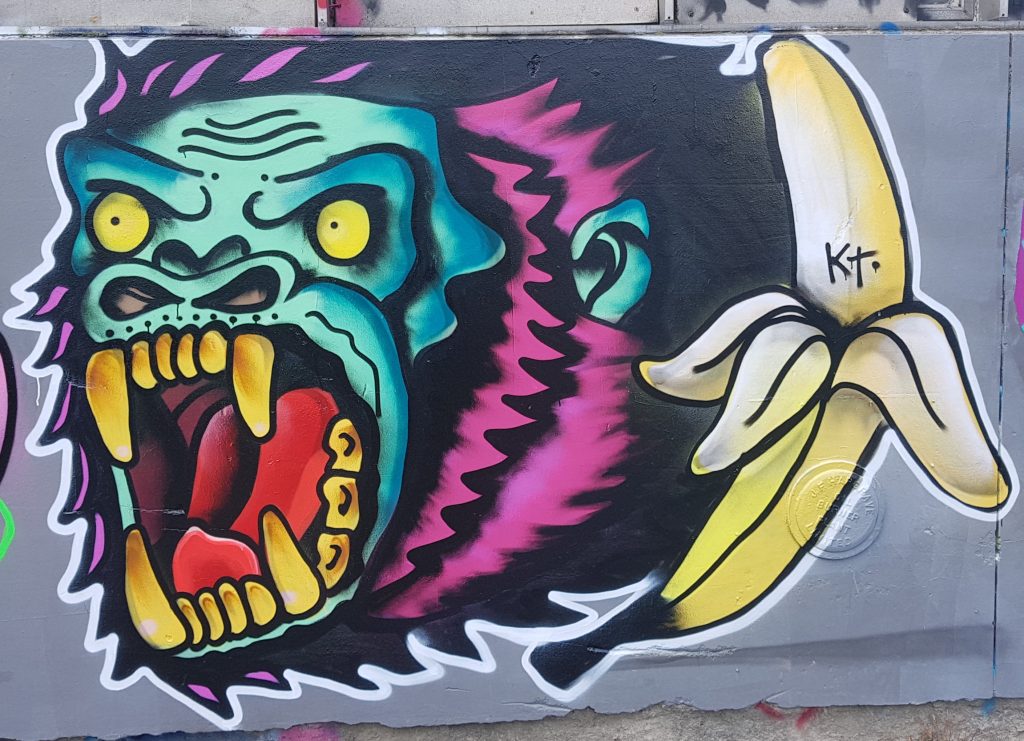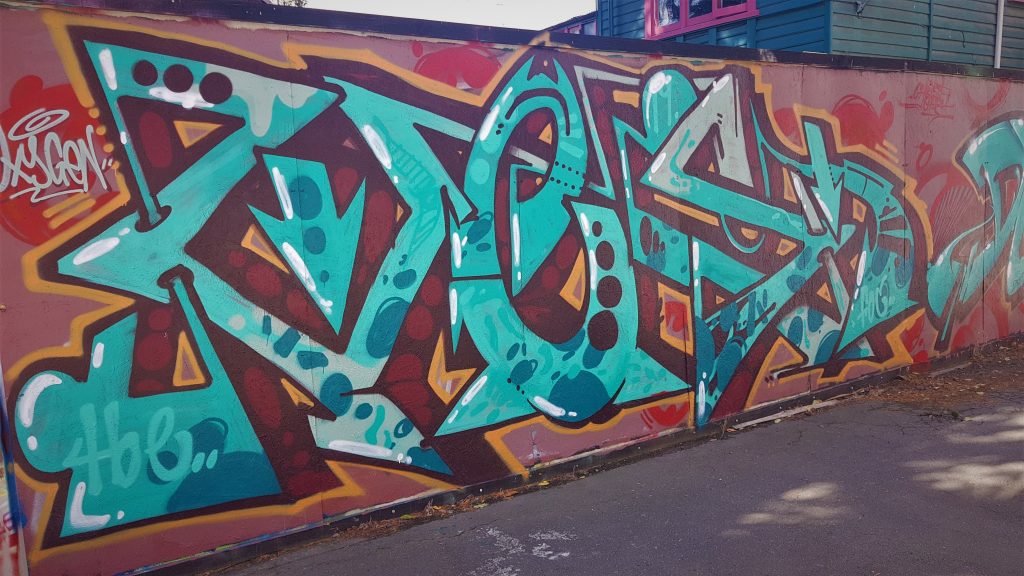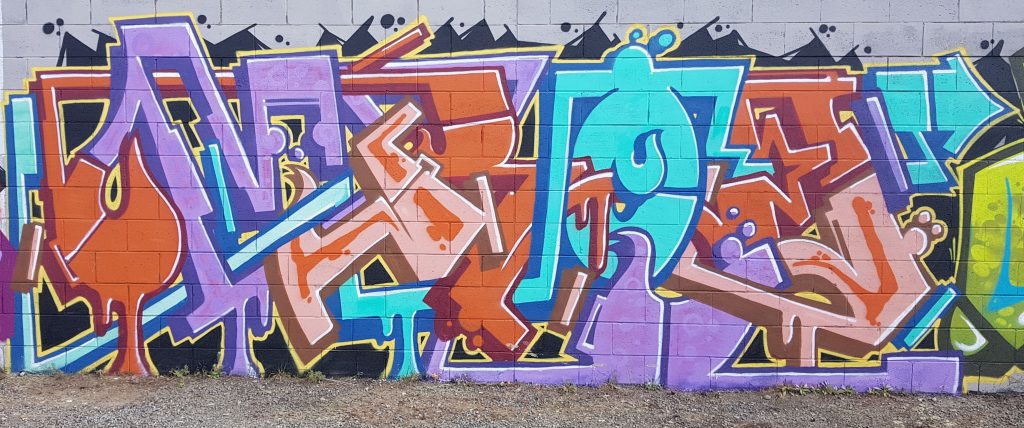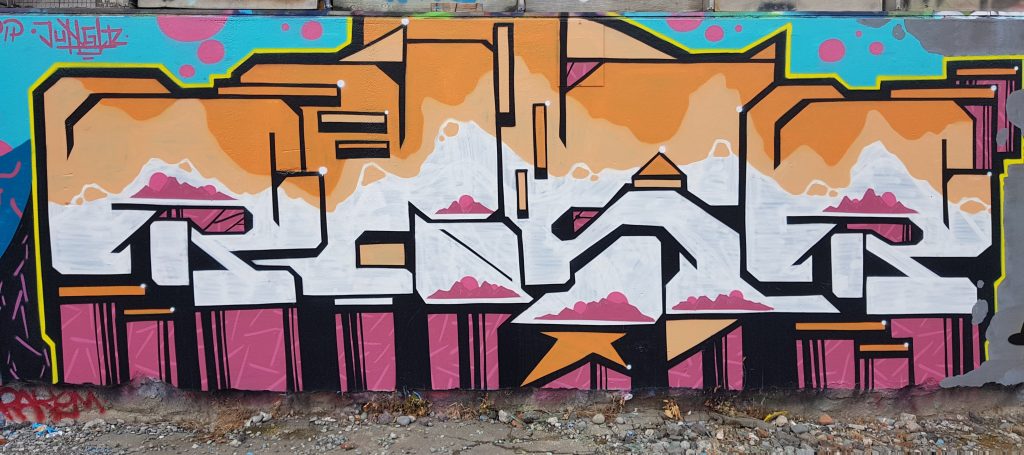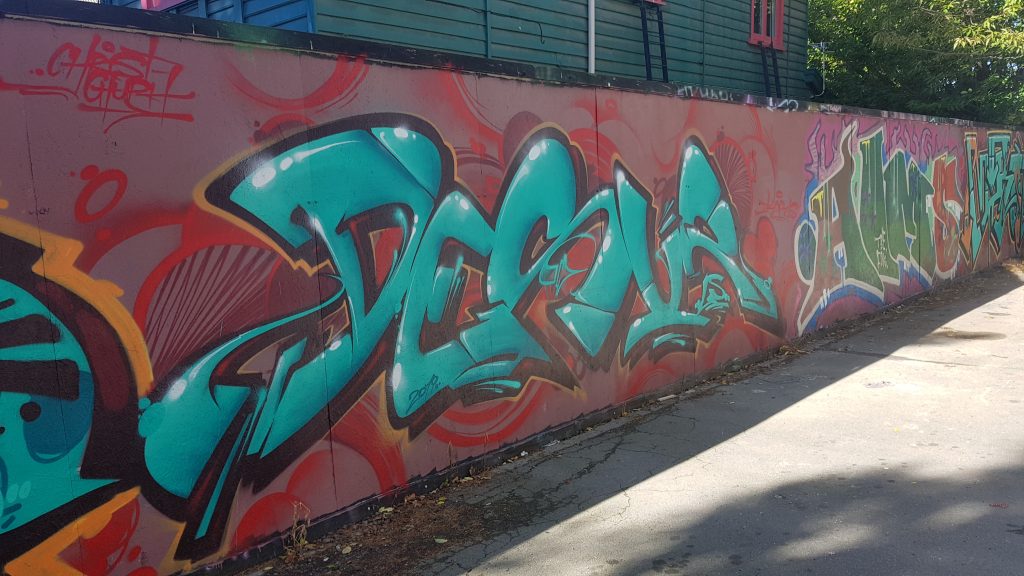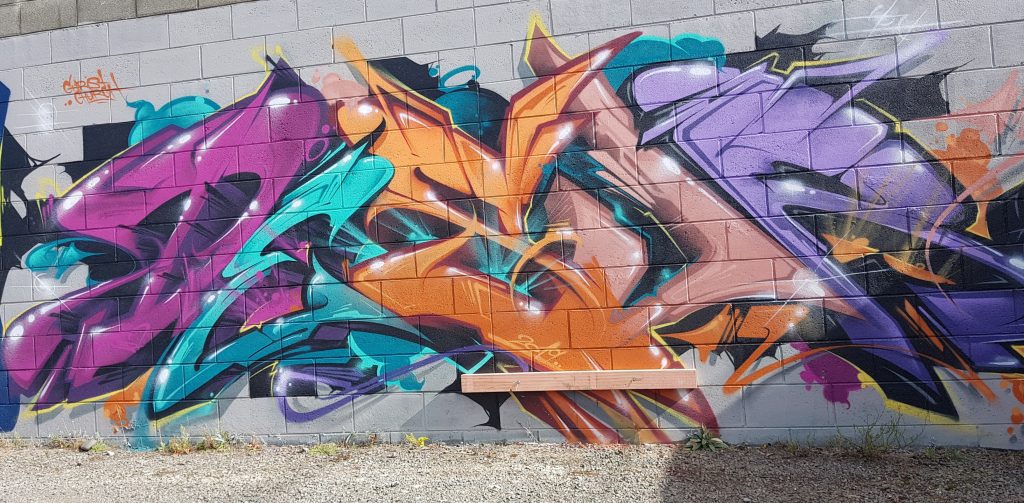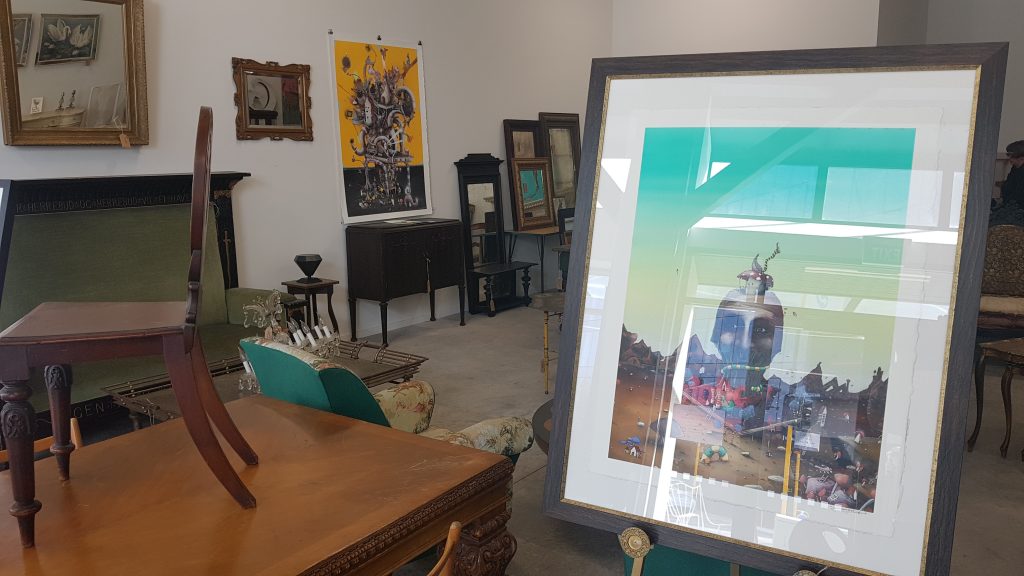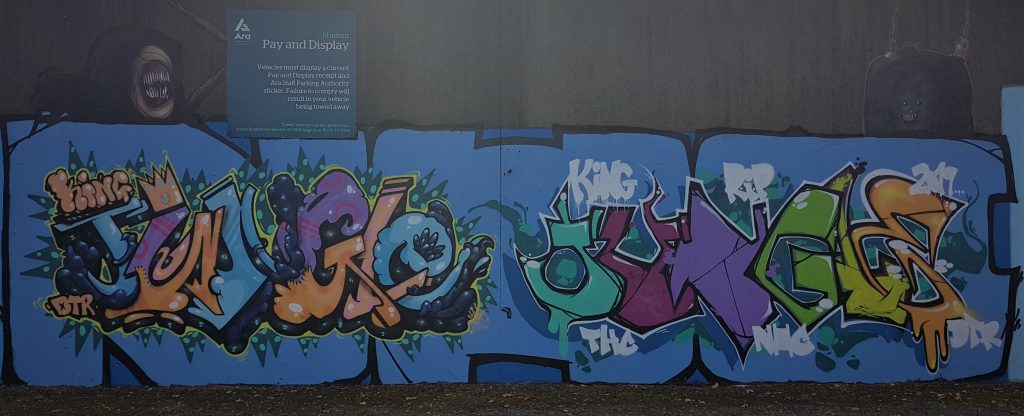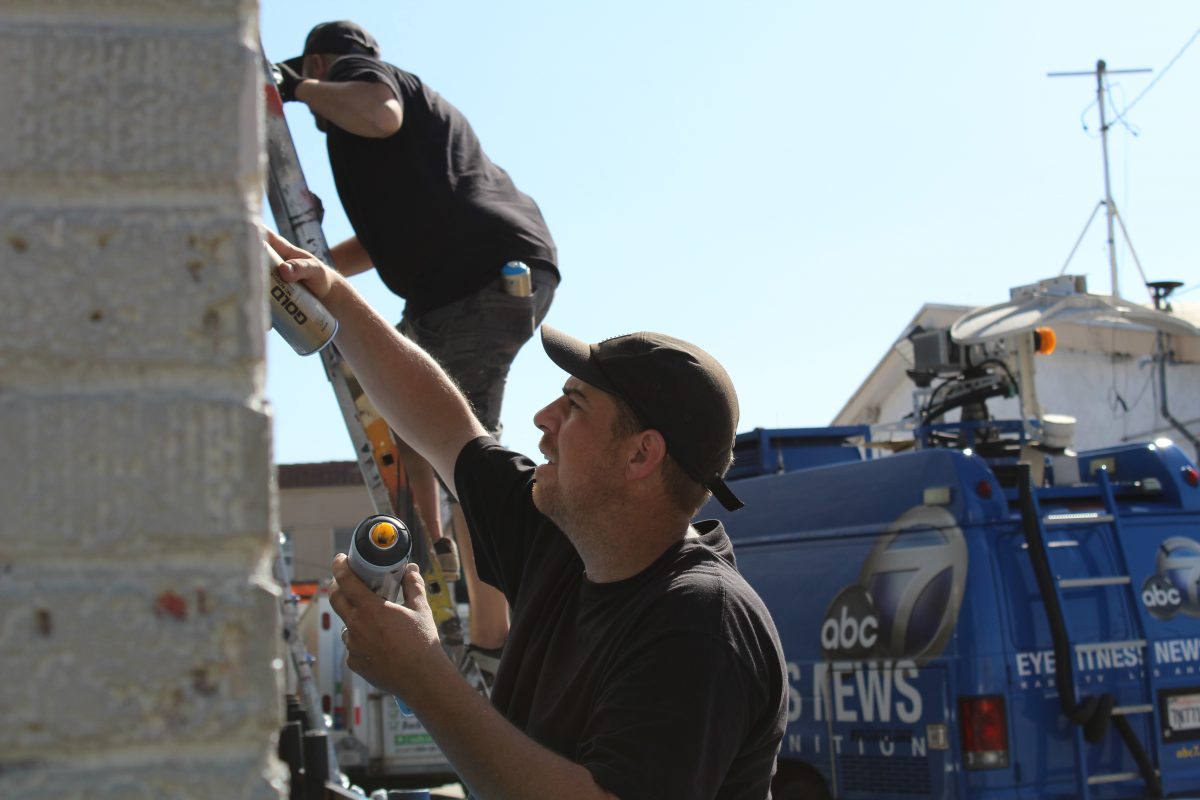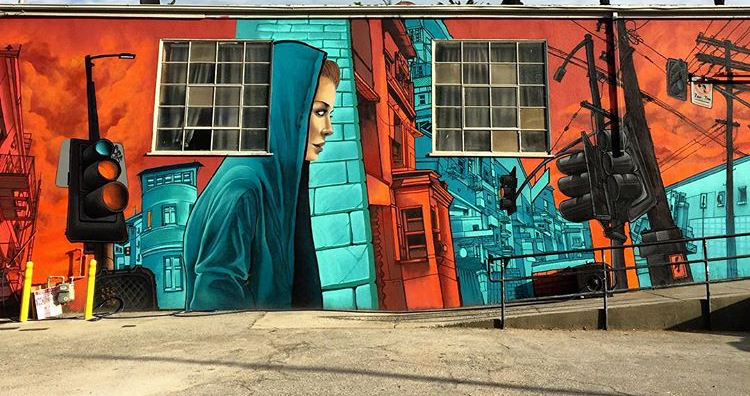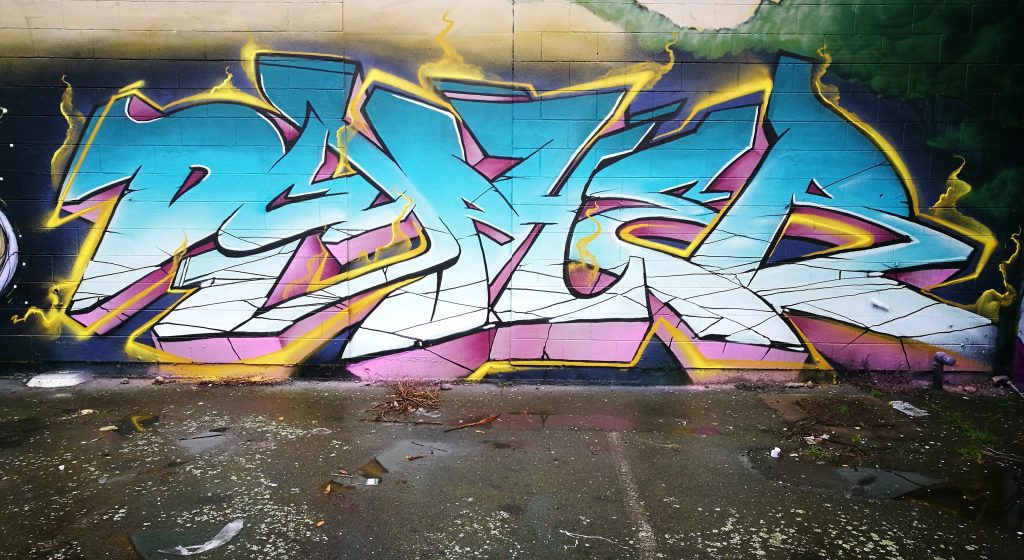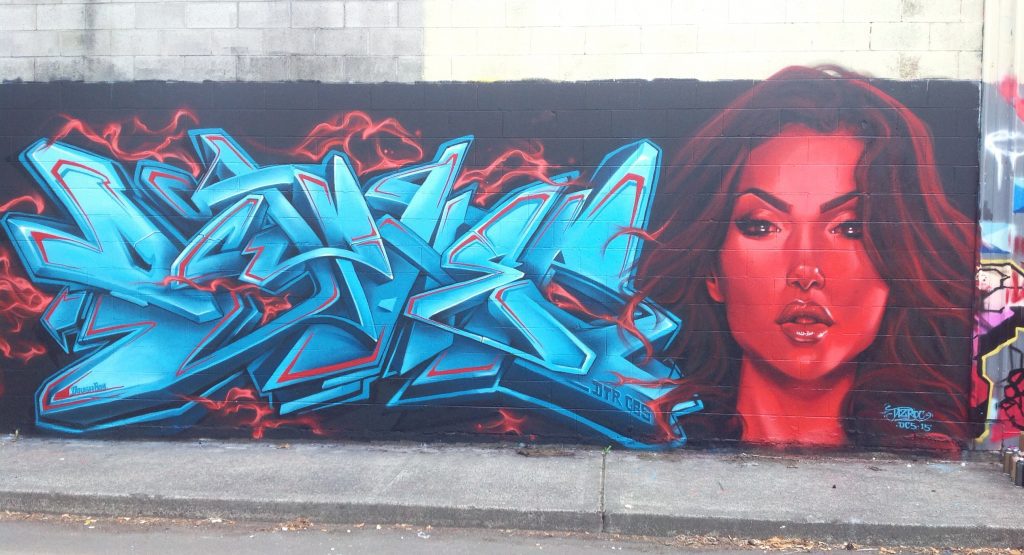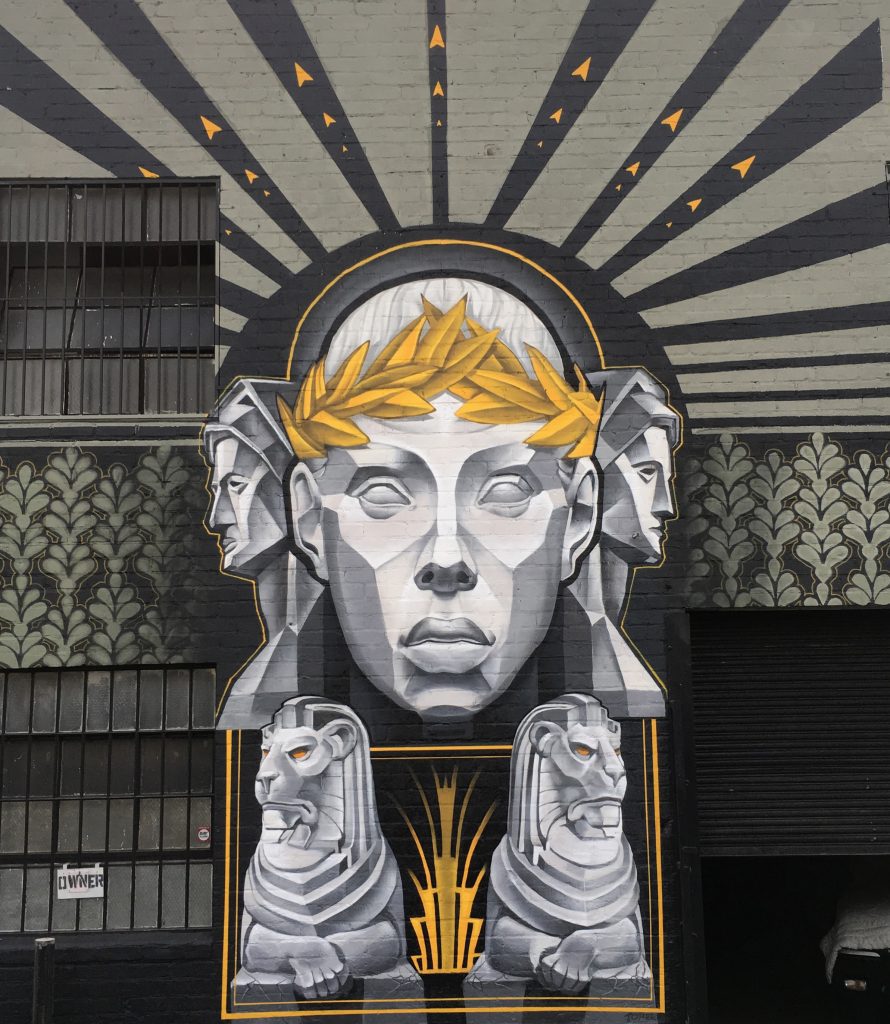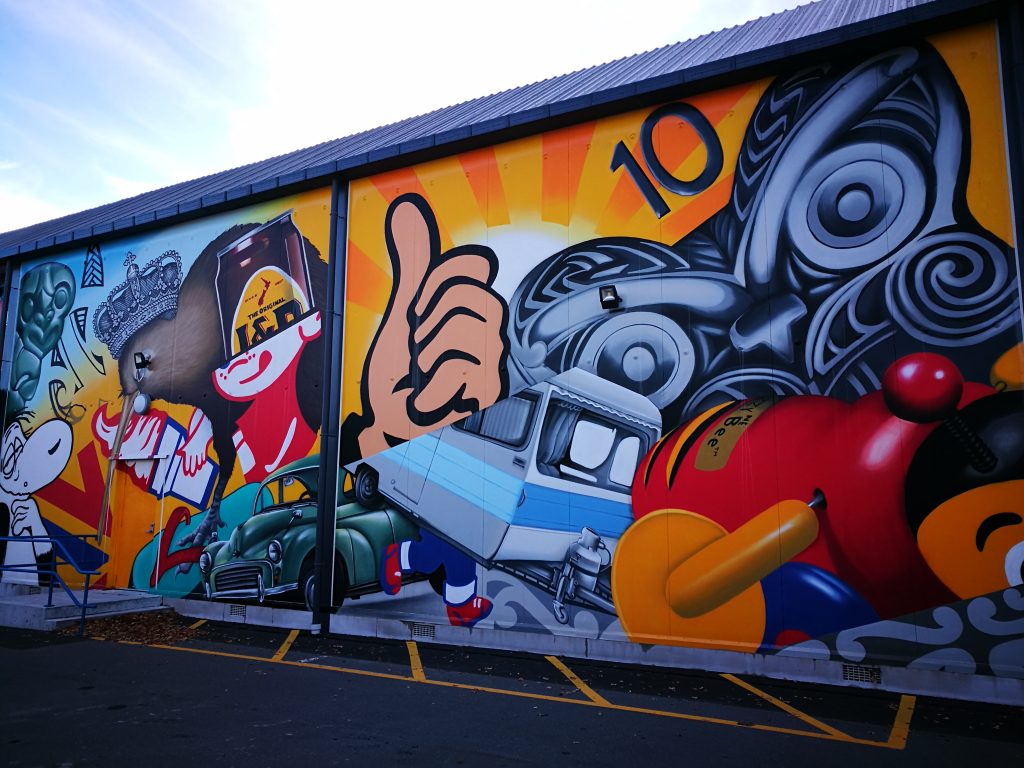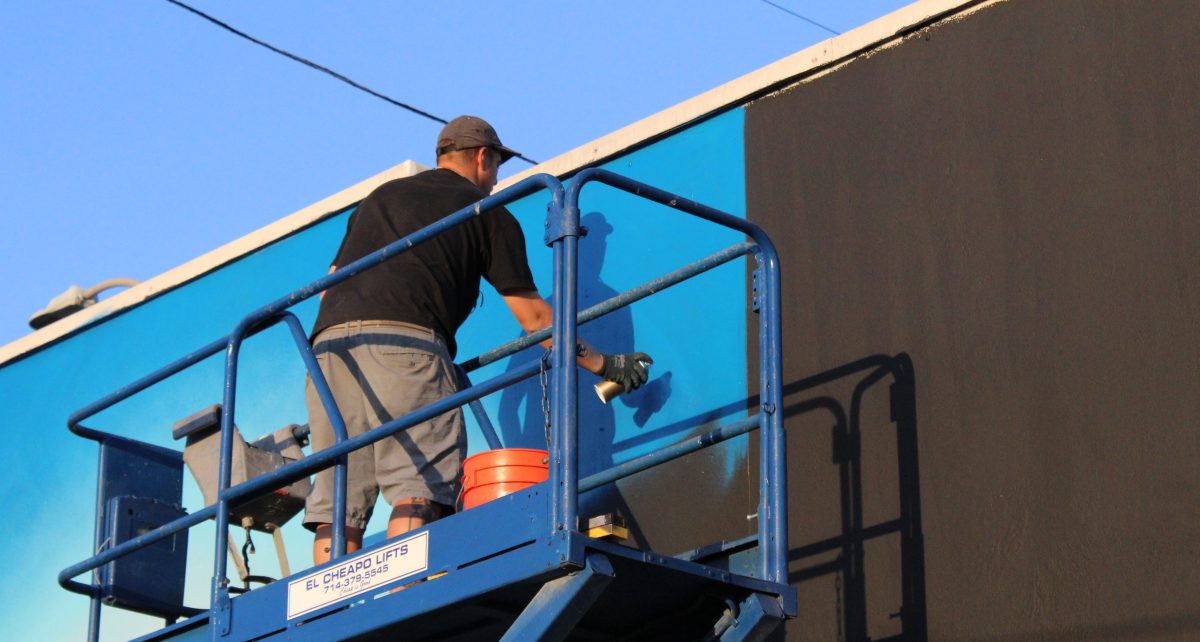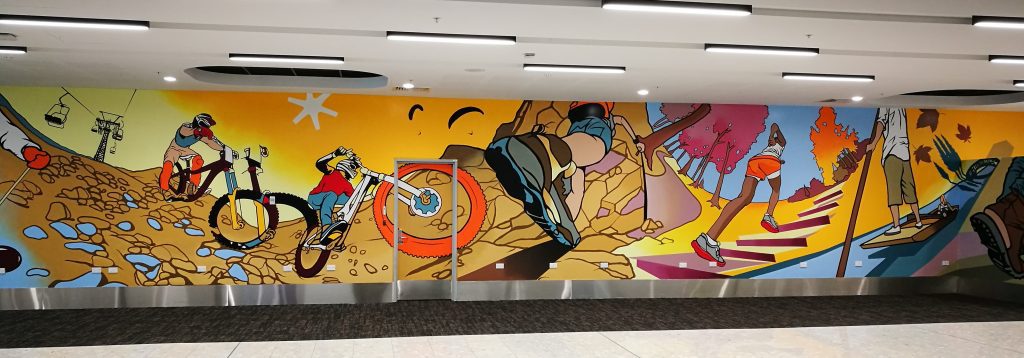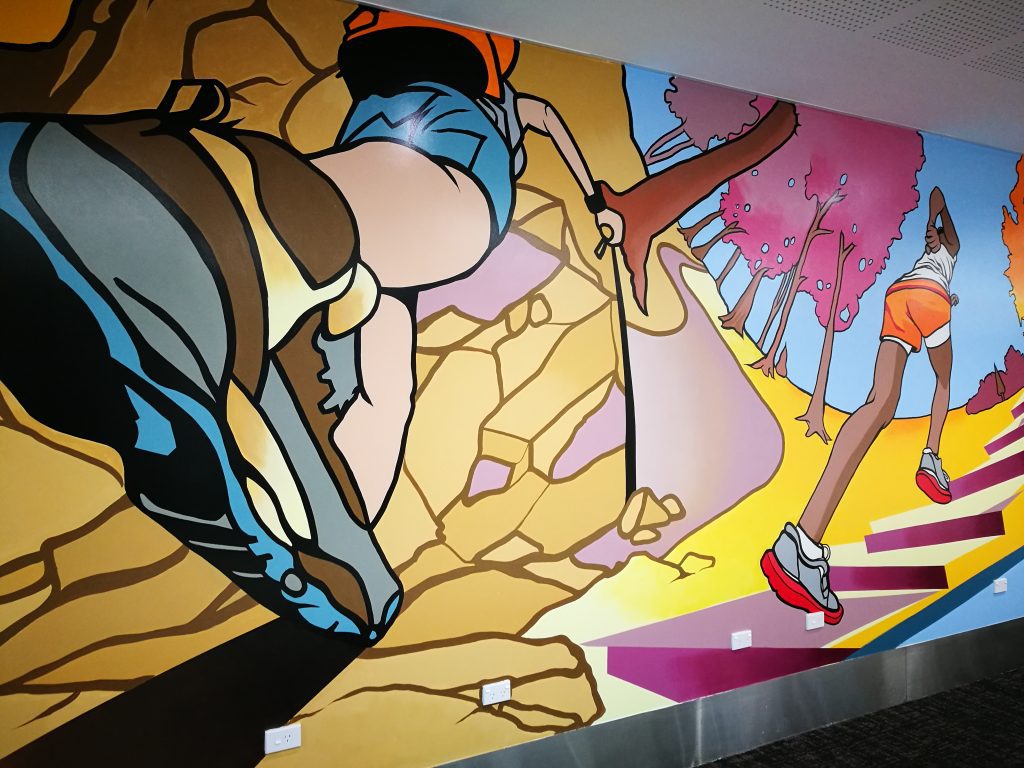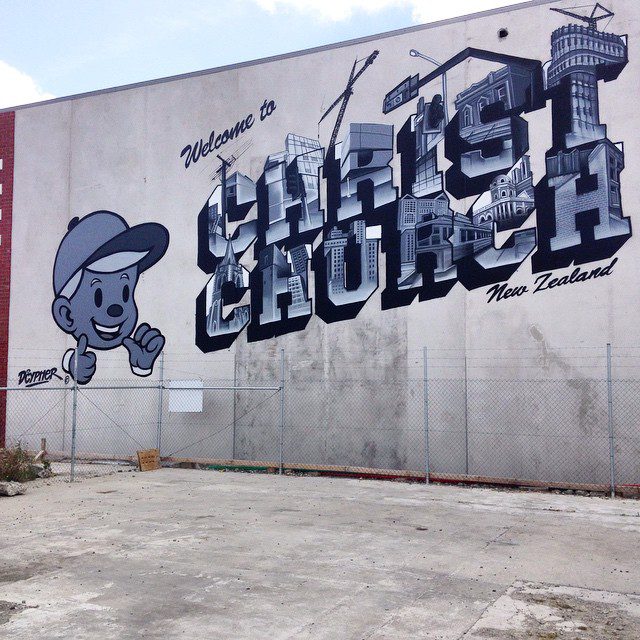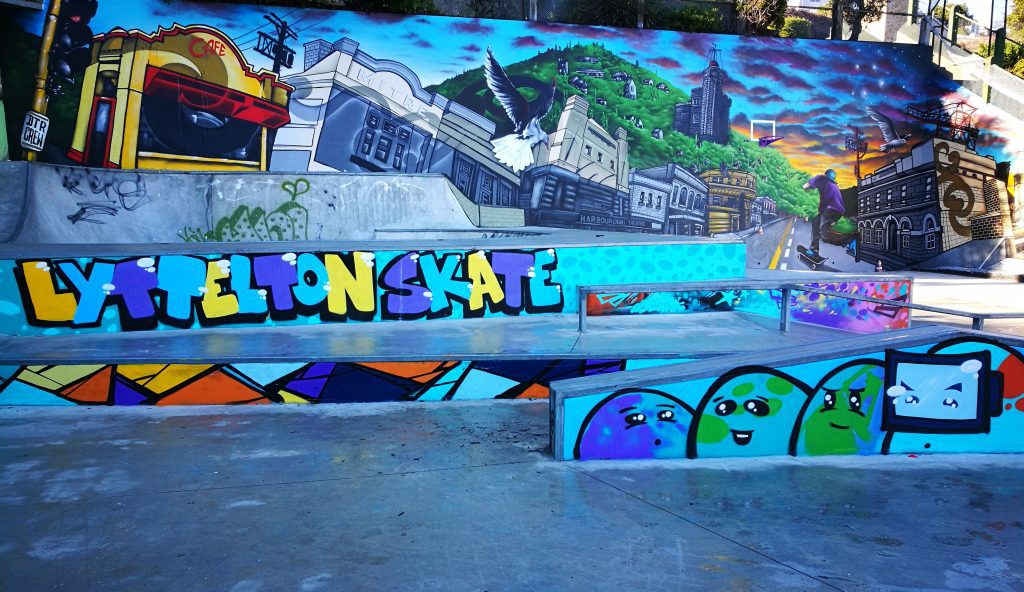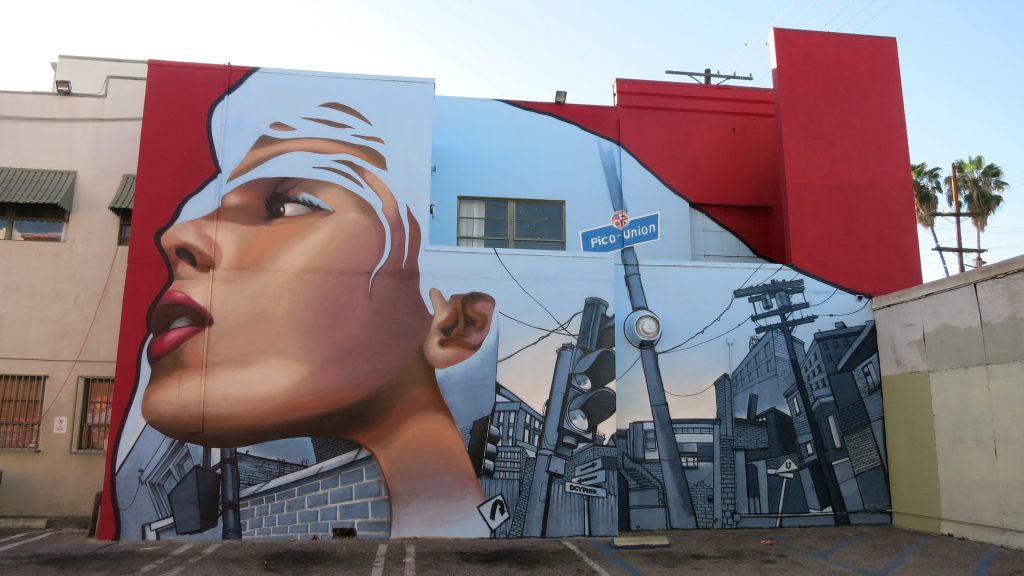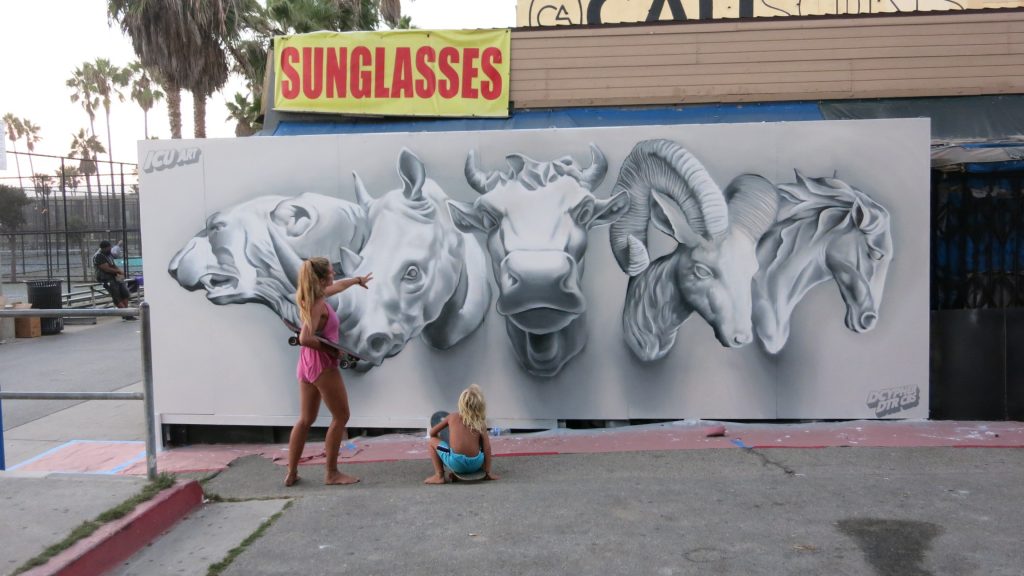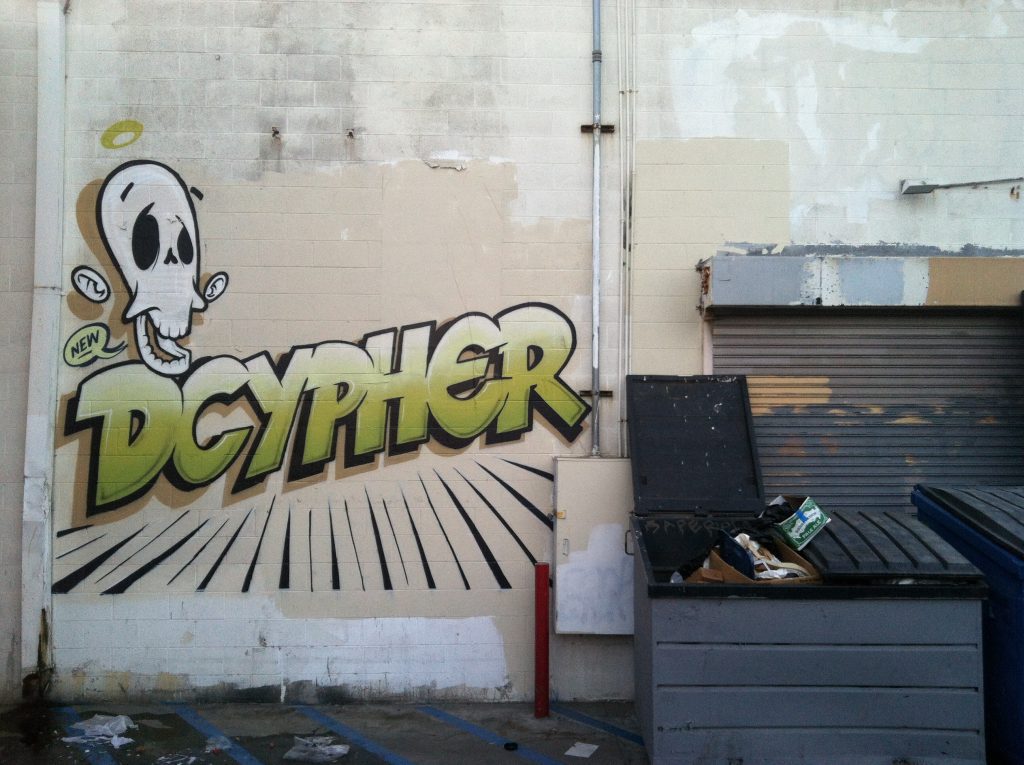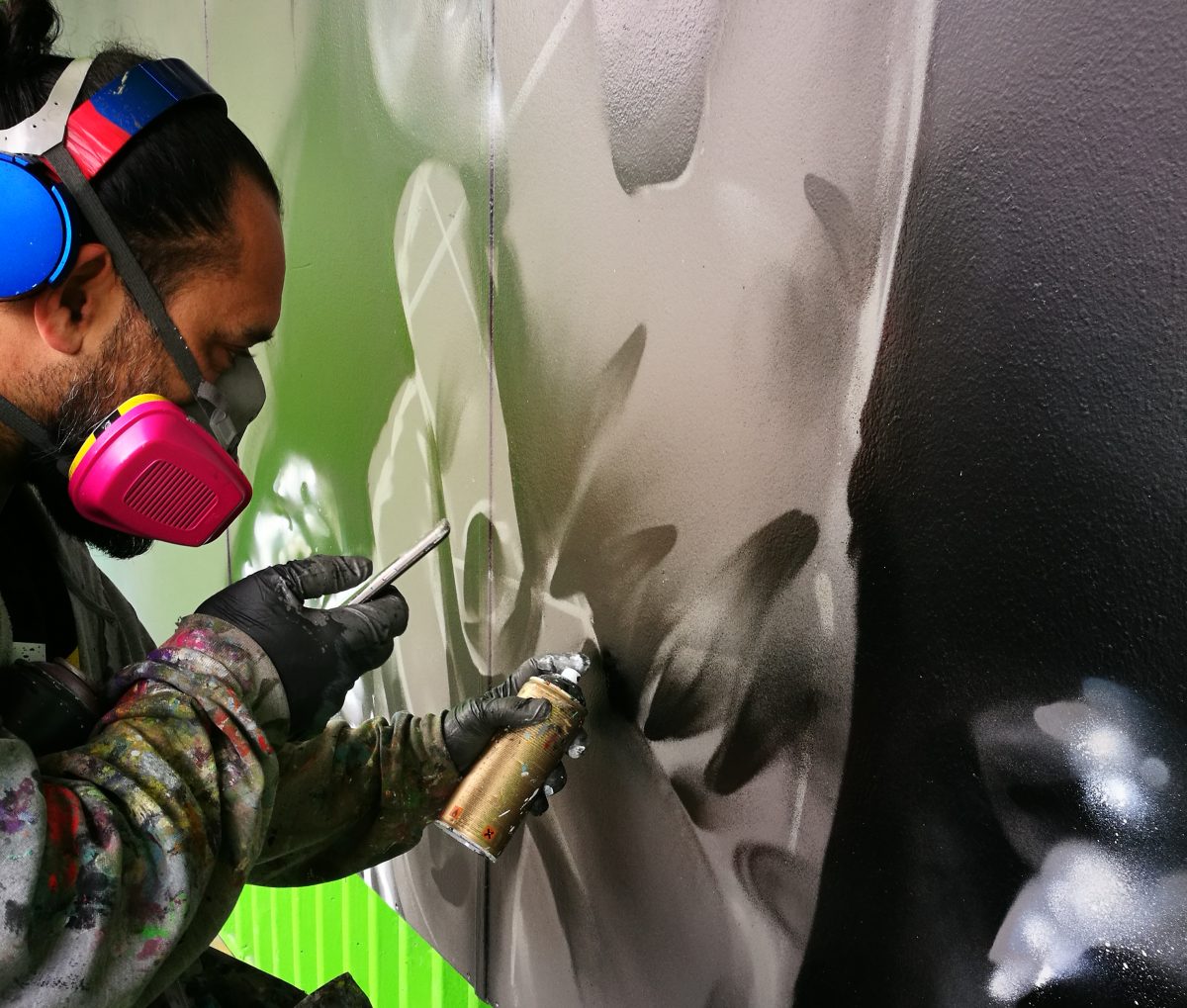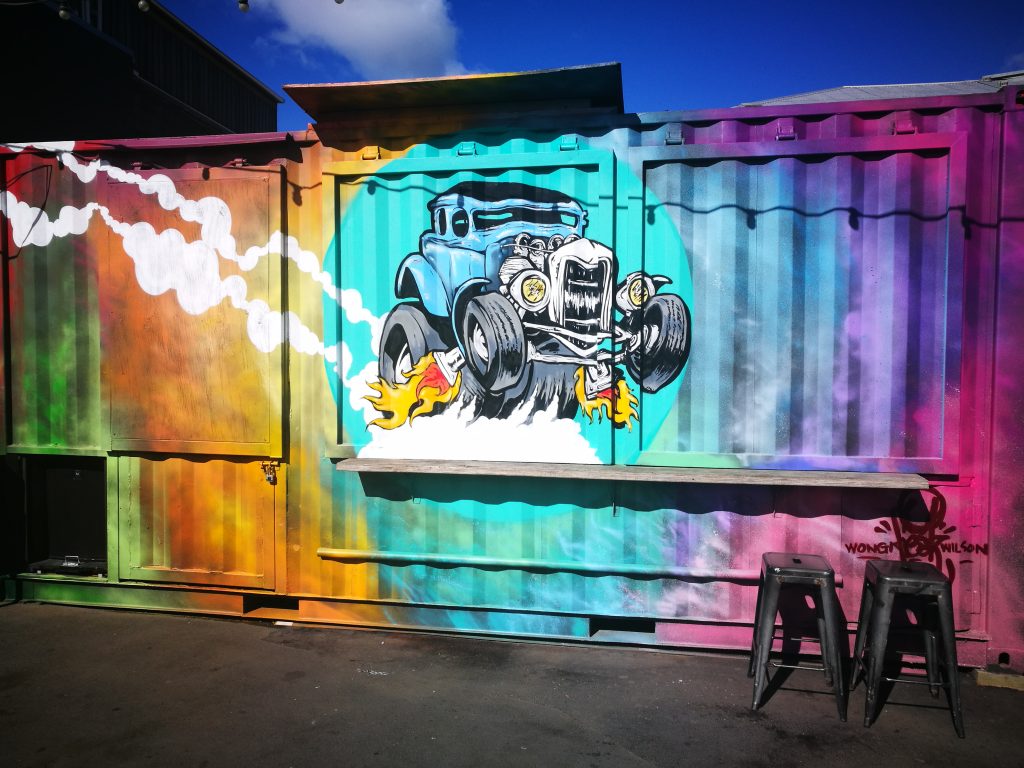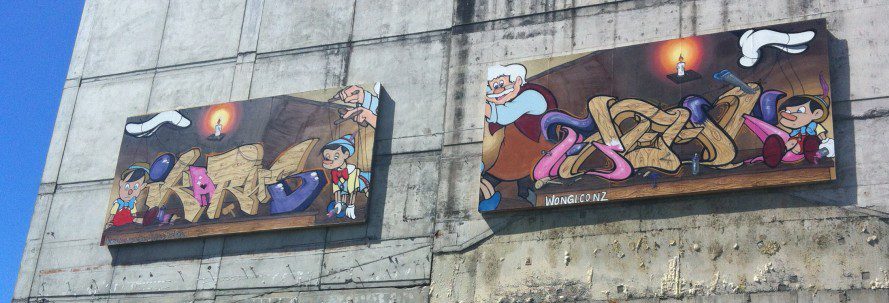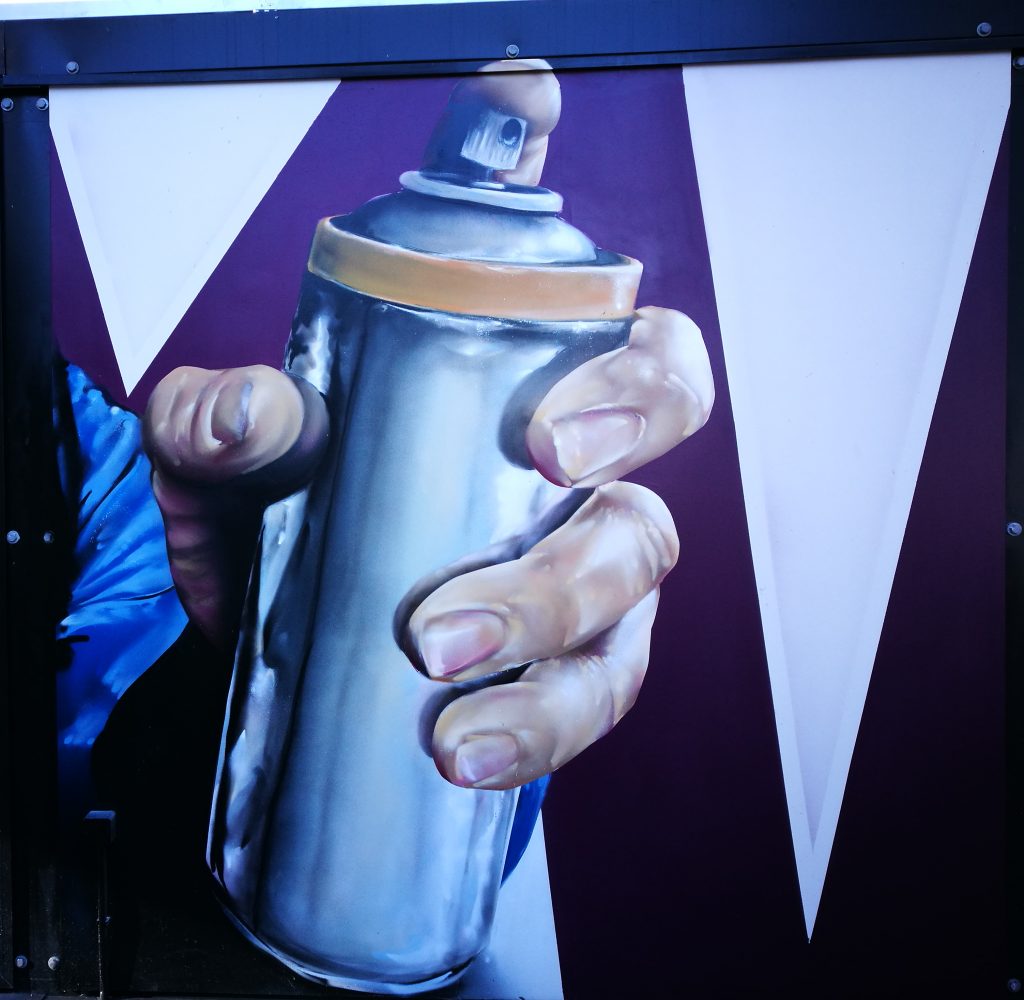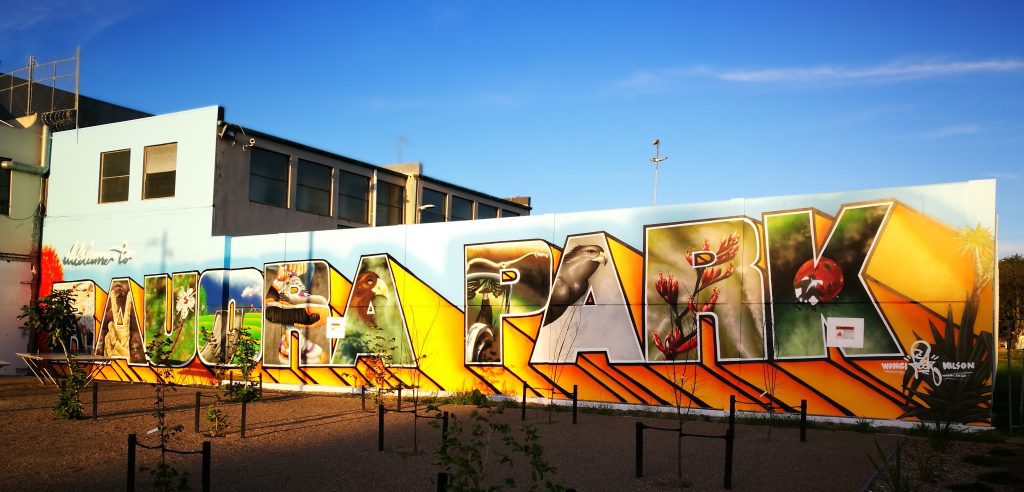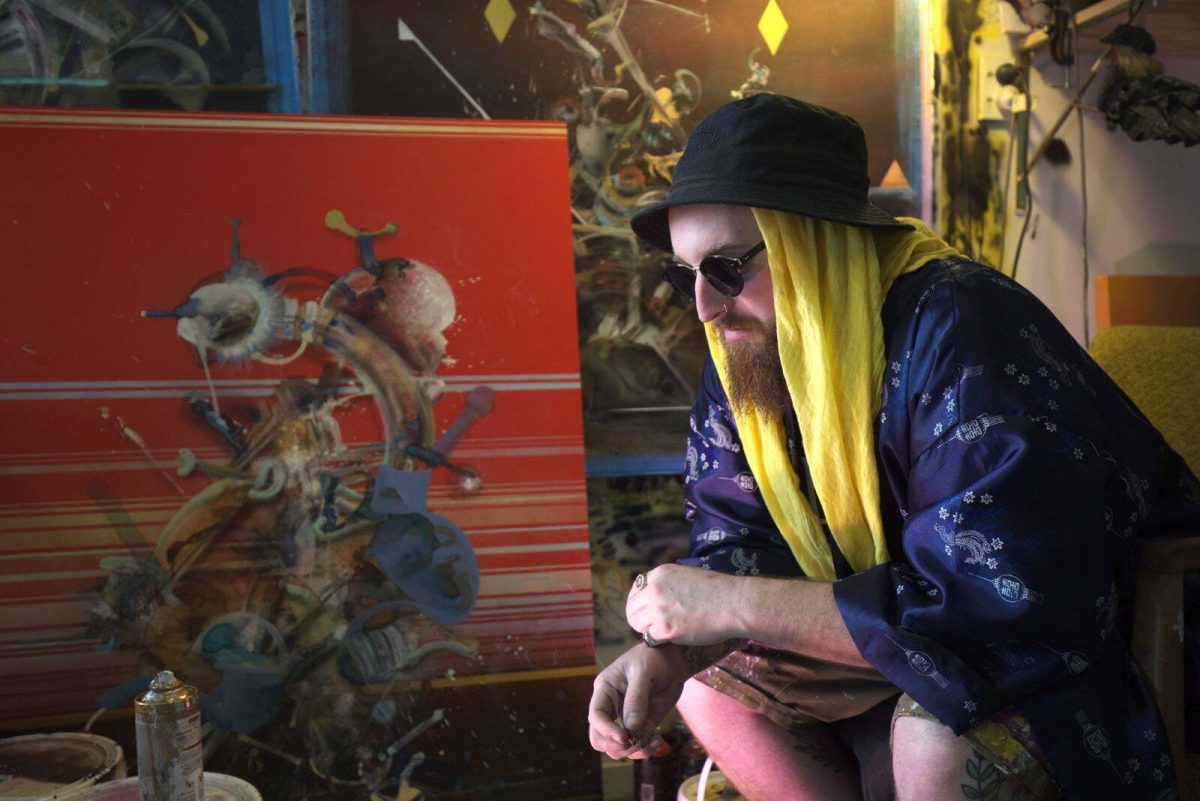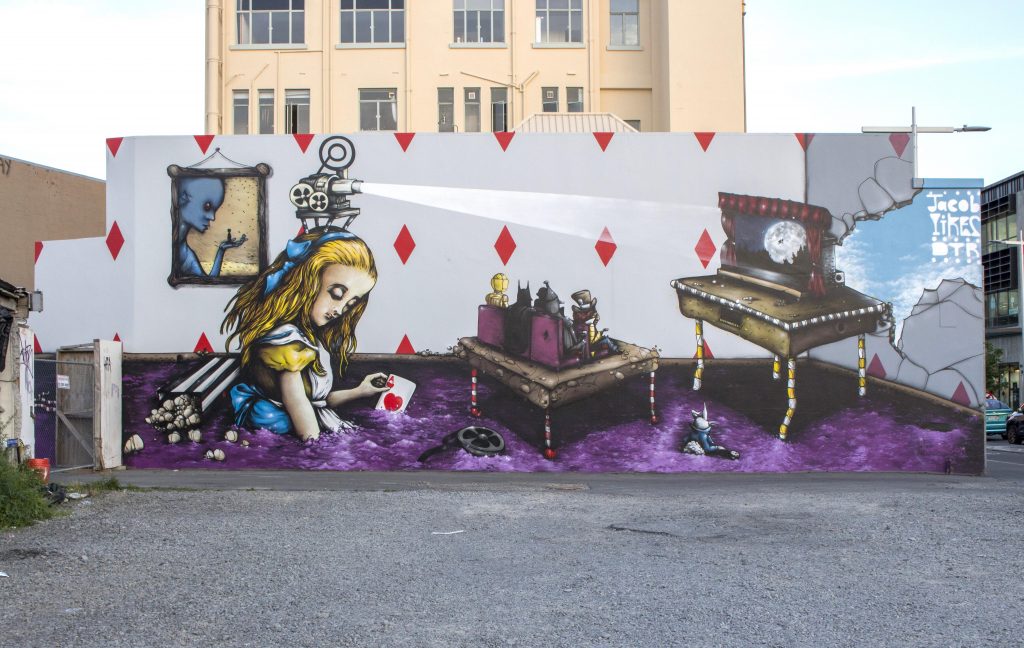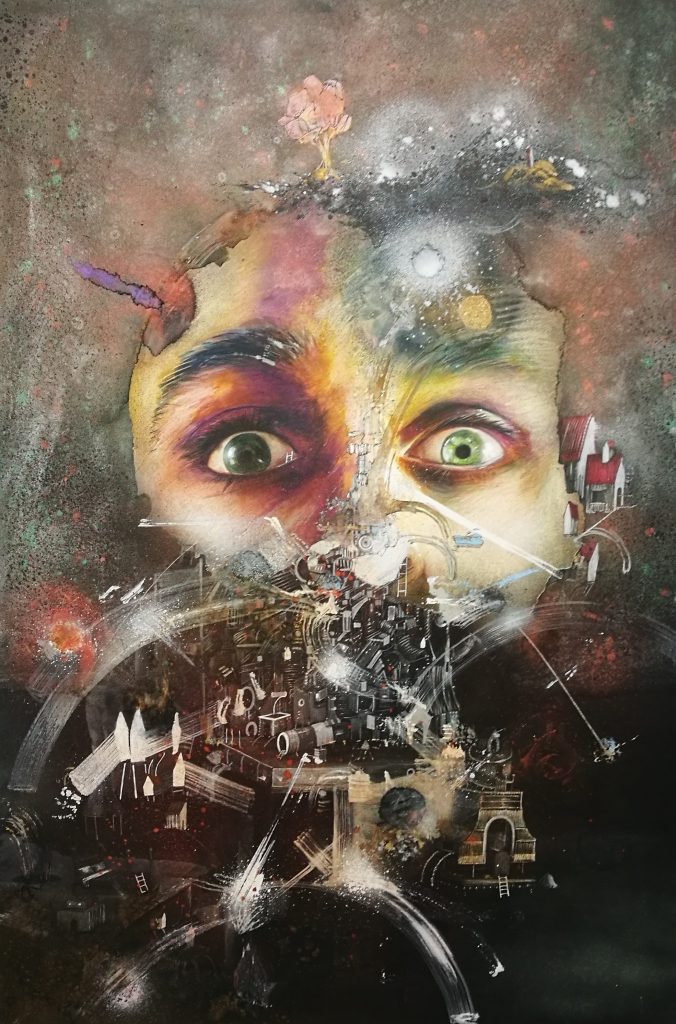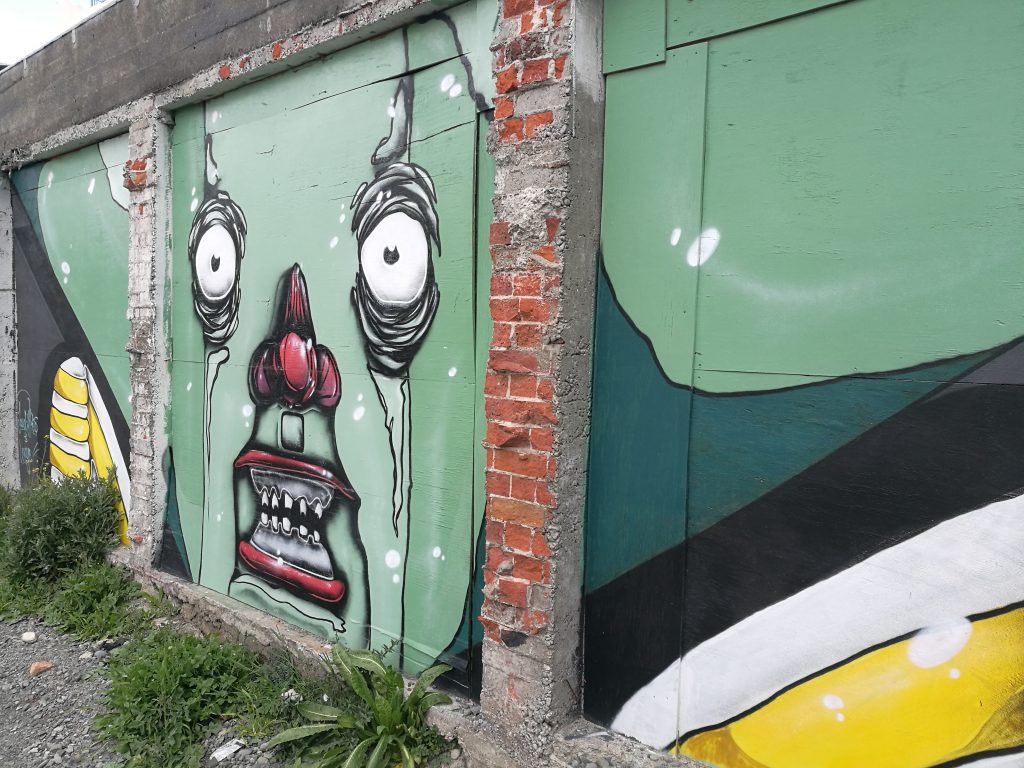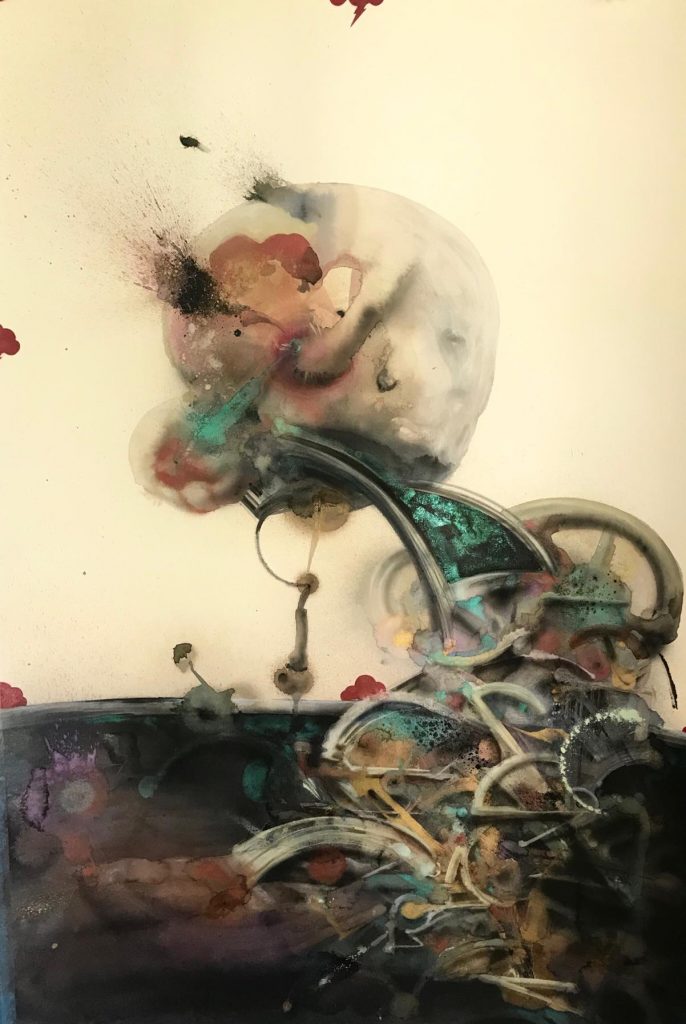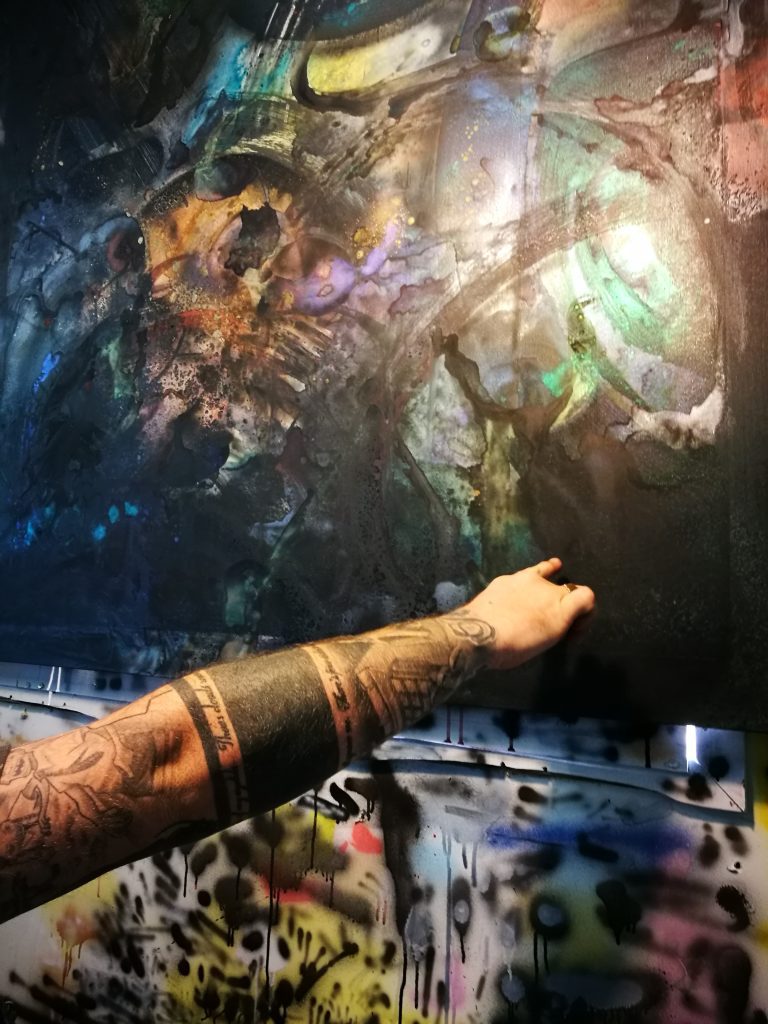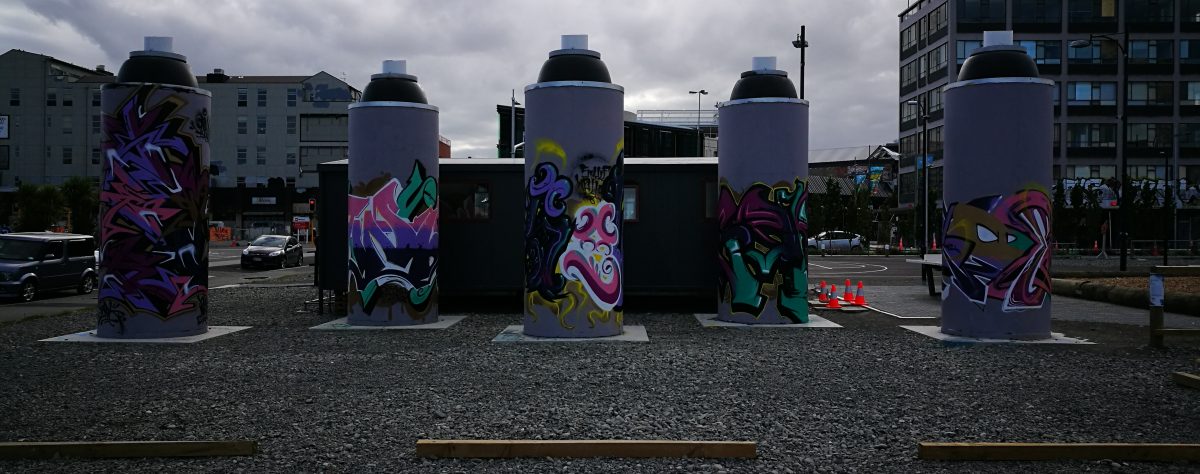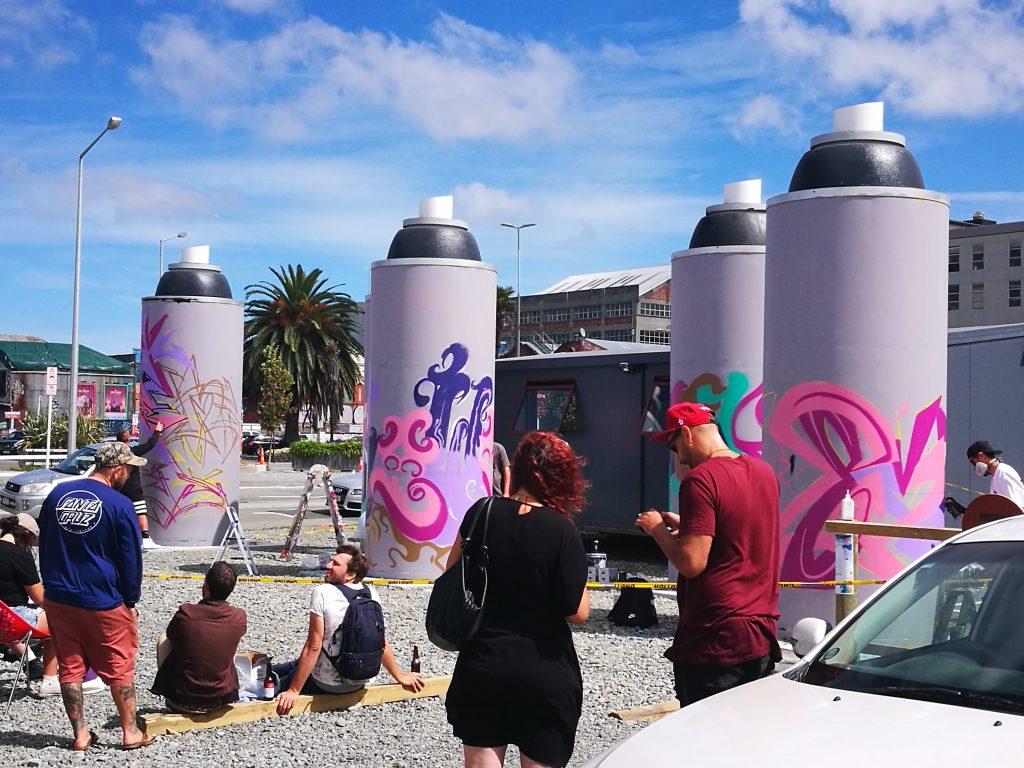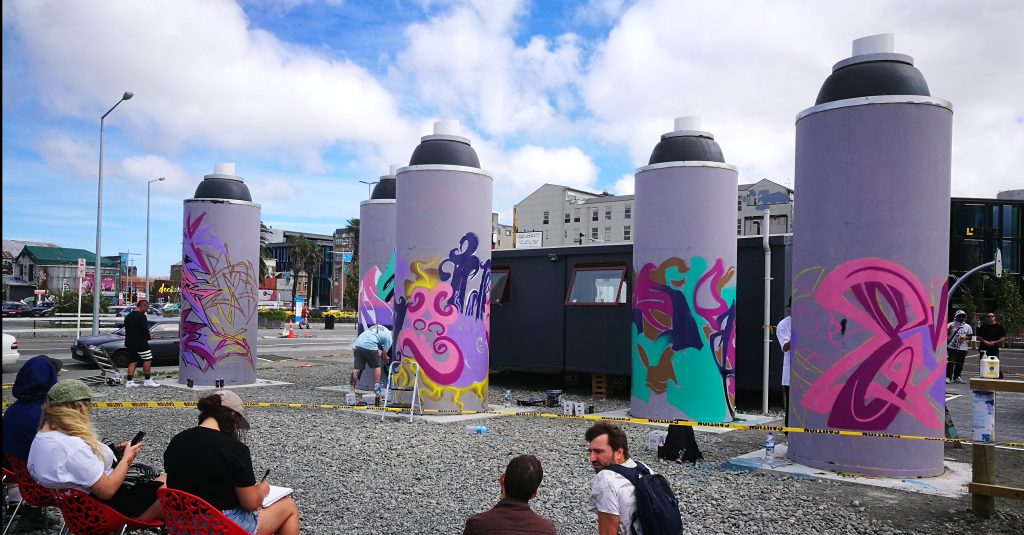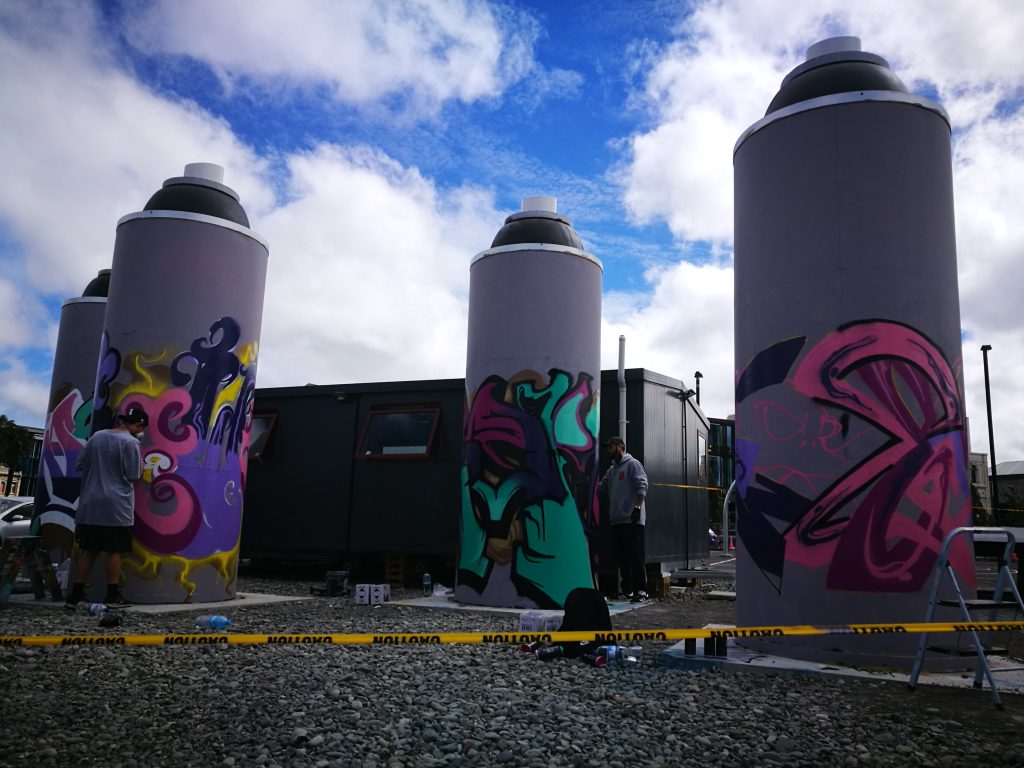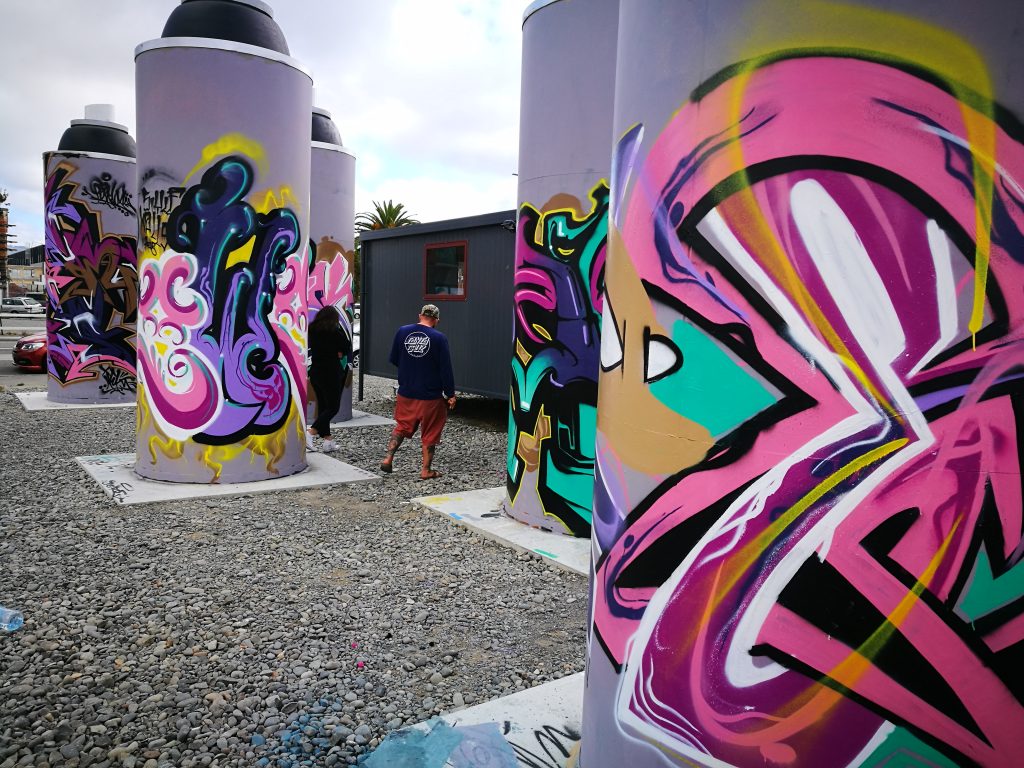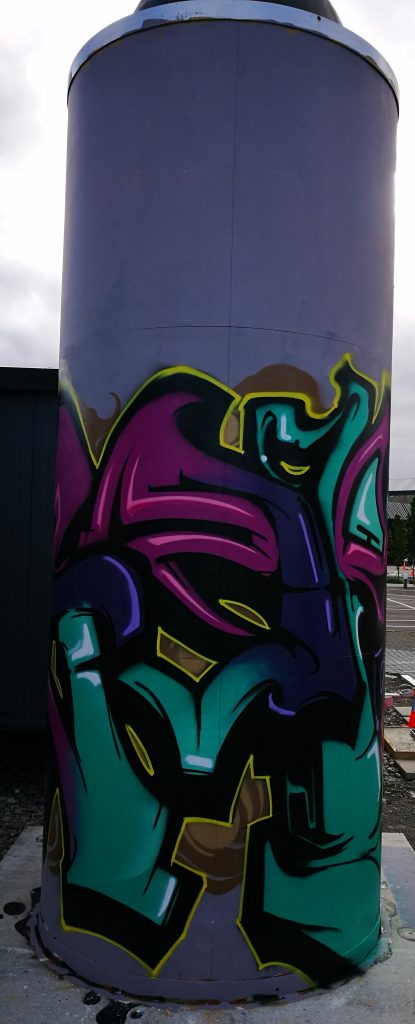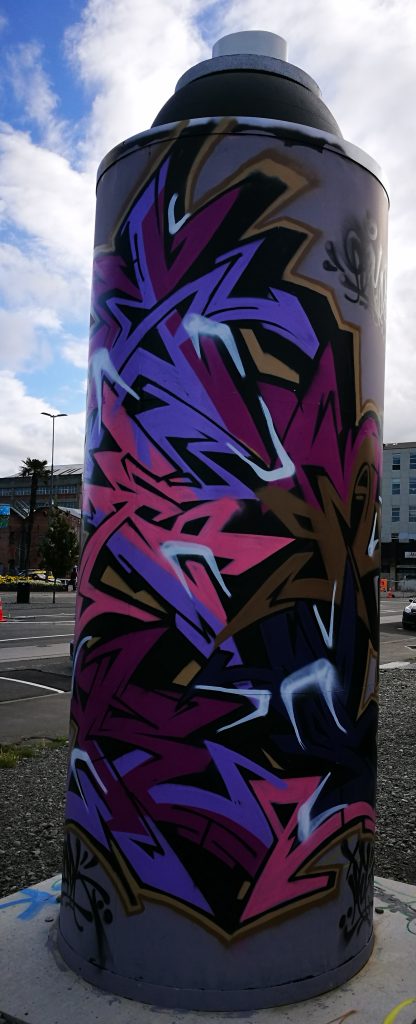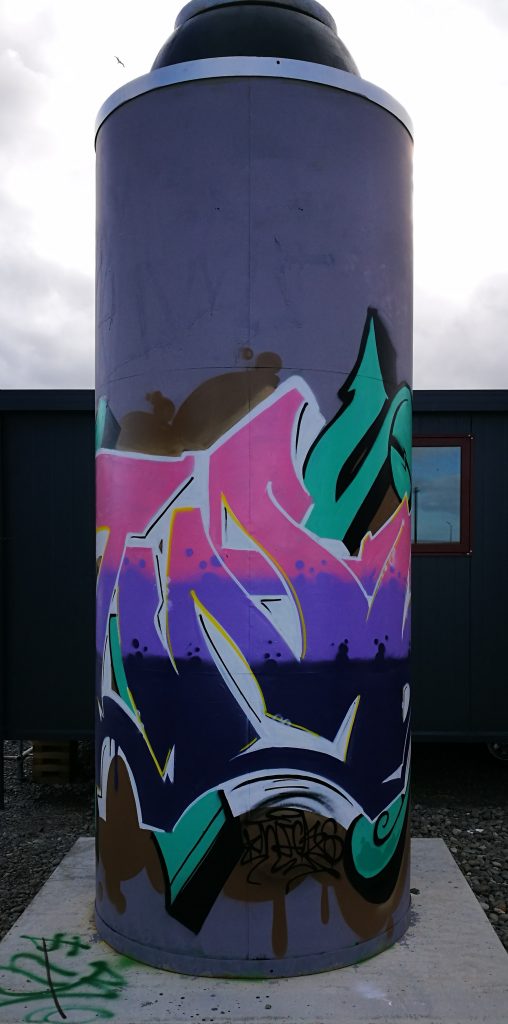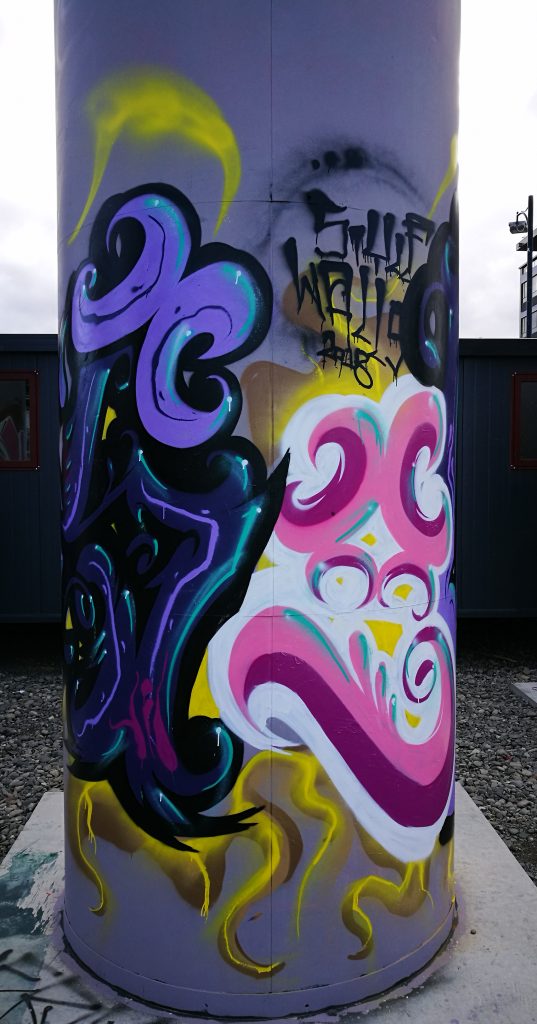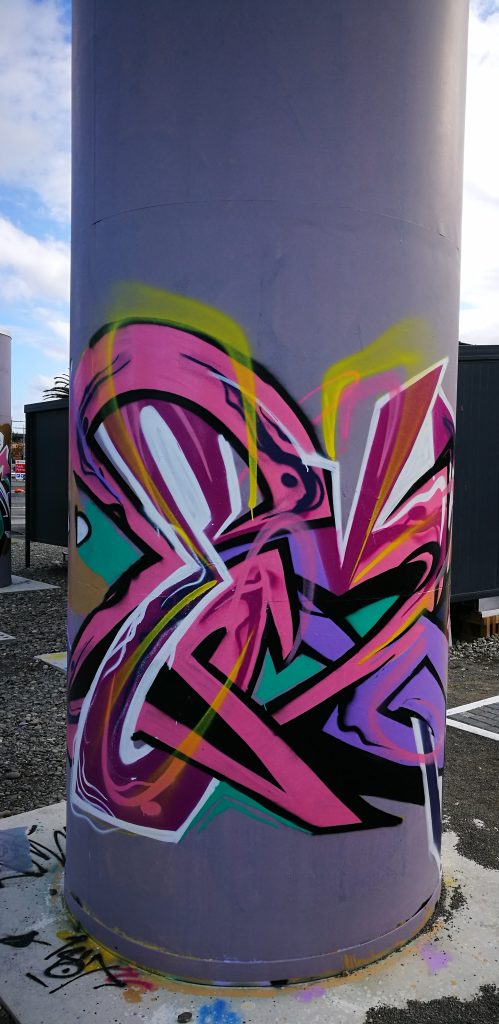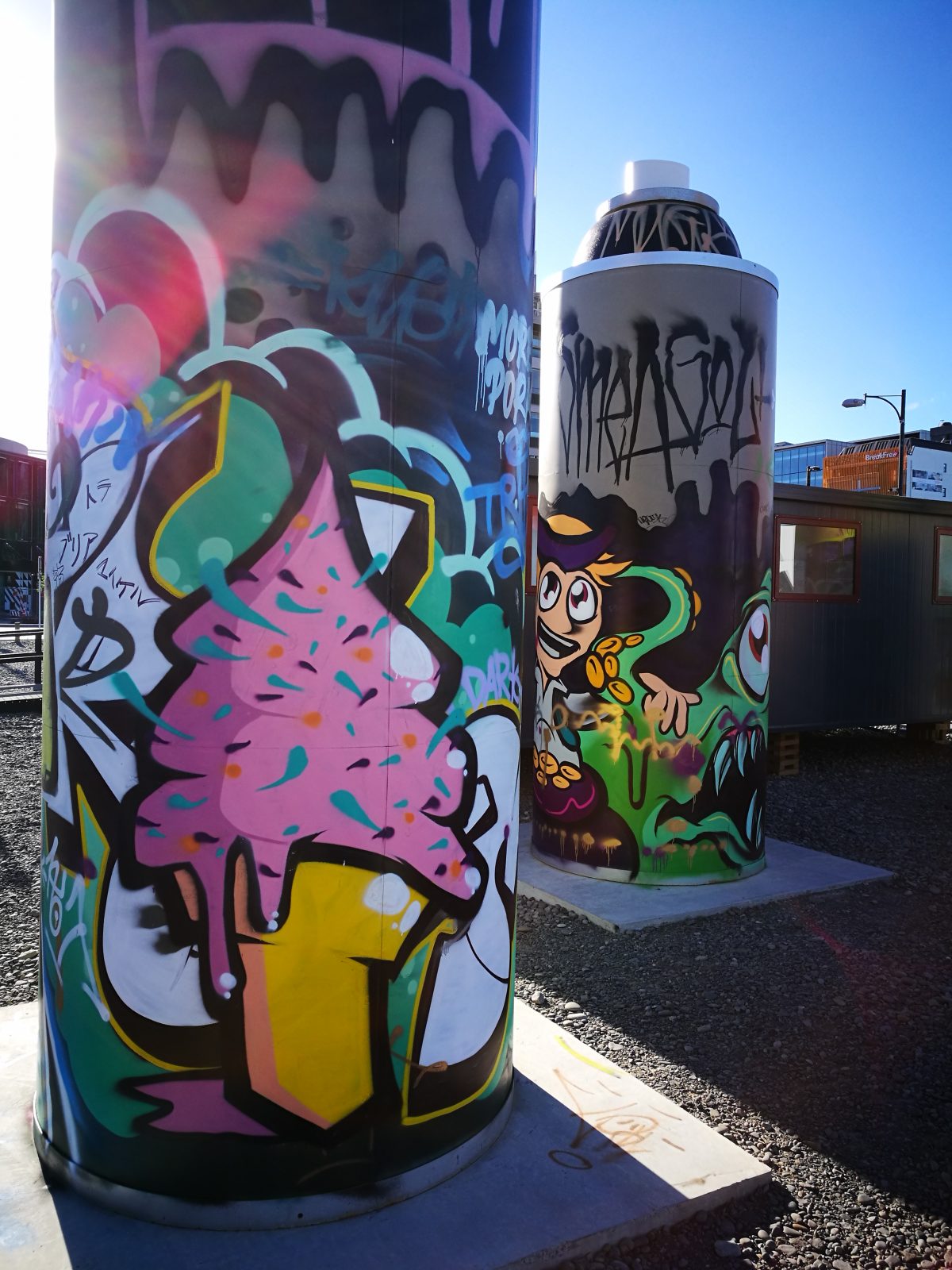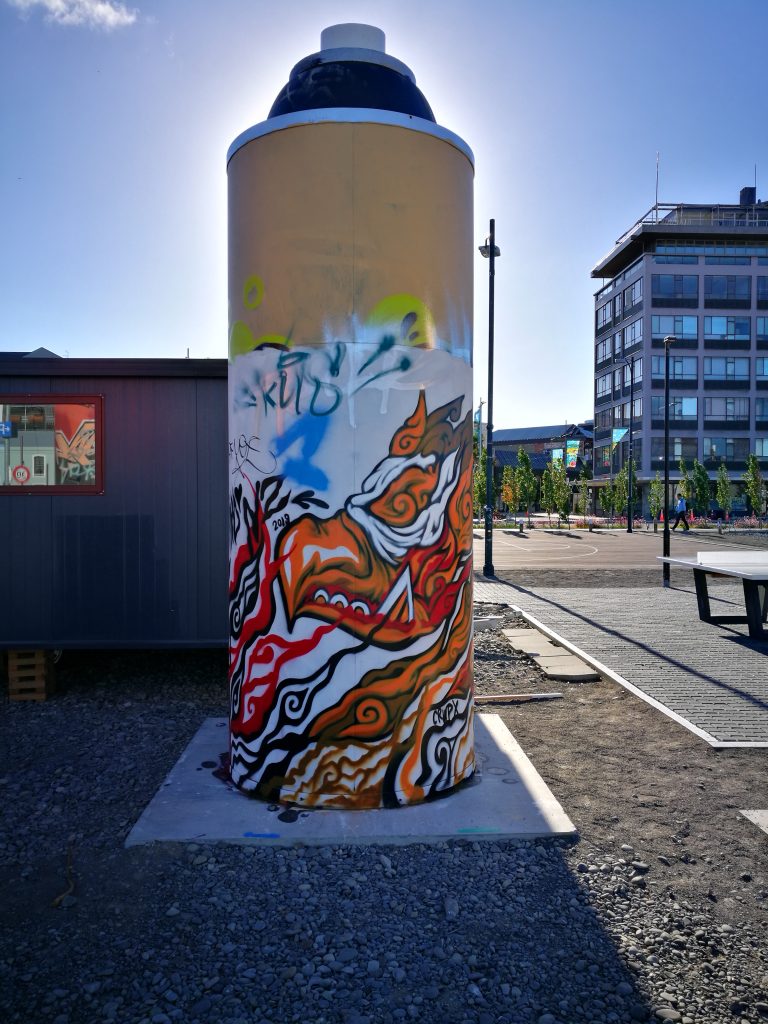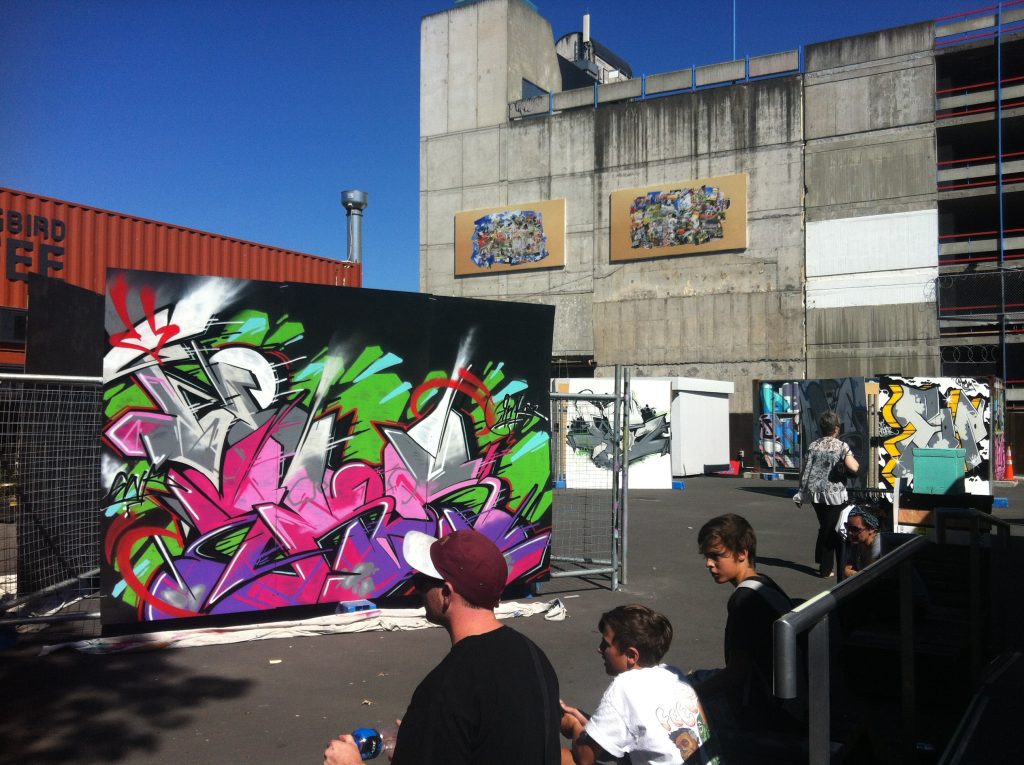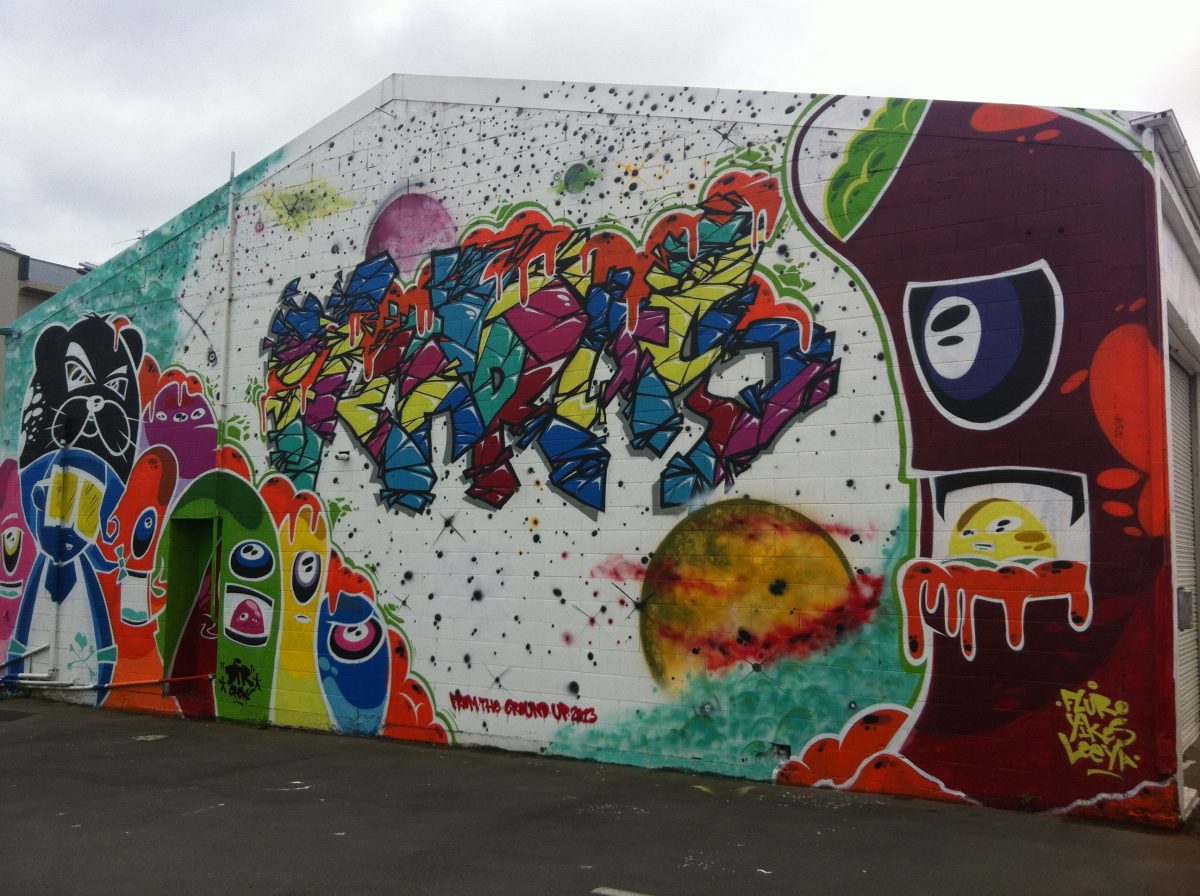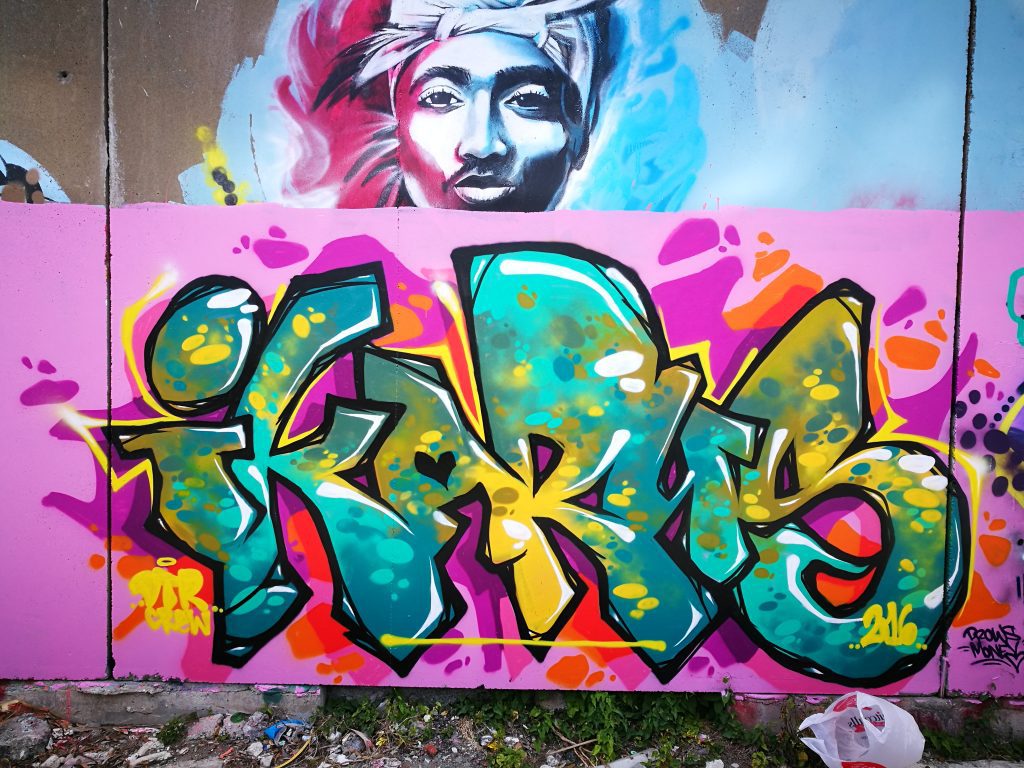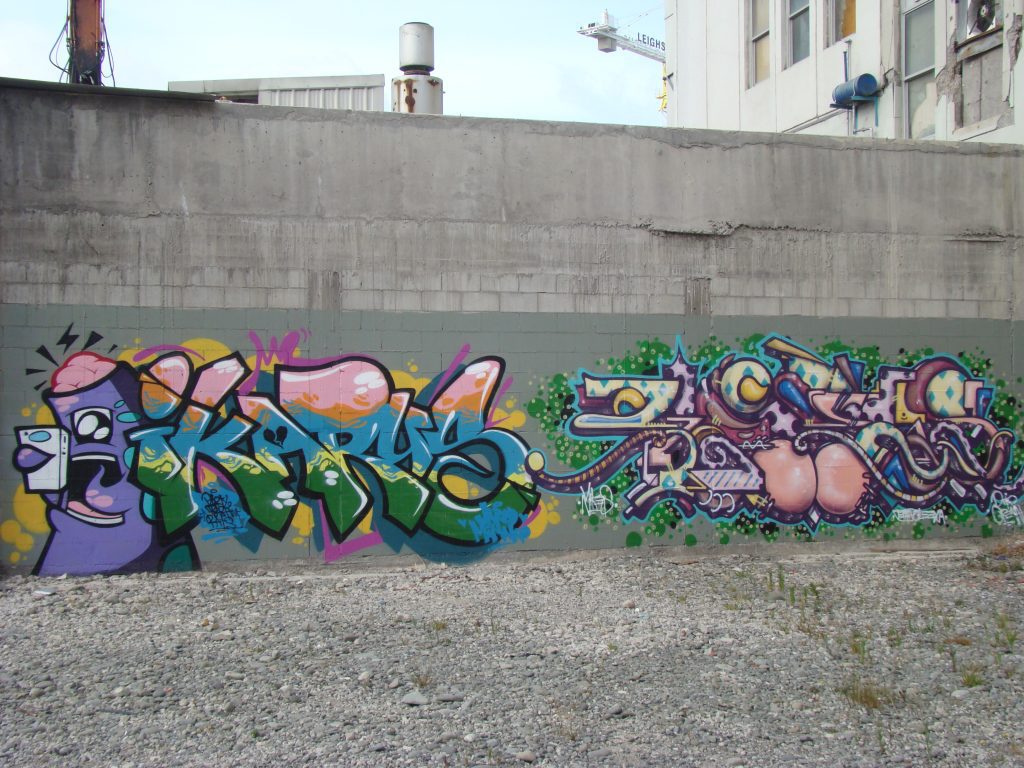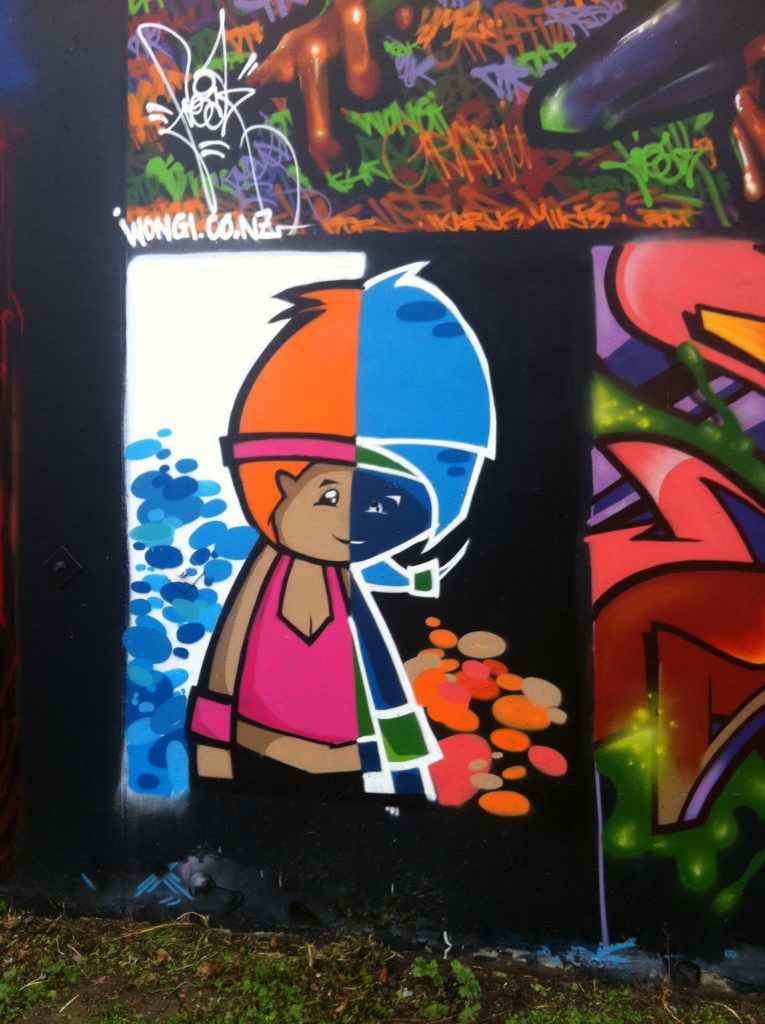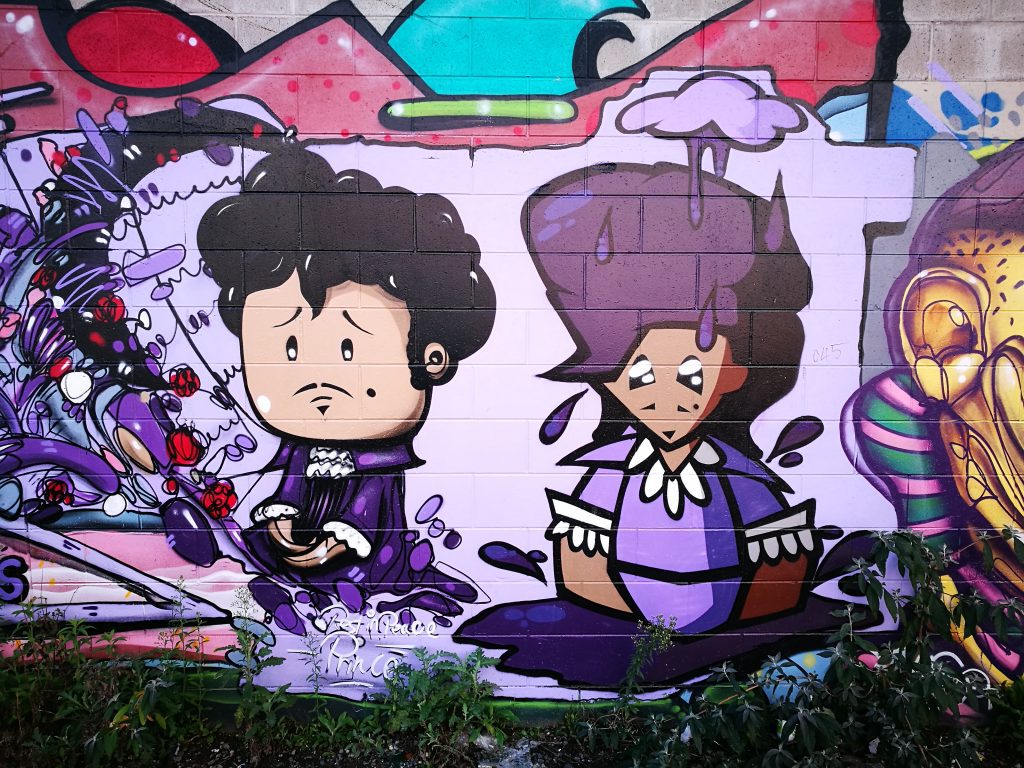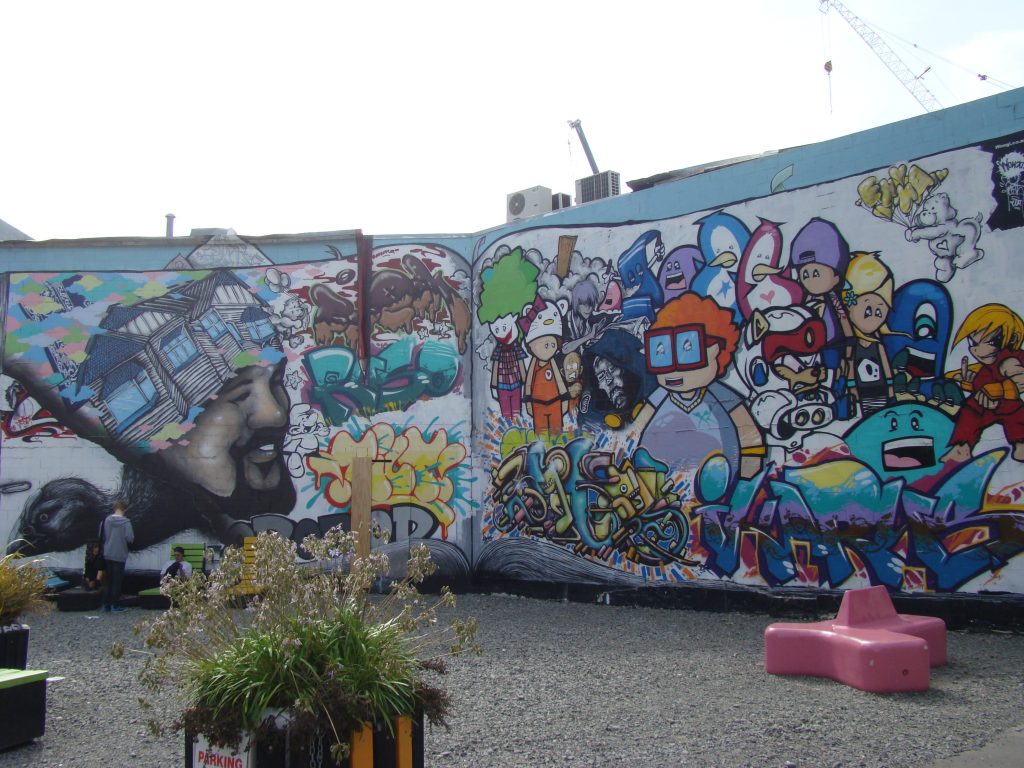With 2019 now wrapped, we decided to round up a number of our friends to take stock of the year that was. But then we realised it is also the end of the decade, and to be fair it has been a pretty challenging, fascinating and memorable ten years, especially for the residents of Ōtautahi Christchurch. We asked this selection of artists and creatives about their own experiences, the people and work that inspired them, the events that mattered and their hopes for the future. The results were wide-ranging, although, of course, there were a number of events, artworks and ideas that came up repeatedly, highlighting the impactful events and developments that have coloured our collective consciousness since 2010…
Reuben Woods – Writer (@bolsamatic)
- What has been your personal highlight of 2019? There have been a few, from working on Urban Abstract, to curating Dr Suits (Nath Ingram) and Josh O’Rourke’s projects in New Brighton, but probably top of the list was having work published in the Nuart Journal…
- What piece of someone else’s art in Christchurch has been your favourite this year? It may be that they are fresh in my memory, but TOGO’s rooftop piece to the South West of the city is a favourite, the angular FOLT slaps are rad, and pretty much anything by Vesil over this year.
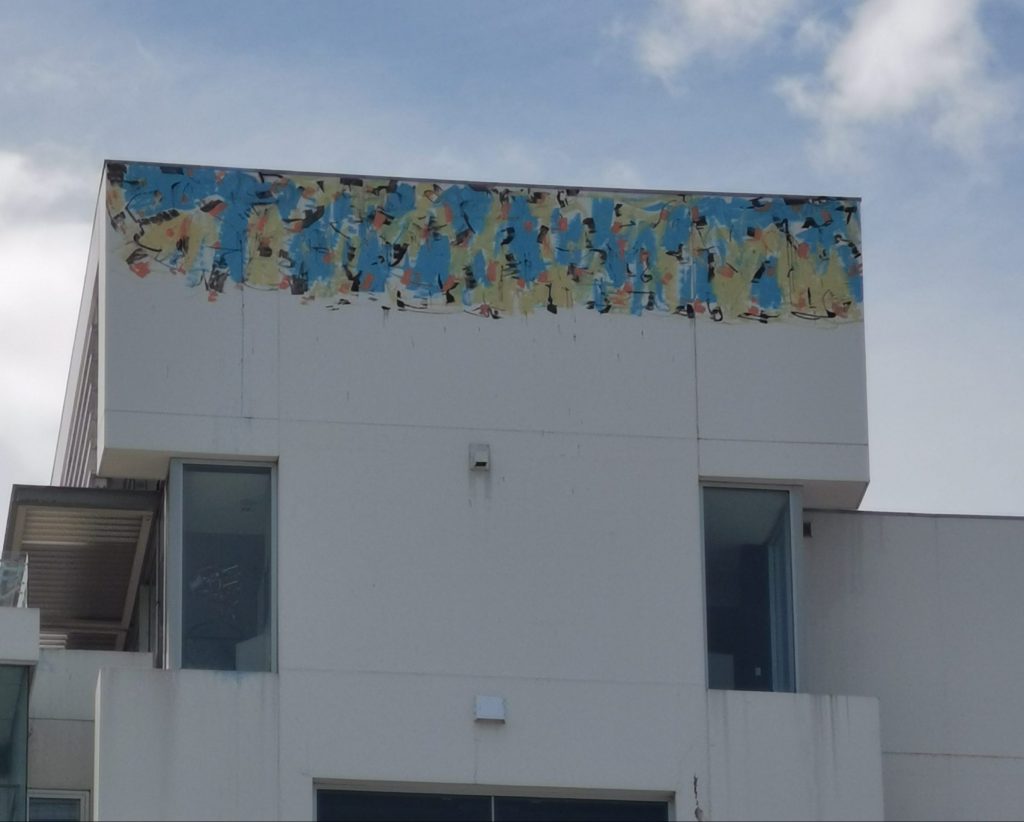
TOGO, central Christchurch, 2019. - What piece of someone else’s art outside of Christchurch has been your favourite this year? Aryz’s work has been stellar, Selina Miles’ Martha: A Picture Story was great, I love Elliot O’Donnell’s new direction with the glitch studies of urban surfaces, and Bond’s graffiti pieces are super fresh as well. I also really enjoyed Nike Savvas’ Finale: Bouquet at Te Papa…
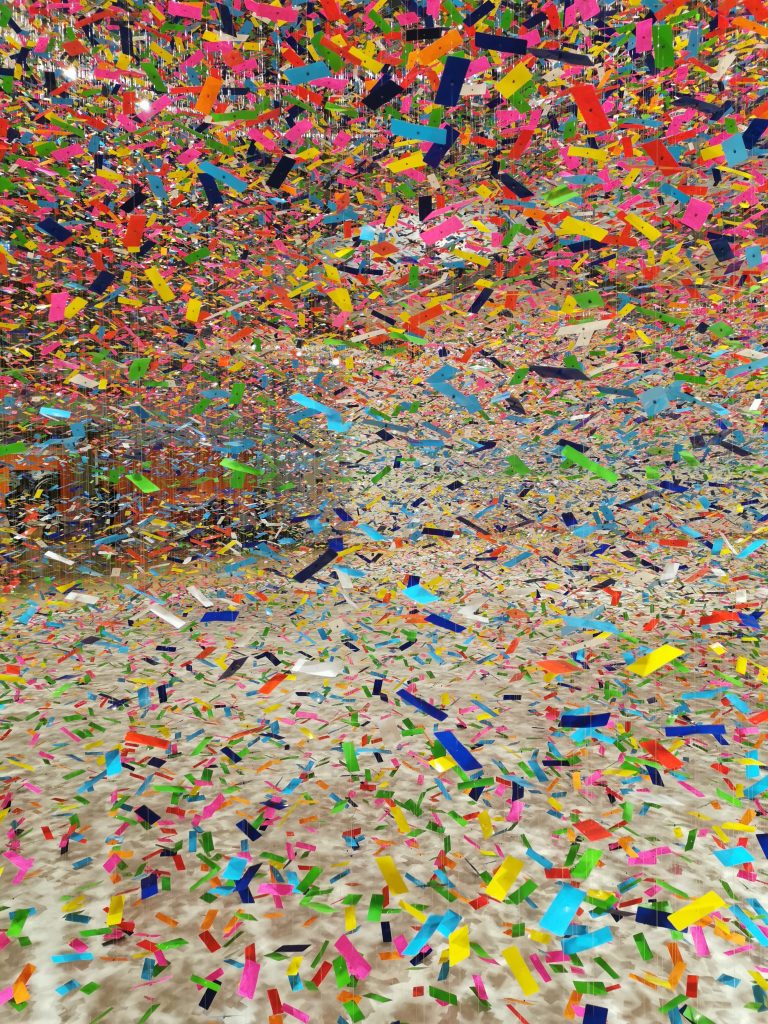
Nike Savvas’ Finale: Bouquet at Te Papa, 2019. - What exhibition by an urban artist(s) has been your favourite this year? Urban Abstract was the culmination of a long process and it was so great to see it well received, as it wasn’t clear that there was a massive thirst for that style locally…
- It isn’t just the end of a year; it is also the end of a decade. What events or sentiments have defined the last decade for you? Obviously the earthquakes, and I think the March Terror Attacks signalled a change in the city’s psyche as well. More widely, the increasing division across the world, politically, economically and ideologically, cannot be ignored.
- What is the biggest artistic/pop cultural moment from the last decade? When Childish Gambino released the video for This Is America, it felt like a really impactful conflation of pop culture, art and social commentary that captured the zeitgeist. Locally, I don’t think I can go past what George Shaw and Shannon Webster of OiYOU! pulled off with RISE here at the Canterbury Museum…
- Which artist or artists have stood out over the last decade? Internationally, Vhils, Aryz, Revok, Stoop Kid, Nina Chanel Abney, Askew, Dside, Katsu, Steve ‘ESPO’ Powers, Timothy Curtis, Deconstructie, Connor Harrington… So many. And of course, locally there have been so many people who have left their mark in the streets, from little tags to big walls, I couldn’t possibly name everyone…
- Lastly, what do you hope 2020 has in store, personally and for the local scene? I really hope the energy that the city saw for a sustained period can be recaptured, with things happening not just within commissioned frameworks, but also more organically, especially as the city evolves into a ‘finished product’ to contest. To see local artists continue to gain wider profiles and in turn to see exciting visiting artists come here and leave their mark.
Tom Kerr – Artist, Musician (@ditchlifetattoos/@_nervousjerk/@toyota_bleeps)
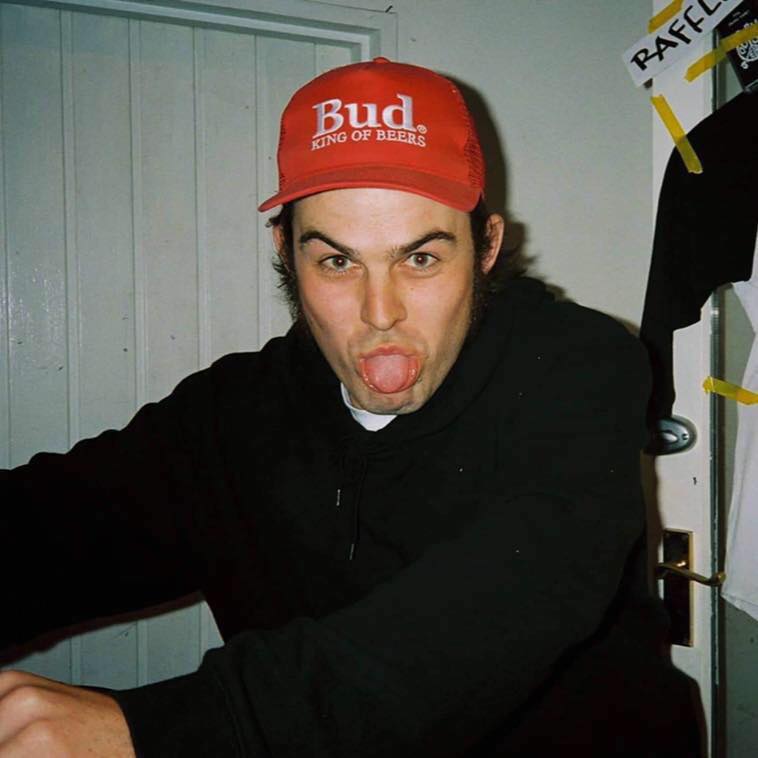
- What has been your personal highlight of 2019? Quitting my job as a builder and becoming a full-time tattoo artist. It’s been a goal of mine since I was a teenager.
- What piece of someone else’s art in Christchurch has been your favourite this year? I just love seeing a nice tag to be honest. I haven’t really been involved in the graffiti scene since I started putting all my artistic energy and time into tattooing. However, once you’re in the graffiti culture you never stop turning your head when you go past a tag that has something special about it. My favourite tags are the cheeky ones done with a paint pen or a big marker.
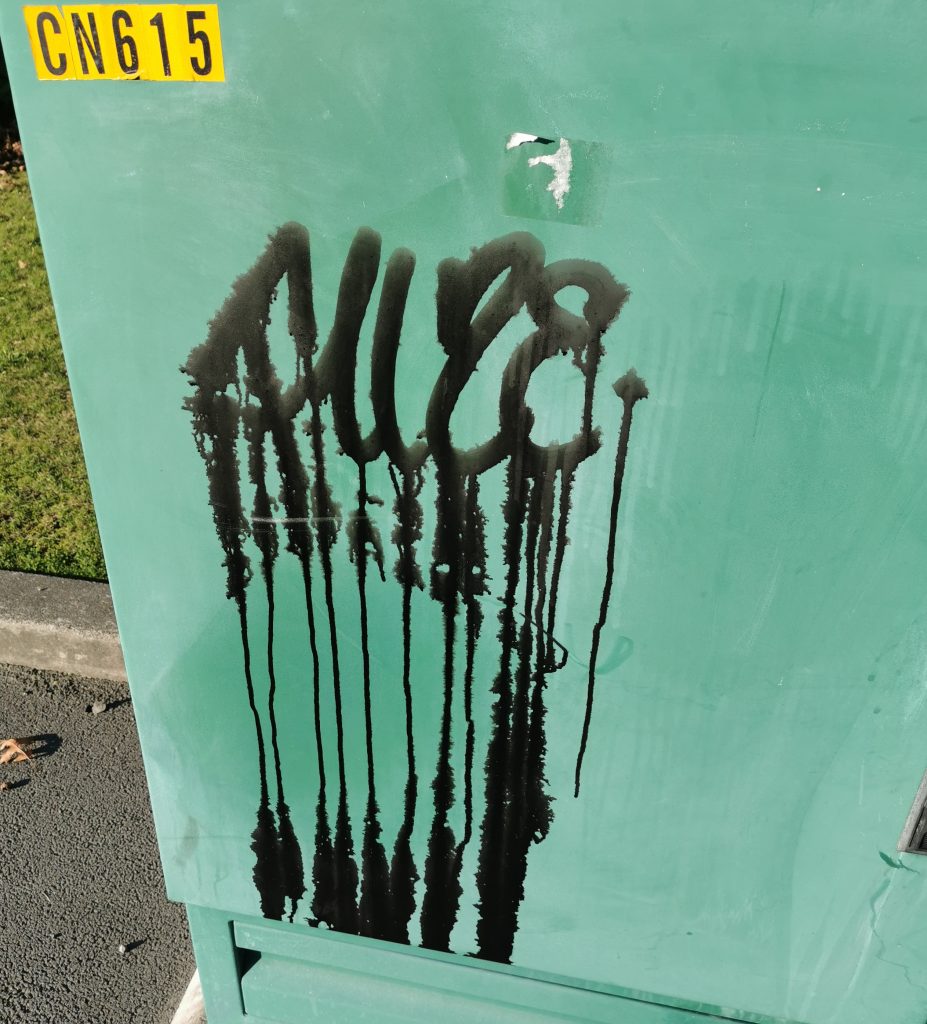
A drippy FUZE tag, captured 2019. - What piece of someone else’s art outside of Christchurch has been your favourite this year? I’m a big fan of Josh Solomon from Auckland, both his tattoos and his ‘fine art’.
- What exhibition by an urban artist(s) has been your favourite this year? Rory Grant had an exhibition [Babylon is Burning] at Spooky Boogie in Lyttelton last month and I think his paintings are super impressive.
- It isn’t just the end of a year; it is also the end of a decade. What events or sentiments have defined the last decade for you? The earthquakes, it goes without saying, haha! Starting a punk band (Nervous Jerk) and being welcomed into a whole new world and experiencing kindness from strangers like never before. Putting out a record with that band five years later. Becoming a qualified builder. I learnt so many things, but most importantly it taught me to never give up on something and to always have a crack at taking that broken thing apart and trying to fix it or whatever. What’s the worst that can happen right? Buying a house with my girlfriend. So many things. I was 15 at the start of the decade so I’ve been through a lot of first times and probably shaped by a lot of things I’m not even aware of yet!
- What is the biggest artistic/pop cultural moment from the last decade? Smartphones, I think. I hate everything about them and love them for the same reasons! But you can be so creative with them and write things down and brainstorm on them and I think so many creative things were probably started as just a note on a phone…
- Which artist or artists have stood out over the last decade? To be honest I think over the last decade all the big artists I’ve gotten into haven’t been doing anything this decade. I just really like older music and most of the art I’m into is more traditional stuff too, I guess.
- Lastly, what do you hope 2020 has in store, personally and for the local scene? Less people being fussed about how many likes they get for whatever they’re making and just making it for the sake of self-expression. Hopefully by then everyone will be over that shit and just enjoy being themselves.
Ikarus – Artist (@highdoctornick)
- What has been your personal highlight of 2019? I quit smoking cigarettes after close to 25 years, does that count? Relating to art stuff, it’s hard to say, there’s been a few cool projects but nothing that blew me away…
- What piece of someone else’s art in Christchurch has been your favourite this year? I’m not even sure. For big murals, the photographic piece Dcypher and Yikes produced with OiYOU! looks like a real banger.
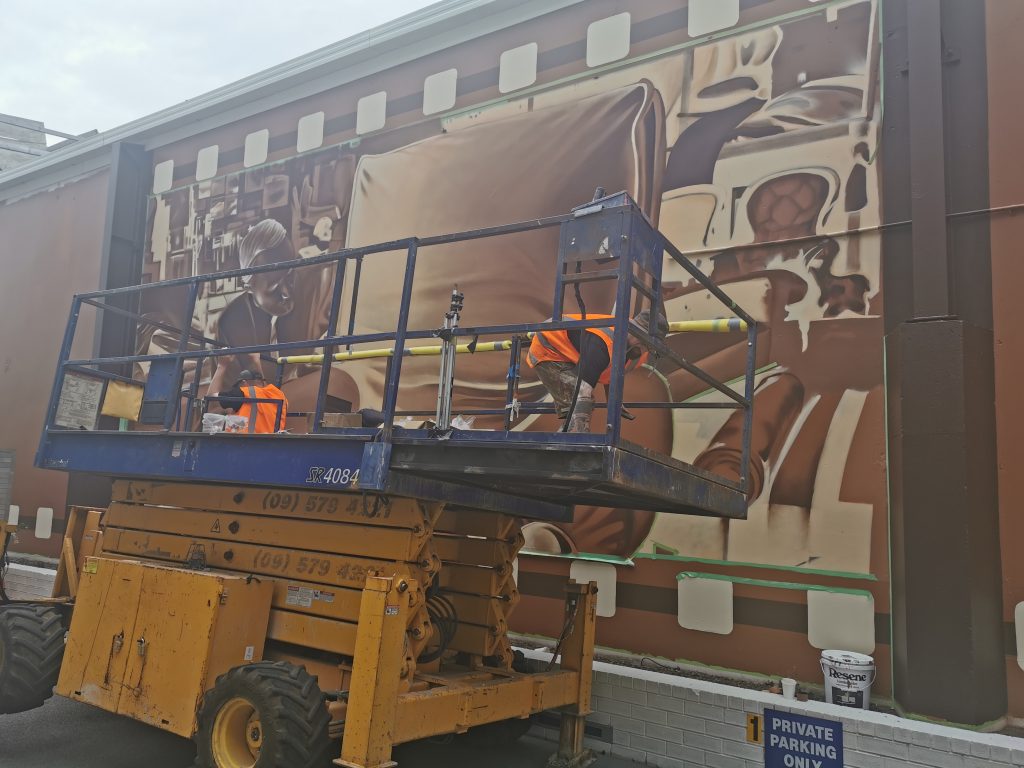
Dcypher and Yikes at work on the OiYOU! curated photo roll mural in Colletts Lane in the SALT District, December 2019. As far as traditional graffiti, which obviously is what I’m most interested in, this year has to go to Vesil, that dude is producing some dope work in high profile spots. An honourable mention to Dofus as well, he’s been killing the streets and yards with tags, pieces, throws. A solid all-rounder. The AOC crew have been putting in the heavy efforts and definitely produced some of the rawest graffiti this year.
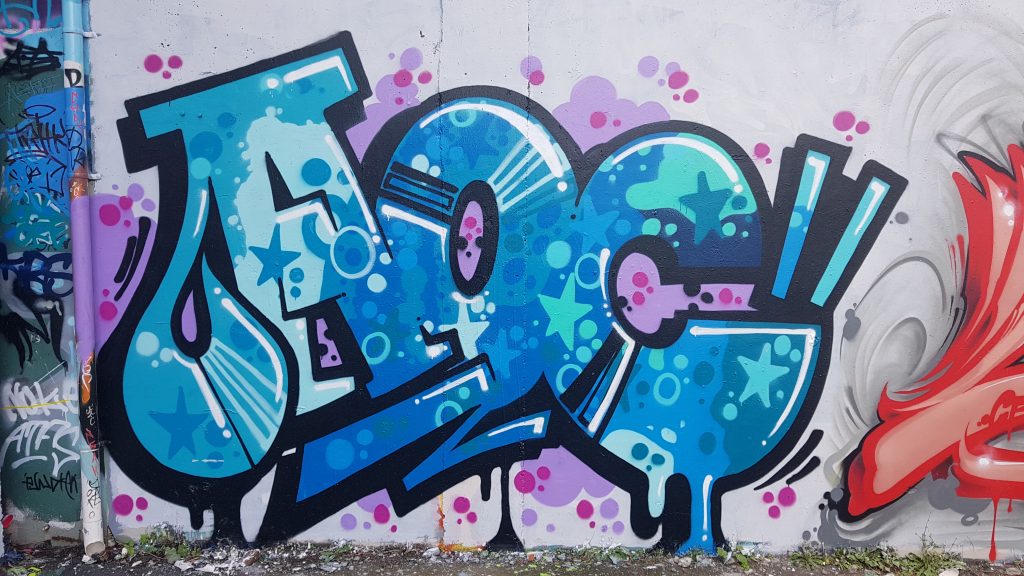
AOC by VROD, central Christchurch, 2019. Even though he’s been quiet this year, I’ve got to mention WeksOne (IMK), his 2017- early 2019 run is one of the heaviest and most impressive examples of all-round graffiti mastery in Christchurch history. Dude had the streets, yards, rooftops and more crushed, with everything from tags to throws to chromes to pieces to characters and straight up burners.
- What piece of someone else’s art outside of Christchurch has been your favourite this year? I’m super ignorant about what’s going on outside Christchurch most of the time. Everything Odeith does is insane though. 1UP’s coral reef project is on some next level shit. I really have no idea honestly. I can tell you all the current 2020 releases for Hasbro’s Marvel Legends line though, if that helps at all.
- What exhibition by an urban artist(s) has been your favourite this year? Ahhhh, I see. This is all an exercise to expose how little I actually know about art, well played. OK well, I didn’t actually go to it, but I’m gonna say TOGO’s work in the Urban Abstract exhibition at Fiksate Gallery (see what I did there, guys? You’re welcome). I didn’t see the show but his mix of abstract paintings both on canvas/gallery and on walls/public, coupled with his raw traditional illegal graffiti work and his eloquent descriptions of his experiences lead me to assume I would have very much enjoyed the exhibition.
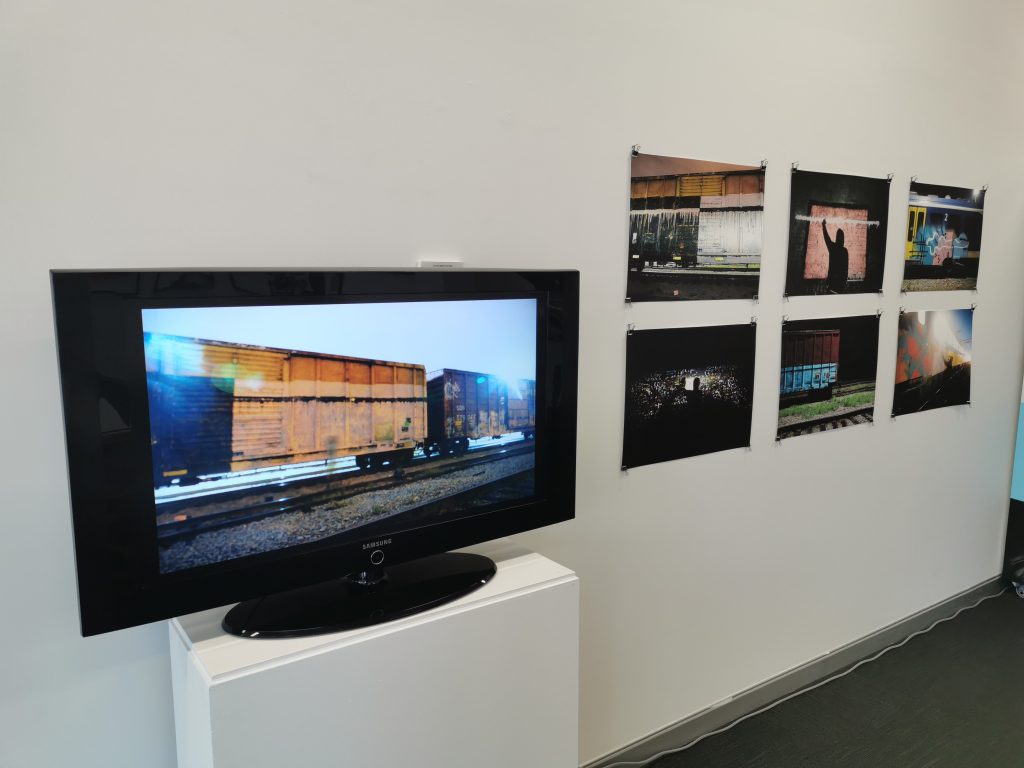
TOGO’s video and photographic works from Urban Abstract at Fiksate, 2019. - It isn’t just the end of a year; it is also the end of a decade. What events or sentiments have defined the last decade for you? That’s a brooooad question. Part of me wants to just say ‘Thug Life’ and move on, because thinking and talking too deeply about graffiti and/or street art sometimes feels stupid or falsely high-brow, too forced. But part of me also takes it all really seriously. So, I dunno what to say to be honest. Grow and evolve but don’t change. When you work out what that means and how to do it, lemme know, it might be the key to the struggle.
- What is the biggest artistic/pop cultural moment from the last decade? The Internet. The exponential rise of social media and its various platforms to some extent make every moment the biggest moment for artistic/pop culture. Everything has the potential to be the next big thing. Marketing and branding overtook advertising as the true modern art form.
- Which artist or artists have stood out over the last decade? There’s too many dope artists and writers to name and I’d be afraid to forget somebody. On some level everybody is an influence but it’s really only my crew and the writers and artists from my city that I think about though, without them I couldn’t exist. Two people I will mention though, are George Shaw and Shannon Webster from OiYOU! While perhaps not the traditional definition of “artists”, they have been incredibly important to the growth of public appreciation towards graffiti and street art in Christchurch. From organising the biggest graffiti and street art exhibitions/shows/festivals in New Zealand, including the historic RISE at the Canterbury Museum, to their continual support behind the scenes, these guys have been a huge factor in the growth of graffiti and street art in post-quake Christchurch.
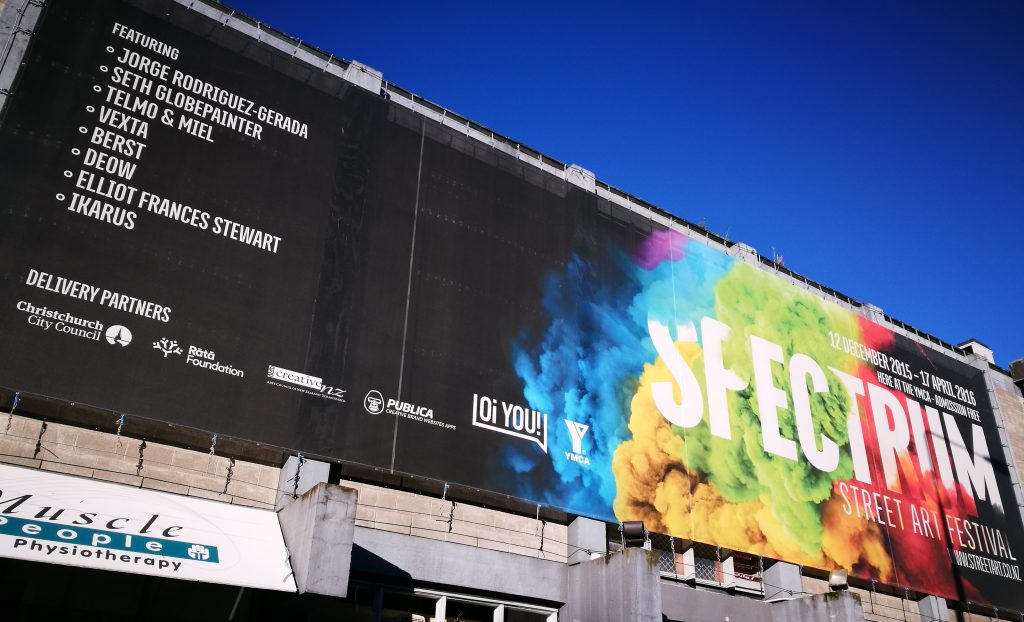
OiYOU!’s Spectrum at the YMCA, 2016. - Lastly, what do you hope 2020 has in store, personally and for the local scene? I’ll just keep doing what I do. We have workshops and the Blackbook Sessions starting up again in the new year, as well as a festival or two pencilled in for 2020 already. I’d like to see traditional graffiti art represented more at the many street art festivals and shows that are happening now. It’s great to see the art form evolve and see events that support the new wave of art/artists, but it would also be great to have traditional graffiti art represented in that positive light. Locally I’d like to see the implementation of more legal walls and evolving art spaces where novice artists can practice freely, and more funding toward workshops and tutorial classes for at-risk youth.
Jacob Yikes – Artist (@jacobyikes)
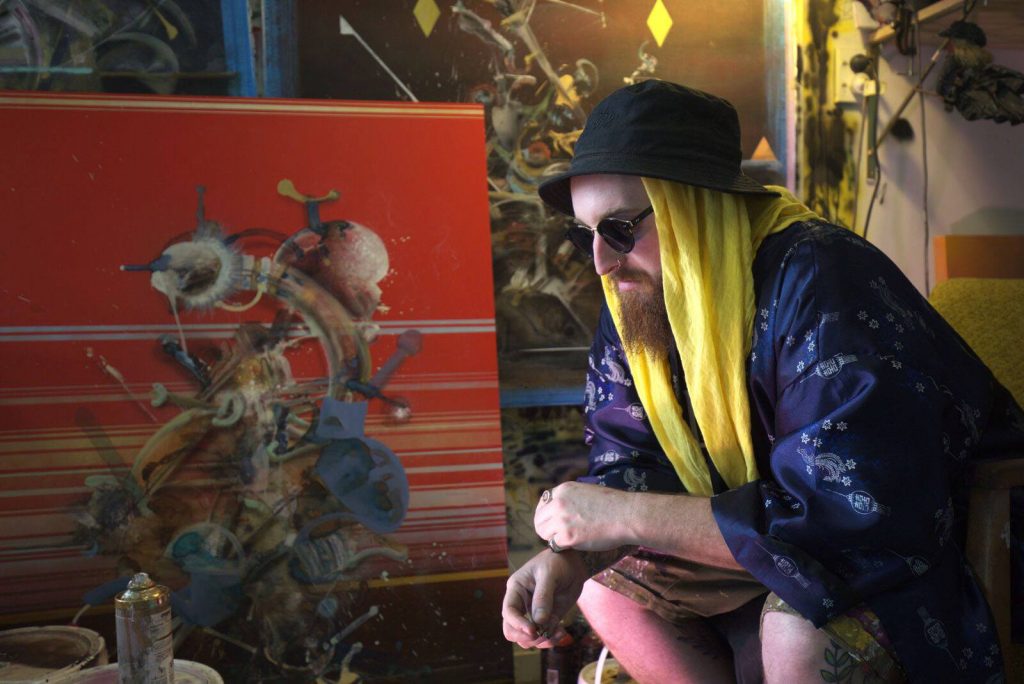
- What has been your personal highlight of 2019? I’ve had a somewhat quiet year with painting outdoors for various reasons, however, a highlight of mine was displaying some works at Chambers Gallery. I felt those works were a shift in the direction I see my work heading in 2020.
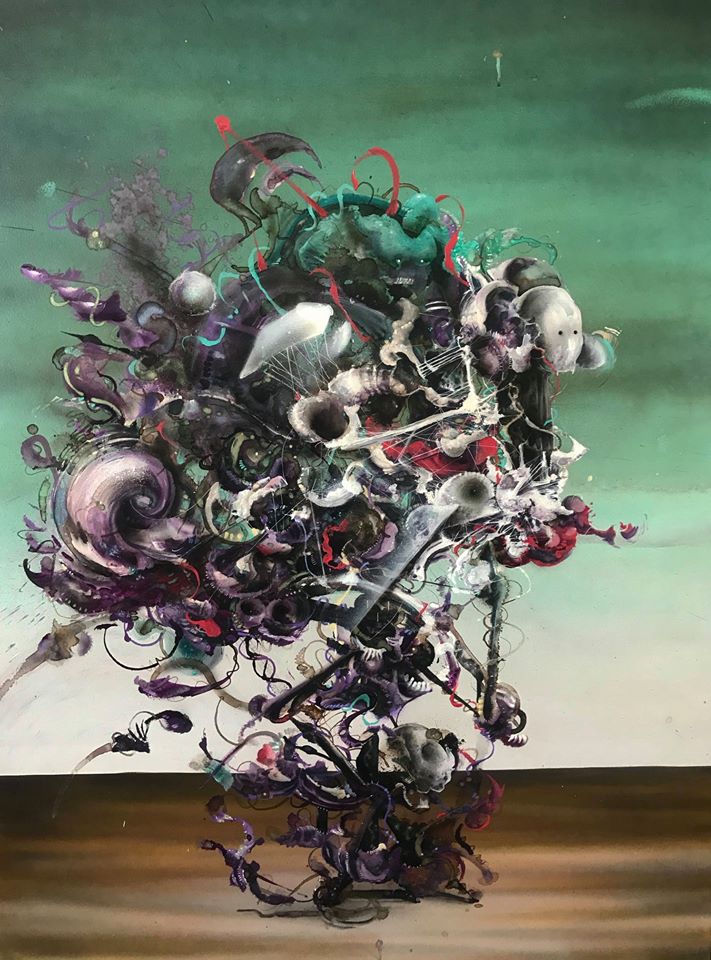
One of Jacob Yikes’ works from his Chambers Gallery show with Hamish Allen and Steve Birss, October 2019 (photo via Jacob Yikes). Another highlight would be getting a solo show in a local gallery that I have been visiting since I was young, I can’t release any info about it yet, but the show will be towards the end of 2020…
- What piece of someone else’s art in Christchurch has been your favourite this year? Hmmm, that’s a hard one, personally I feel that overall it’s been super quiet in Christchurch this year… I’ve been locked away in my studio for a lot of the year so I’m not sure I’ve really seen anything new from anyone that’s really stood out, and that’s not a negative thing at all but nobody is really being that active. I guess I need to get out more, haha!
- What piece of someone else’s art outside of Christchurch has been your favourite this year? Yeah, again, I’ve not being paying attention enough to what’s been going on, so I really couldn’t say, hibernating in the studio for the cold months will do that!
- What exhibition by an urban artist(s) has been your favourite this year? No answer.
- It isn’t just the end of a year; it is also the end of a decade. What events or sentiments have defined the last decade for you? Easily the influx of street-based work in Christchurch, the events that have opened up doors for me and helped me progress as a full-time artist. I quit my job as a house painter about 6 years ago, took the leap to be a full-time artist and it’s not been easy, especially trying to keep my work original and true to my vision and not just to please the masses. That can be hard, but it’s all been worth it.
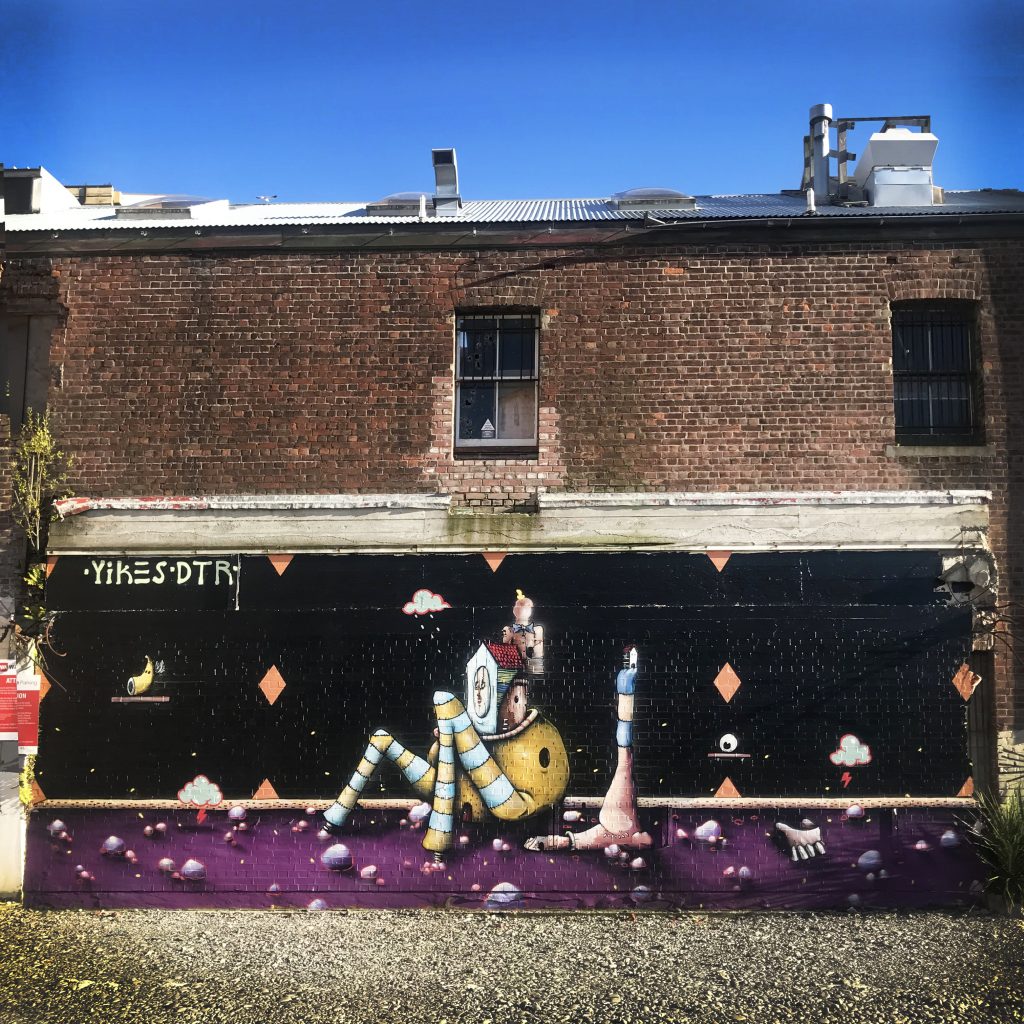
Jacob Yikes, Manchester Street, 2019 (photo via Jacob Yikes). - What is the biggest artistic/pop cultural moment from the last decade? No answer.
- Which artist or artists have stood out over the last decade? That’s a tricky one, a lot have stood out in their own way, I really couldn’t say, I really should pay more attention!
- Lastly, what do you hope 2020 has in store, personally and for the local scene? I hope that in 2020 we will see our local Council actually contribute to keeping the street scene alive and to stop using the work we do to promote the city but not putting anything into it, but we’ll see…. I personally have some things in the works for 2020, but I’ll keep that close for now, haha!
Jacob Root (Distranged Design) – Artist (@distrangeddesign)
- What has been your personal highlight of 2019? My personal highlight of this year was definitely my trip to Los Angeles. The work I was able to do there and the contacts I’ve made from it is still surreal.
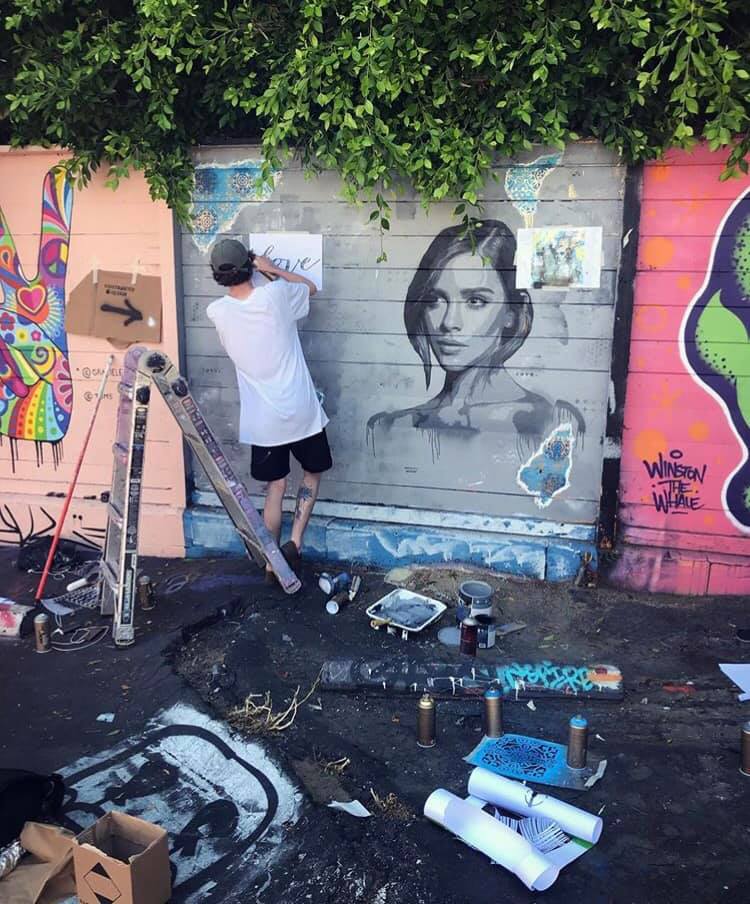
Jacob Root painting in Los Angeles, mid-2019 (photo via Jacob Root) - What piece of someone else’s art in Christchurch has been your favourite this year? Ahh, I haven’t actually seen a whole lot. But Dcypher’s Seagull was dope!
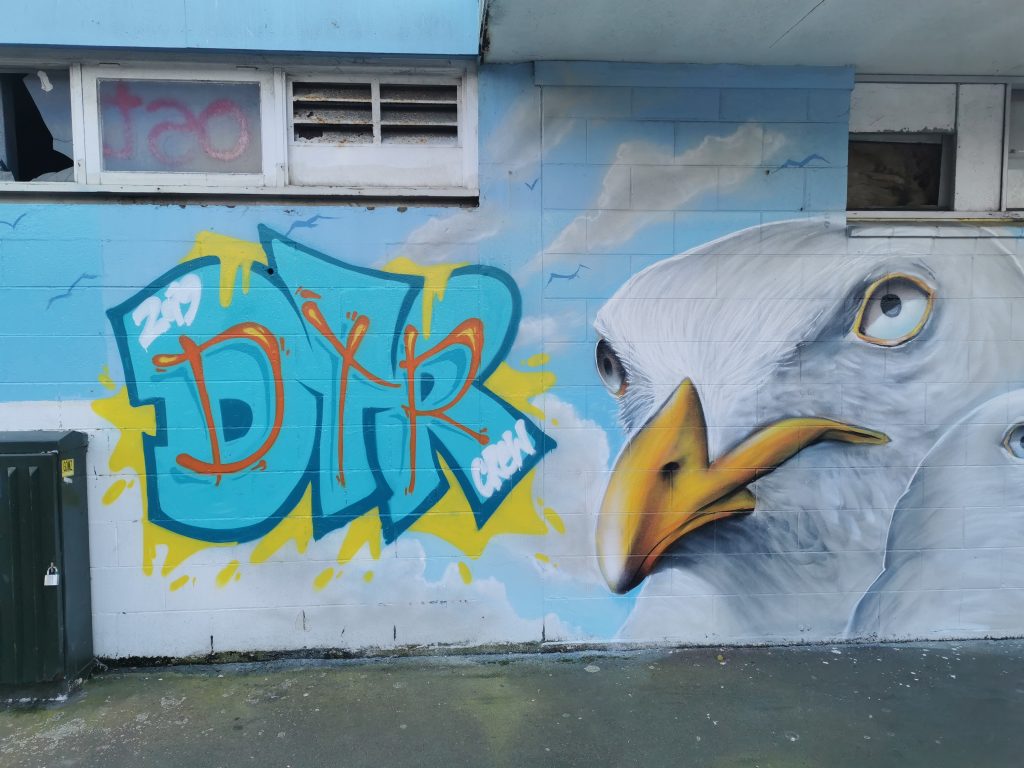
Dcypher and Ikarus in New Brighton, 2019. - What piece of someone else’s art outside of Christchurch has been your favourite this year? All of Triston Eaton’s murals!
- What exhibition by an urban artist(s) has been your favourite this year? Chimp’s Aliases at Fiksate.
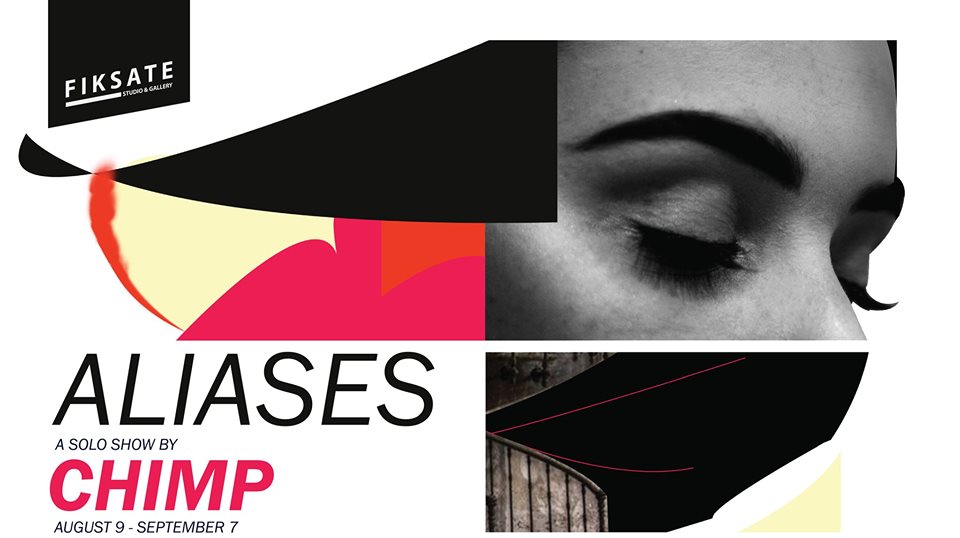
- It isn’t just the end of a year; it is also the end of a decade. What events or sentiments have defined the last decade for you? The last decade has really been the start of my life, finishing high school, then being able to work for myself and do what I love every day is a major factor!
- What is the biggest artistic/pop cultural moment from the last decade? I really don’t think I’m fit to answer that as I’ve really only been painting for the last couple of years.
- Which artist or artists have stood out over the last decade? Triston Eaton, Martin Whatson and Alec Monopoly.
- Lastly, what do you hope 2020 has in store, personally and for the local scene? For me, I’ve got a few festivals planned and quite a bit of travel, so I’m really hyped to be able to have my artwork outside of NZ! For the local scene, I really hope there is a street art festival curated for Christchurch…
A Tribe Called Haz – Artist (@atribecalledhaz)
- What has been your personal highlight of 2019? Being invited & participating in a roughly six month long art exhibition with Burger Burger.
- What piece of someone else’s art in Christchurch has been your favourite this year? The walls of New Brighton.
- What piece of someone else’s art outside of Christchurch has been your favourite this year? Gareth Stehr’s Have a nice day.
- What exhibition by an urban artist(s) has been your favourite this year? Joel Hart’s Dopamine at Fiksate.
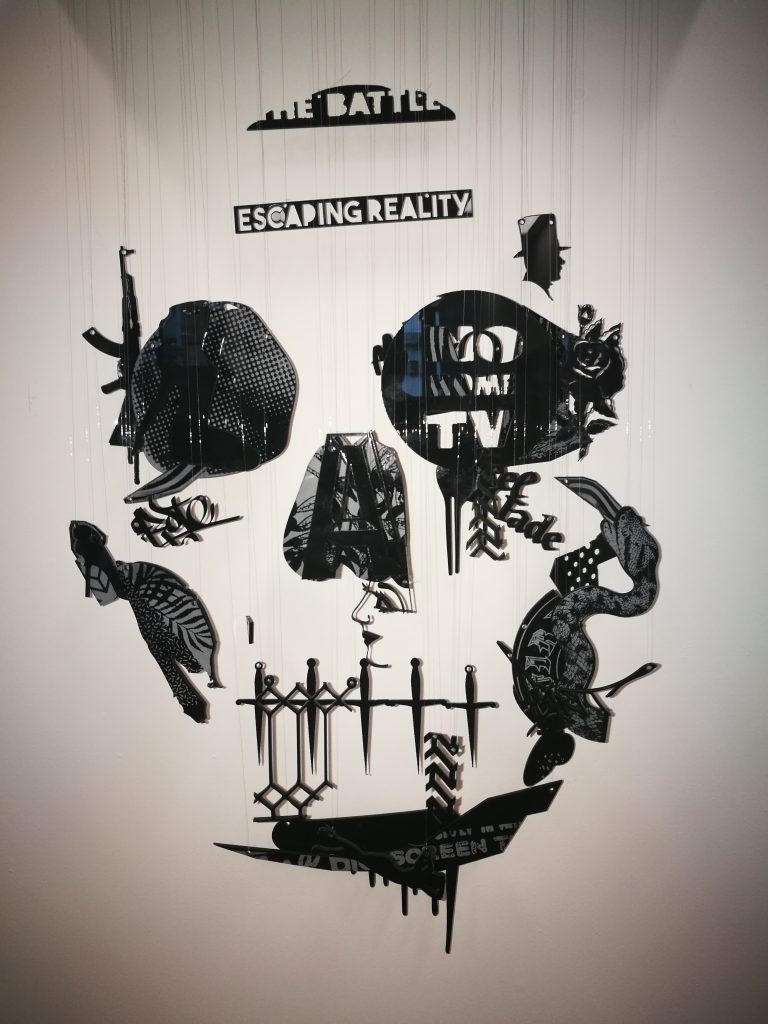
Joel Hart’s Escaping Reality from Dopamine at Fiksate, 2019. - It isn’t just the end of a year; it is also the end of a decade. What events or sentiments have defined the last decade for you? The Rad Collective’s Under the Influence, the ‘Graffiti Quake House’, my first A Tribe Called Haz exhibition.
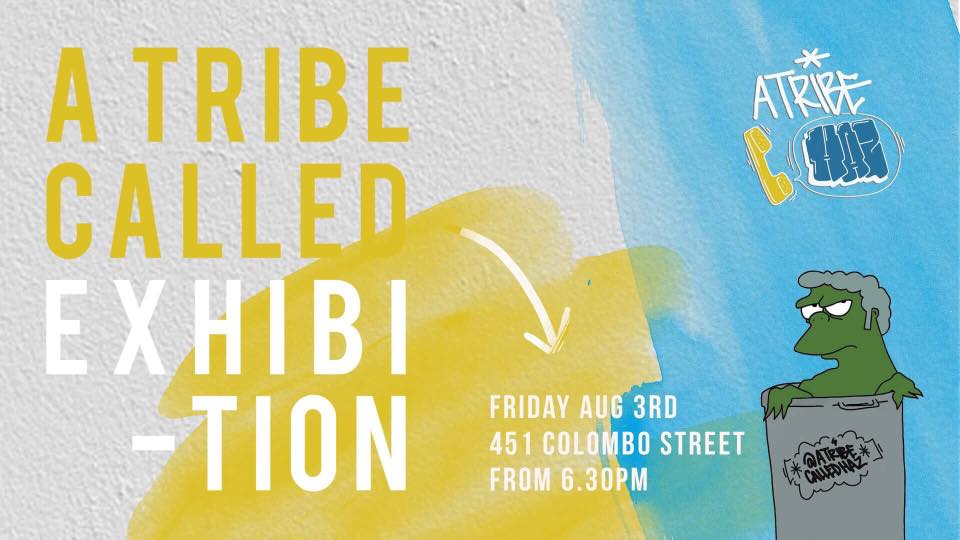
- What is the biggest artistic/pop cultural moment from the last decade? Ilma Gore’s painting of Donald Trump with a small dick.
- Which artist or artists have stood out over the last decade? Locally, Uncle Harold, Hugo van Dorsser, Vesil & anyone I’ve painted with. Outside of Christchurch, it would be Askew, Sofles, Dside, Valentin Ozich, Pablo Dalas, Neckface, Jeremy Fish & Haser.
- Lastly, what do you hope 2020 has in store, personally and for the local scene? Personally, more Inspiration, hopefully pull together another exhibition or two. Locally, more legal walls & more art collectives.
Jessie Rawcliffe – Artist (@jessie.e.r)
- What has been your personal highlight of 2019? Finally having a solo show, an opportunity which encouraged me to get away from working digitally and experiment with my preferred medium.
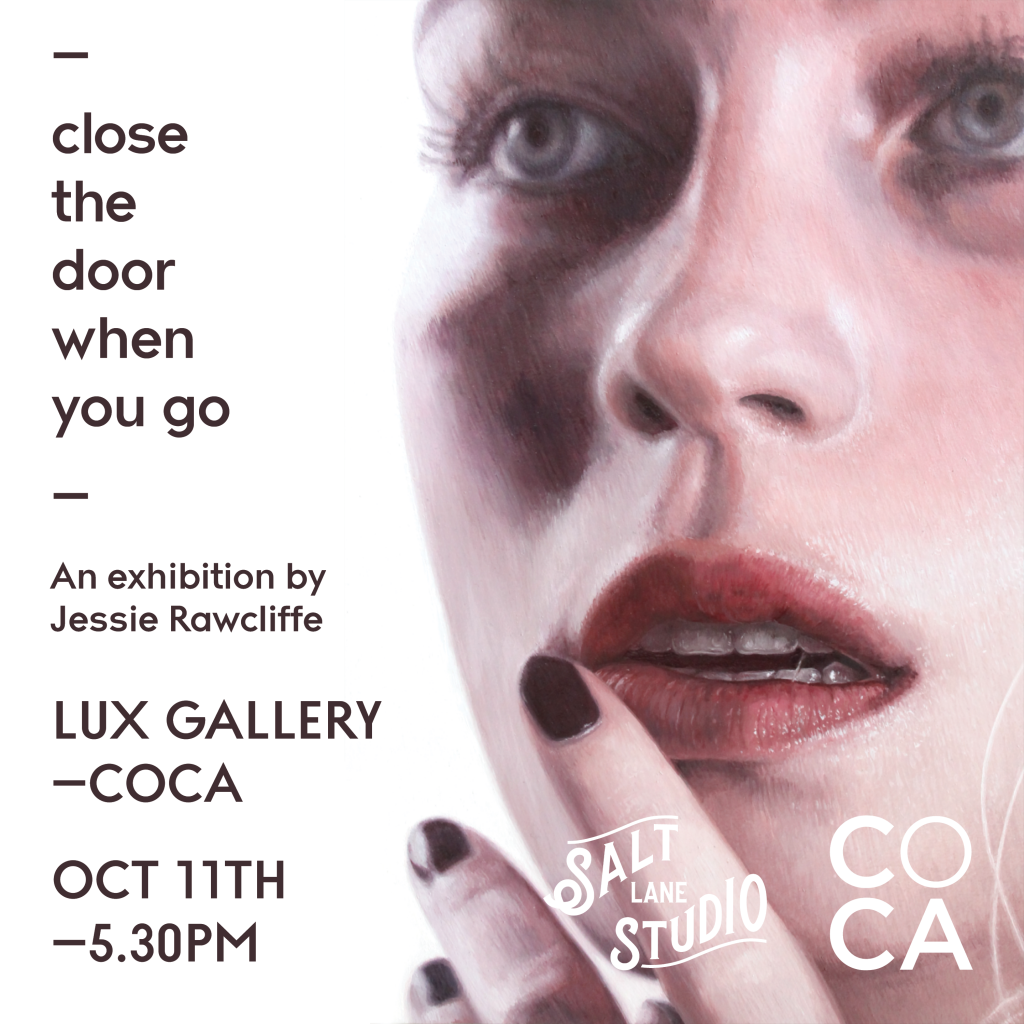
- What piece of someone else’s art in Christchurch has been your favourite this year? Dude, I suck at favourites… I really enjoyed Evangeline Edilson’s show Melpomene and the Sock at CoCA in August. There are some similarities in our work, so I probably related to it stylistically, which being a surrealist figurative artist I don’t get often. But honestly there’s been so much good stuff I can’t remember. Last week is hard enough. And I accidentally deleted my camera roll the other day, so I can’t even look back at visual cues.
- What piece of someone else’s art outside of Christchurch has been your favourite this year? Too specific. But in general Michael Reeder had a stellar year (last few really) and I’m constantly seeing his stuff and thinking “fuck you”. His development and refinement is such a pleasure to watch.
- What exhibition by an urban artist(s) has been your favourite this year? Fiksate’s Urban Abstract is the most memorable for sure. The range and standard of work was really great and that opening had such a good atmosphere. I think the space has worn in a little, there was such a nice crowd, I dunno, it was the warmest opening in recent memory.
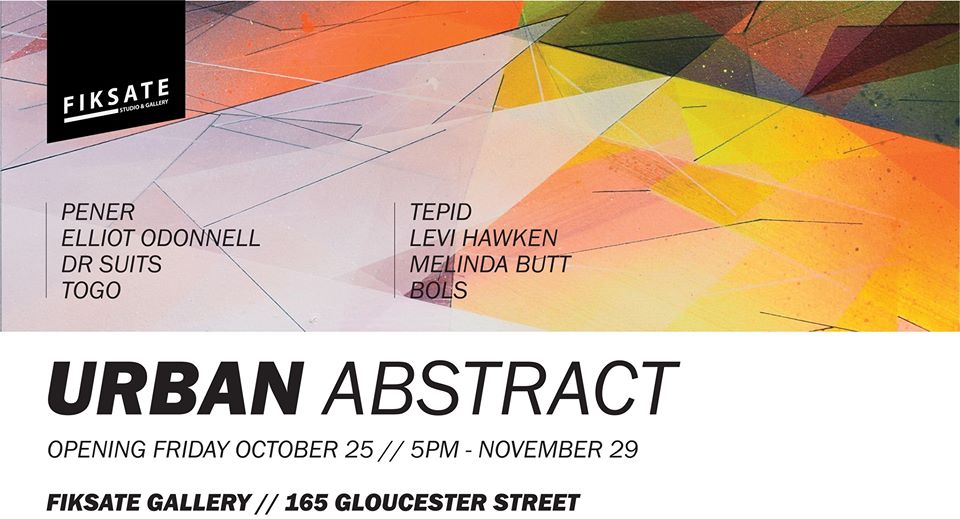
- It isn’t just the end of a year; it is also the end of a decade. What events or sentiments have defined the last decade for you? Moving to Wellington at the start of the decade and realising that there were weirdos out there just like me. I’ve moved cities and started gaining some momentum with my practice that was non-existent near the middle of my post-university years. Christchurch has been home for four years now (woah!) and I think it takes at least that long to either get comfortable or figure out how that new environment affects you. Working from The Welder Collective in 2017-18 either directly or indirectly introduced me to everyone in the Christchurch art scene I now know, with a few in particular being a vital influence on my current motivations and interests. The explosion of social media and its relationship to art really stands out. For better or worse. It can be pretty numbing being bombarded with imagery all day, every day, it’s often demotivating to go out and see art in person. The flip side though, is that I’ve connected with artists all over the world because of it and think it can be used as a tool for making art friends and expanding your art business wise. I’m inspired as much as I’m crushed by looking at other artists work (lol). Social media is probably a contributing factor to why I can’t remember what the fuck I’ve seen or done in the last decade. This might seem mundane, but I was given a copy of Young, Sleek and Full of Hell to read in 2017, which documents all the wild shit that went down and the careers that launched at Aaron Rose’s New York gallery ALLEGED in the 90’s (Mark Gonzales, Chris Johanson, Rita Ackermann, Susan Cianciolo, Barry McGee, Margaret Kilgallen, Harmony Korine, Mike Mills, Ed Templeton…), and it is so memorable and jumps out at me, because it fucked me up for a solid week. I was convinced that I was born in the wrong place/era. The sentiment of this time and place really resonates with my inner punk who wants to be allowed out, except, well, I’m too nice. And it got me worried that what went down there won’t or can’t ever happen here, because Christchurch for the most part is the cultural equivalent of a loaf of pre-sliced white bread.
- What is the biggest artistic/pop cultural moment from the last decade? Yeah, maybe it’s still the hangover from the decade before. ALLEGED crew and affiliates are everywhere. Or maybe more generally, the sentiment that came out of that time, all the good stuff of the late 90’s – skateboarding, art, graffiti, film, fashion, photography – has been polished, monetised, derivatives on derivatives. We’ve been in this post-postmodernist depression. And look what’s in again, the 90’s! But did it ever really go away? Another thing that stands out is the multidisciplinary artist/creative – the lack of needing to specialise in one field, like the the skateboarder/artist, or not needing to stick to one artistic medium. Also, the collab. OMG the collab! Big companies approaching (big or small) artists, as they try to capitalise on underground cultures and just basically commodify anything cool.
- Which artist or artists have stood out over the last decade? HUGE question, I’m avoiding it! Every year my attention has been drawn to different stuff depending on what I was up to. During university it was magazines like Juxtapoz and Hi-Fructose where I was getting inspiration from – lowbrow pop surrealism. 2009/10 was really my introduction to graf, hanging out at Manky Chops gallery in Wellington and with various members of Pirates crew (who are now graphic designers, tattooists, fine artists and the likes), very much the new gen of graf meets fine art, and the rise of the mural/street artist. The last few years in Christchurch it’s been a mix, which isn’t surprising given how varied the art scene is here, with the very traditional and more low-brow often right next to each other. There’s been a lot of looking back going on, at CAG for example, so many of the stand-out work has been old work from artists I should probably have known. Maybe we’re in a lull? Otherwise it’s a bit blurry. Specifics are hard. It feels like it just happened and I need a little more distance to work it out.
- Lastly, what do you hope 2020 has in store, personally and for the local scene? I hope the art scene can get a bit more momentum and general support from the wider community. There’s a cultural divide that I find really evident in Christchurch, with rich white people who want to buy landscapes and tell their friends they went to an art opening, then a bunch of super skilled and hardworking artists who will never see any of that support. The underground scenes are supported mostly by the people in them, and this city is too small to sustain that. A bit more overlap and progression of the traditional and contemporary art worlds.I’d like to keep painting, but also not be fucking broke for the 11th year in a row. I have way more focus and direction (and Ritalin) than I ever have before, so we’ll see where this new motivation takes me. It’ll likely be reaching out to galleries in the States to better connect with my audience. NZ has little fucks for figurative work, but the US love it, so I’ll be exporting goods!
Dcypher – Artist (@dcypher_dtrcbs)
- What has been your personal highlight of 2019? My personal highlights for this year would have to be working on the Salt wall designed by Paul Walters (I added the additional ‘Otautahi’ piece beneath it), it was a fun collaboration and I learned a lot of new techniques. Also, the more recent negative film strip mural depicting historical photographs of the SALT District was fun, again working with the Oi YOU! team.
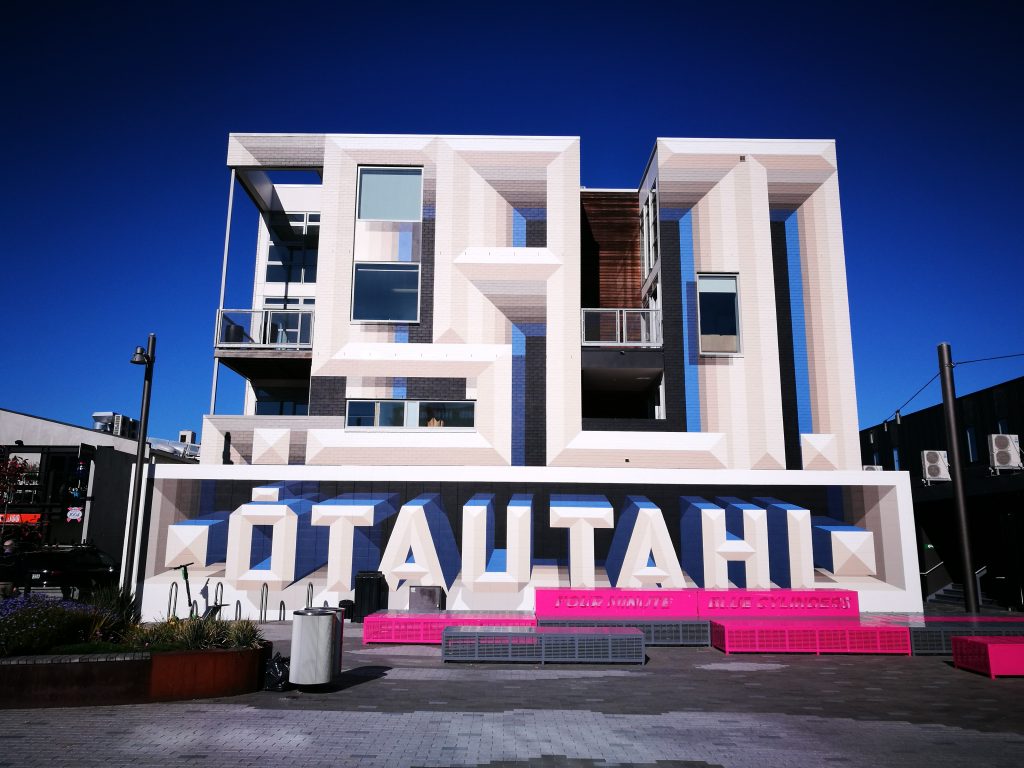
Paul Walters and Dcypher’s SALT Otautahi Mural, curated by OiYOU!, 2019. - What piece of someone else’s art in Christchurch has been your favourite this year? It’s a biased viewpoint, but all of Yikes’ new work, murals and artworks, would have to be my favourite in Christchurch for 2019.
- What piece of someone else’s art outside of Christchurch has been your favourite this year? Internationally, I would say Sainer from ETAM crew and Aryz from Spain would be my two favourite artists of 2019.
- What exhibition by an urban artist(s) has been your favourite this year? I haven’t had a chance to attend many shows this year but based on what I did see Levi Hawken’s sculptures from Fiksate’s Urban Abstract stuck in my memory.
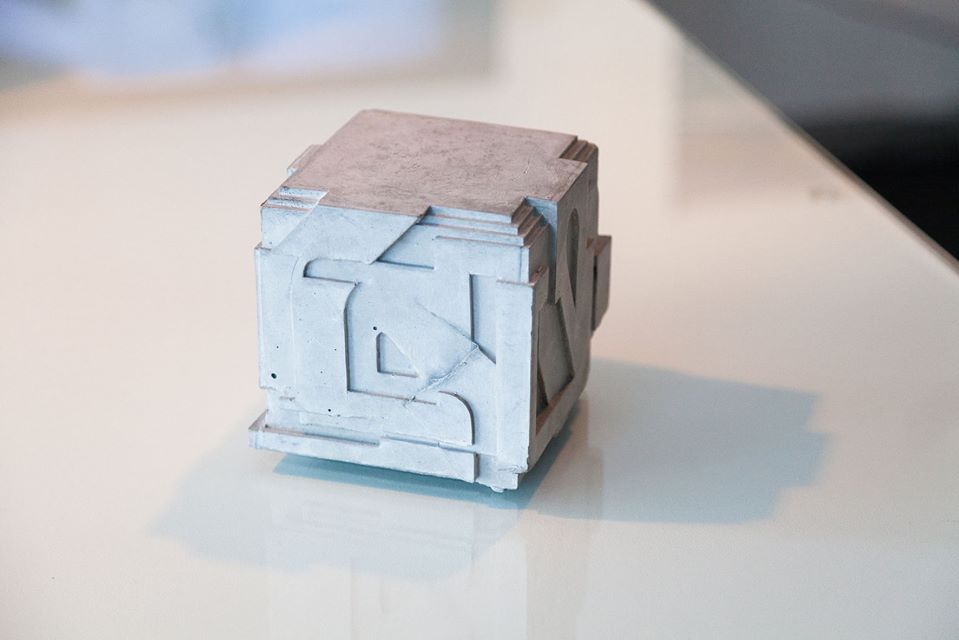
Levi Hawken’s Mini Graffiti Cube 2, from Urban Abstract at Fiksate, 2019 (photo credit: Kirsty Cameron). - It isn’t just the end of a year; it is also the end of a decade. What events or sentiments have defined the last decade for you? I spent the last decade living and working in Los Angeles so that has had a massive influence on my work.
- What is the biggest artistic/pop cultural moment from the last decade? I think for Christchurch it would have to obviously be the earthquakes and the mural festivals that proceeded it and put the city on the map as a cultural hub of New Zealand.
- Which artist or artists have stood out over the last decade? Internationally there are so many amazing artists that stand out in my mind. And the mural art movement has been pushed in lots of amazing directions but someone who really stands out I would have to say is Vhils, his work is super impressive.
- Lastly, what do you hope 2020 has in store, personally and for the local scene? I’m looking forward to 2020 being super productive. Hopefully producing more and more murals and having more mural festivals and bringing in international artists to add to the already extensive public mural catalogue.
Jenna Lynn Ingram – Artist, MC, Gallery Owner (@jen_heads/@fiksate_gallery)
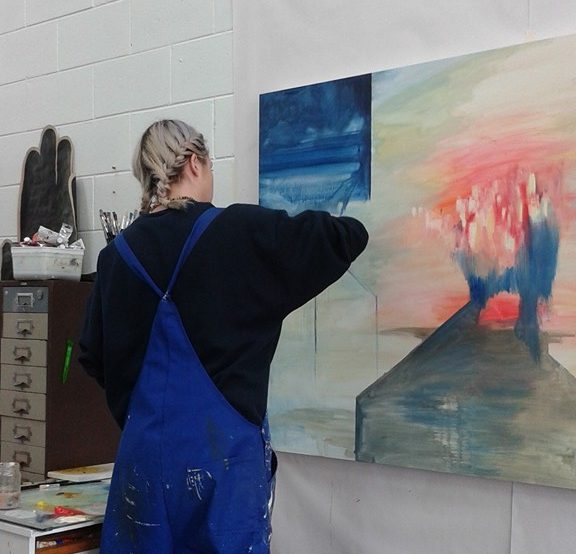
- What has been your personal highlight of 2019? In 2019 Fiksate came to the central city and we’ve so many had great exhibition openings, the highlight was probably the latest one, Urban Abstract, for sure. Also, I quit my 9-to-5 and am focussing on being an artist and running Fiksate full time, that is definitely a highlight!
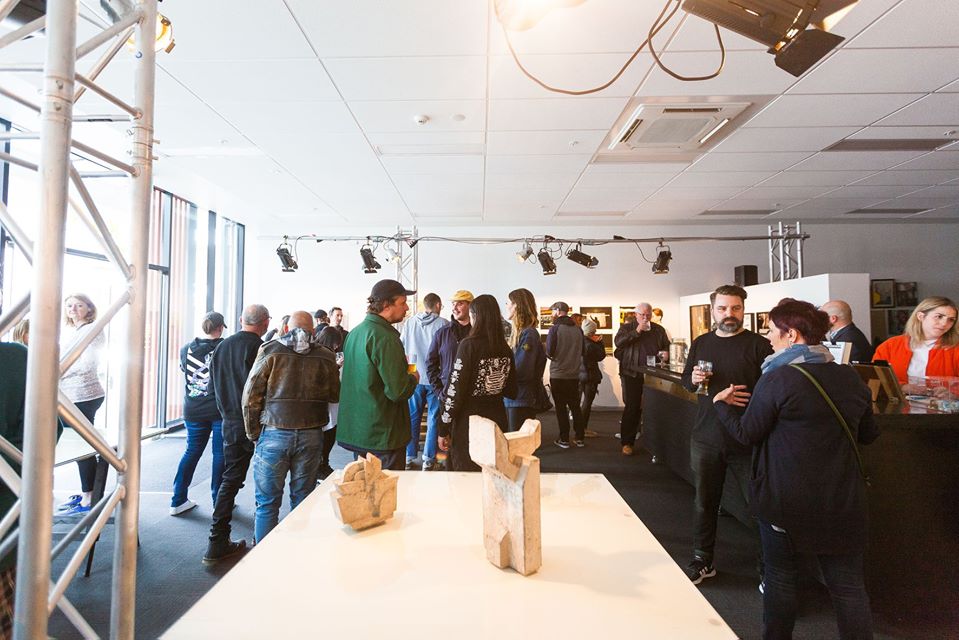
The opening of Urban Abstract at Fiksate, October 2019 (photo credit: Kirsty Cameron) - What piece of someone else’s art in Christchurch has been your favourite this year? Levi Hawken has blown my mind with his sculptural work. It was so good to have it in Urban Abstract…
- What piece of someone else’s art outside of Christchurch has been your favourite this year? There are too many to name! I have really enjoyed Remi Rough, the abstract urban artists coming out of Poland, all the female mural artists out there. I have to say that I’m constantly amazed by the stuff that comes across my Instagram feed. I don’t always take in who it is by, but there are so many artists out there that are so talented. I’m blown away everyday by urban art culture, it’s a huge vast ocean of talent.
- What exhibition by an urban artist(s) has been your favourite this year? Every single Fiksate exhibition opening! We have had such great vibes, the other exhibitions this year that have stood out have been Jessie Rawcliffe’s shows at CoCA and now at Absolution.
- It isn’t just the end of a year; it is also the end of a decade. What events or sentiments have defined the last decade for you? In 2010 I met Nathan and we fell in love. Then in 2011 the earthquake struck, you can’t not mention that, but that’s also when our street art journey began and we became a team and since that day when we made paste ups of Band Aids or Nath’s Dr Suits character, that energy has never faded away.
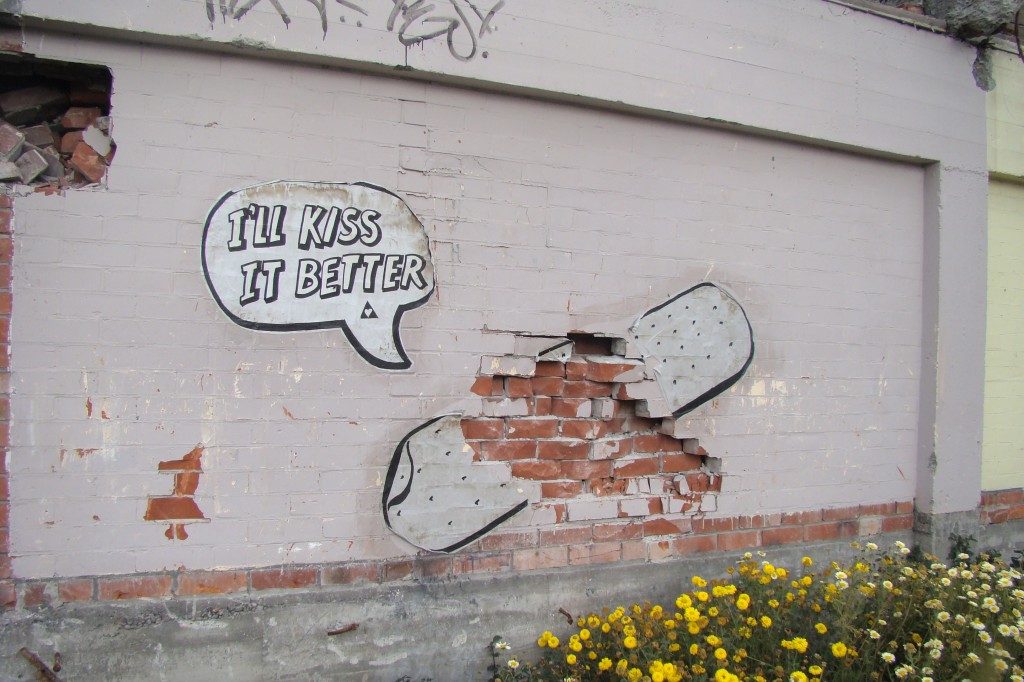
One of the Band-Aids by Jenna Lynn Ingram and Dr Suits, c.2012. With Fiksate, we are here to give a leg up to artists who don’t get that from other contemporary art galleries, we are here to give urban artists the prominence they deserve because they are a talented bunch of people. We want to give local artists the chance to show alongside international artists, showing the standard here.
- What is the biggest artistic/pop cultural moment from the last decade? Man, it’s a long decade! I’d say the emergence of Anderson Paak.
- Which artist or artists have stood out over the last decade? I really enjoy Gary Stranger. Every time Cleon Peterson puts out something it blows my mind, his latest work, it’s so dark and dirty. I’ve got to say that the artists who have been part of our shows at Fiksate, like Askew One, Pener, Joel Hart… And of course Dr Suits, he blows my mind every time and I hate it because he makes it look so easy!
- Lastly, what do you hope 2020 has in store, personally and for the local scene? I hope that I will become a full-time artist and that Fiksate will become a solid grounding for urban art in the city, a mural agency is part of that plan too, working to get more murals around the city. I also hope urban art is given more education and acceptance of all its aspects.
PKAY – Artist (@aaron.p.k)
- What has been your personal highlight of 2019? Shooting Steven Park’s 6×4 summer collection.
- What piece of someone else’s art in Christchurch has been your favourite this year? Vesil’s entire output this year.
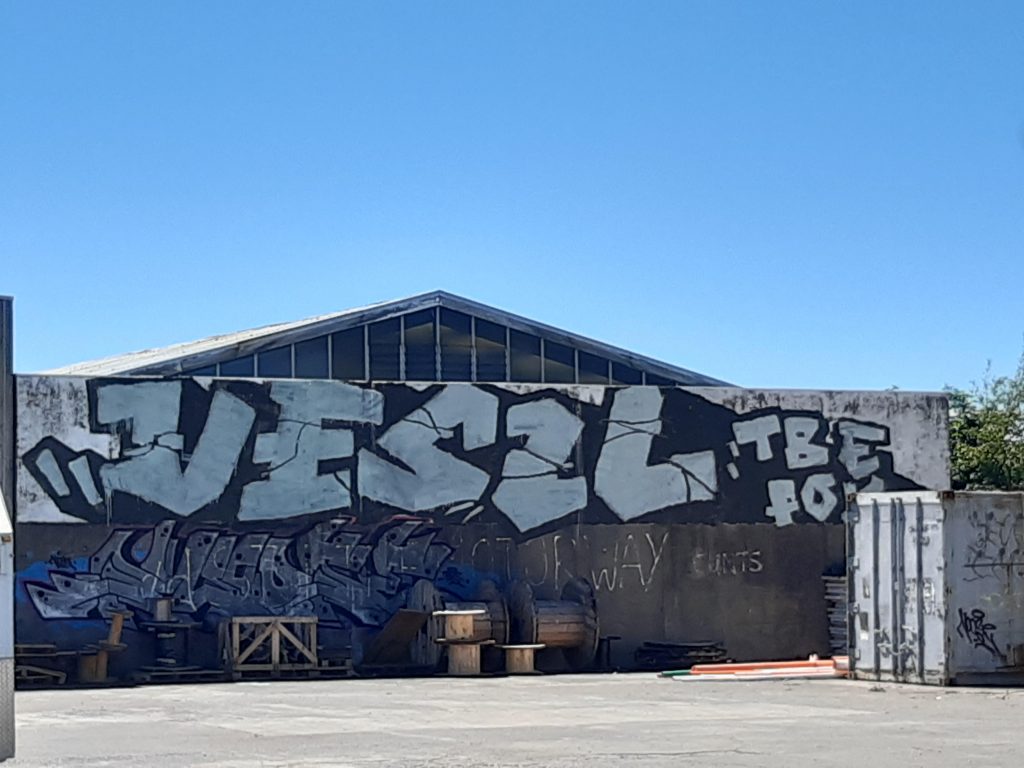
VESIL, 2019 (photo via PKay). - What piece of someone else’s art outside of Christchurch has been your favourite this year? No answer.
- What exhibition by an urban artist(s) has been your favourite this year? Urban Abstract was great.
- It isn’t just the end of a year; it is also the end of a decade. What events or sentiments have defined the last decade for you? I feel like I’m giving a very obvious answer but the earthquakes have been hugely impactful, particularly for people like myself who were in their early teens, as it changed the way people my age experienced the city (or lack of one) during our formative years.
- What is the biggest artistic/pop cultural moment from the last decade? Mass meme culture (and muralism).
- Which artist or artists have stood out over the last decade? Consistently over the whole decade DTR have pulled it off.
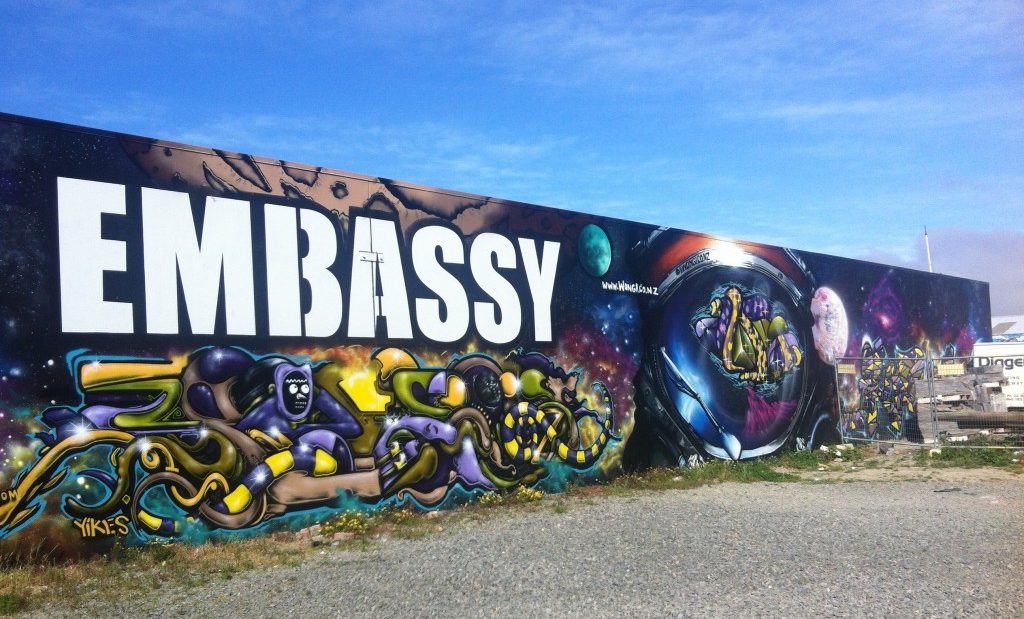
DTR crew colab (detail), Embassy, Colombo Street, Sydenham, 2014. - Lastly, what do you hope 2020 has in store, personally and for the local scene? More creative opportunities and some failed rebuild projects to retain the city’s spicy ‘bando energy
Dr Suits – Artist, Gallery Owner (@_dr_suits/@fiksate_gallery)
- What has been your personal highlight of 2019? The basketball court [Forces] in New Brighton was a big highlight for me. Just making it through to the end of the year is also a feat.
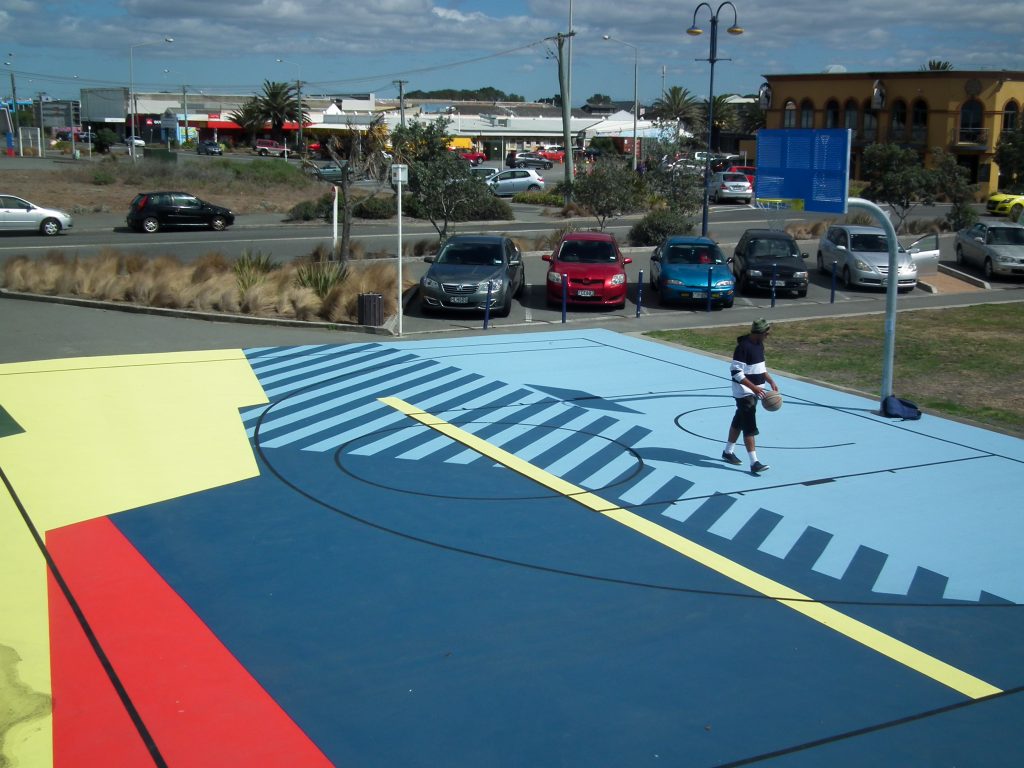
Dr Suits’ Forces, New Brighton, 2019 (photo credit: Millie Peate-Garratt). - What piece of someone else’s art in Christchurch has been your favourite this year? TOGO all day, without a doubt.
- What piece of someone else’s art outside of Christchurch has been your favourite this year? I don’t think I have even left the city! I looked online a couple of times, probably Remi Rough. He’s fucking killing it.
- What exhibition by an urban artist(s) has been your favourite this year? I wouldn’t want to be biased, but Urban Abstract was off the chain for us. That was a mammoth project and something that we worked on for a long time. I love urban abstract artwork and I just like to push my agenda! It’s like I love this so you should at least consider it, because I don’t even know if people even knew it existed. It’s really exciting the direction urban abstract art can go. I mean abstract art has been at the forefront of driving contemporary art for a long time, it naturally fits, but the murals and the scale and the insane concepts that can be translated, even stickers, paste ups and graffiti as well murals, it is all so exciting. Graffiti is essentially an abstraction of letter forms, but now artists are just completely letting go altogether.
- It isn’t just the end of a year; it is also the end of a decade. What events or sentiments have defined the last decade for you? Meeting my wife Jenna and forming a whanau with her.
- What is the biggest artistic/pop cultural moment from the last decade? Over the last decade rap music has just become so mainstream and dominated the music industry, I have to wonder if rap going to become rock? All the good rock songs are by artists from the 60s and 70s, is hip hop now just people reinventing the wheel, with the best hip-hop artists from the 90s? It’s gone so far from its original roots, it seems like the pure reason hip hop music came to the foreground is so contradictory to where it is now, where it used to be about the little guy, now its all about celebrities and big names. What’s next, what’s the next new music?
- Which artist or artists have stood out over the last decade? Anderson Paak, TOGO, Leon Bridges… Polish abstract artists are bonkers, they are just driving it. I don’t know if it’s just my preferred aesthetic, but they are so amazing. They are next level. Maybe it’s the Soviet influence of propaganda. Living in New Zealand, I can’t even picture what a day living in Poland is even like. You come across an artist 5 years ago and they take it somewhere even better, what is in the water over there?!
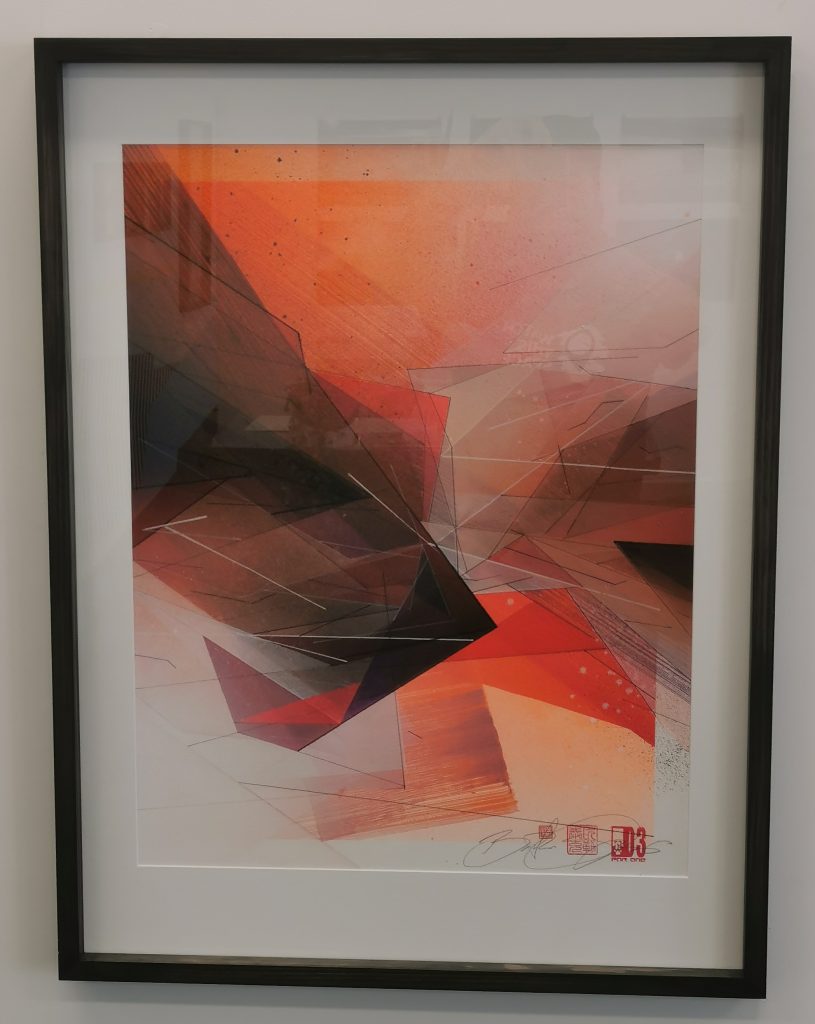
Pener’s Deconstruction 03 from Urban Abstract, 2019 at Fiksate. - Lastly, what do you hope 2020 has in store, personally and for the local scene? I need to spend some more time with my family, that’s a personal goal. As for urban art and the city, I’m obviously an advocate for abstract art and I want the city to embrace more abstract murals. Sanctioned works need to celebrate the artists, rather than give them a brief. In those situations artists can show their technical ability, but they can’t always show their voice. We need to have that diversity. The public will then become more aware of the issues artists are confronting, whether it is process driven or socially-minded. The process currently is dictatorial and often driven by people who lack an understanding of art.
Wongi ‘Freak’ Wilson – Artist (@wongi.wilson)
- What has been your personal highlight of 2019? Painting the second stage of Boxed Quarter was cool because it was nice to be back again to add to the first round of works I did there. They give me full creative freedom. It’s great to have clients like that who know my work, trust my process and let me do my thing. I’ve had lots of positive feedback on the greyscale portraits and photo real paintings that I did. One painting is of a photo I took of one of the foster pups we had which makes it personal.
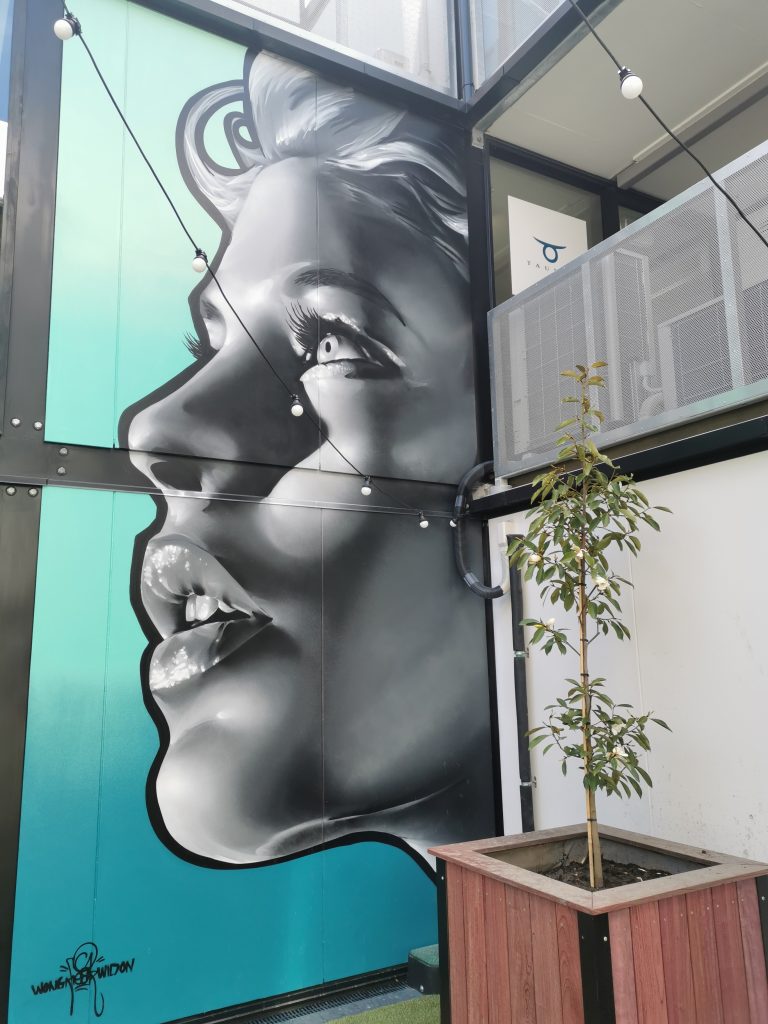
One of Wongi’s works at the Boxed Quarter, 2019. Teaming up with DOC and the Godley Heads Heritage Trust who commissioned me to paint the Godley Head gun turrets was pretty cool too. The paintings are based on historic photos of men and women who were the soldiers that manned the turrets during WW2. It was an amazing site to paint as was the subject matter. Another highlight were the pieces I painted for the Fresh Produce exhibition in Auckland. I never get the time between commissions to paint on canvas but I really wanted to include some work once I was invited. I got into the studio every chance I had and painted still life images of my wife from my personal collection and they turned out great. Finally, the Rollickin Gelato commission was a great way to end the year because I’d been wanting to paint a hand holding an ice cream for some time and it fit perfectly with their brief. They wanted it to represent their employees and they had a photo shoot of one with the tattoos and jewellery and sent me a few dozen photos to choose from. It was nice to be painting in Cashel Mall again, which I haven’t done since the first few years after the quakes.
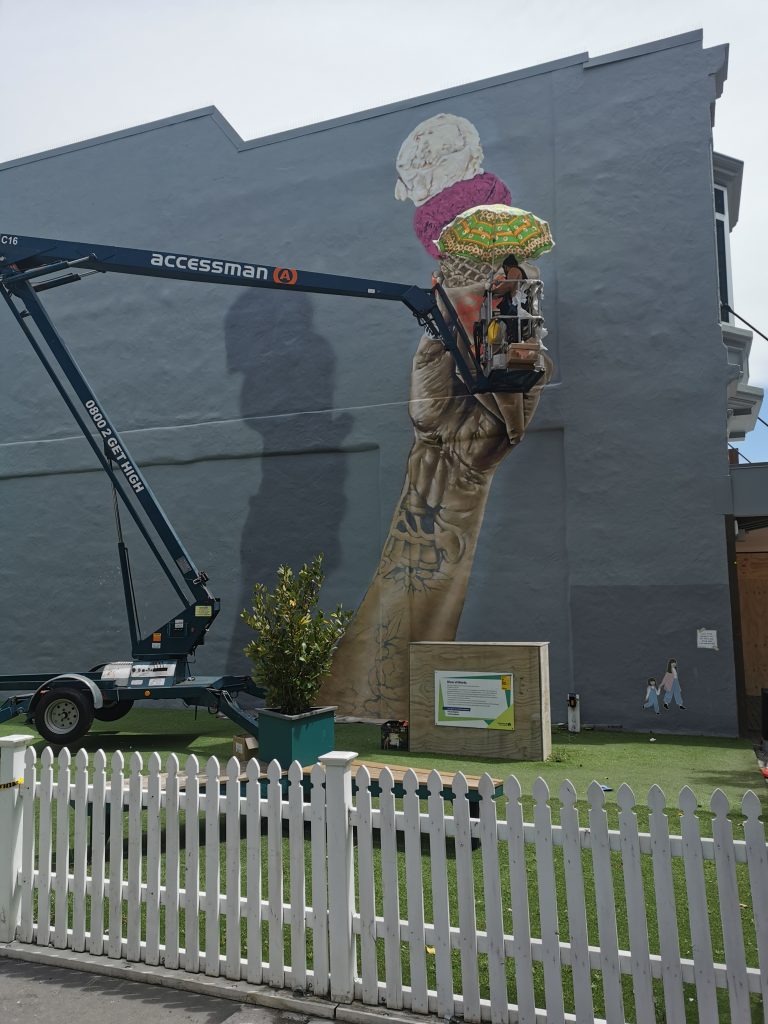
Wongi at work on the Rollickin’ Gelato piece in City Mall, 2019. - What piece of someone else’s art in Christchurch has been your favourite this year? My favourite pieces this year were any and all Jungle pieces that were done, but specifically Weks did two mean ones and Lurq did a dope one too, on top of that the bro Elias did a great portrait of Jungle which was awesome.
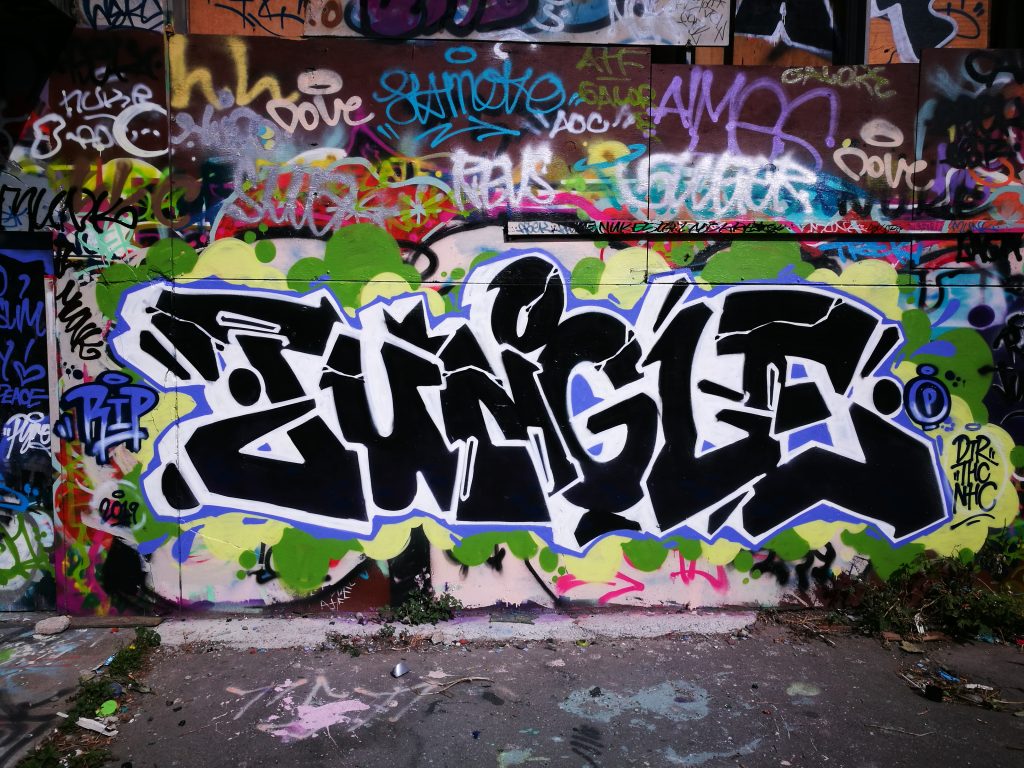
One of the many Jungle tributes across the city following the graffiti legend’s passing in 2019. Although, if I needed to point out a specific piece of work, I really liked he UV/Aztec styled characters that Sirum, Linz, Dem189 and Bryan Itch did at the Ten Pin Bowling spot. Mad cool stuff.
- What piece of someone else’s art outside of Christchurch has been your favourite this year? The artist Royal Dog did some outstanding portraits this year and Bust’s graffiti/cartoony combination styled work has been awesome too. 1UP’s boat piece or their underwater reef piece were ground breaking, and Blesea One’s character steez was also mad cool, specifically, I thoroughly enjoyed his Dragon Ball Z series.
- What exhibition by an urban artist(s) has been your favourite this year? Two shows from this year that would have been amazing to see would have to be Tilt’s exhibition Future Primitive, and, without a doubt, Martha Cooper and 1UP Crew’s one night exhibition in Melbourne. Such a mean team up from some heavy hitters in the scene.
- It isn’t just the end of a year; it is also the end of a decade. What events or sentiments have defined the last decade for you? The earthquakes were obviously a huge part of the decade, as well as the abandoned buildings/graffiti playground that they left behind. Getting married to my wife and having an amazing partner and best friend. The RISE exhibition was also a memorable part of the decade, being part of a street art show in the Canterbury Museum was crazy and with all the artists that the show brought through.
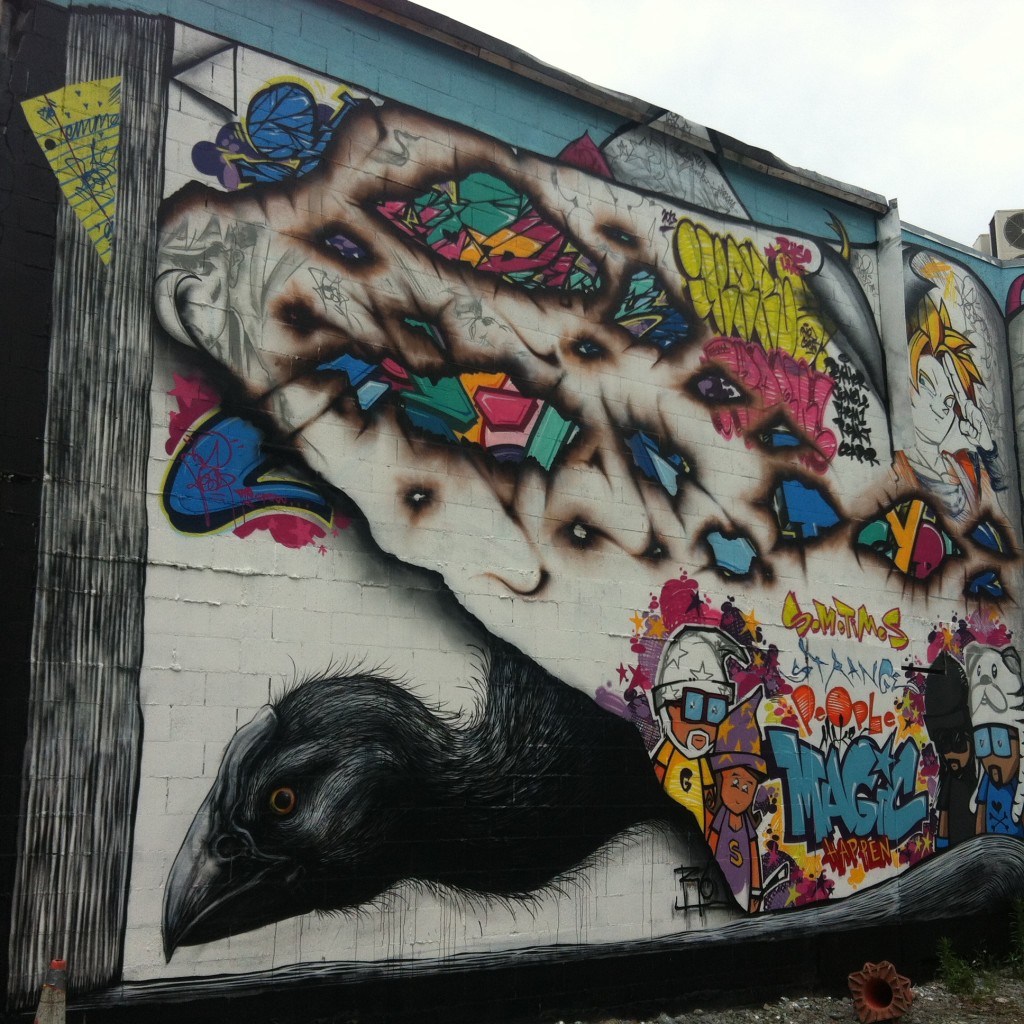
Wongi and Ikarus Blackbook Wall (detail) for Rise in 2014, featuring a number of artists who visited the city for the event. A huge event from the last decade was getting the chance to travel to and hike to Everest Base Camp as part of a commission for Kathmandu. It was an absolutely amazing experience that was an adventure of a lifetime and extremely memorable. Baby Yoda.
- What is the biggest artistic/pop cultural moment from the last decade? The end of Breaking Bad, Game of Thrones, street art becoming mainstream, the final season of Samurai Jack, Baby Yoda, memes of Baby Yoda, Dragon Ball Super…
- Which artist or artists have stood out over the last decade? There’s been so many amazing artists from the last decade, but Pichi & Avo’s paintings and sculptures really stood out to me, 1UP Crew’s work was also high impact, and Insane51’s portraits were great, his red and blue 3D-style murals also stood out. I’d also like to mention Tasso and Case from Ma’Claim Crew, they were the first photorealistic painters I saw back in the 2000s, but their works from the past decade have stood out as far as skill levels go.
- Lastly, what do you hope 2020 has in store, personally and for the local scene? Personally, I’d like it to be a positive, progressive and prosperous one, full of love, laughter and learning with lots of highlights and happiness. Specifically, I’d like to push my work further and further, expanding on my skill level and developing my pieces, processes, portraits and photorealism to new levels. As for the local scene, I’d love it to be more active on all levels, more cohesive across the board, as I feel it’s quite disconnected and disjointed at times, and for there to be more large scale murals painted, more fully themed productions, and more festivals and artist events to help grow and push the scene.
Jane Maloney (M/K Press) – Designer (@mk.press)
- What has been your personal highlight of 2019? Travelling to Europe again for the first time in 5 years. It felt like a long time away so I was very happy to go back. Also making the decision to quit a great job that didn’t serve me well mentally and emotionally.
- What piece of someone else’s art in Christchurch has been your favourite this year? All of the works in Playing the Drums by Bill Hammond at Christchurch Art Gallery, with notable mentions for the works Volcano Flag (1994), and Eating, Drinking, Smoking (1972).
- What piece of someone else’s art outside of Christchurch has been your favourite this year? Nature Lovers (2003) by Tony de Lautour which I saw at NMG Arrowtown, Snakes (1969) by M.C.Escher, a coloured woodcut from the Escher and Nendo show Between Two Worlds at Melbourne’s NGV, and Nan Golden’s photobook The Ballad of Sexual Dependency (1986), which I saw at the Tate Modern.
- What exhibition by an urban artist(s) has been your favourite this year? Face Value, the group show at Fiksate Gallery, and Convo by Tom Gerrard, Matthew Fortrose and Elliott Routledge at Stolenspace Gallery, London.
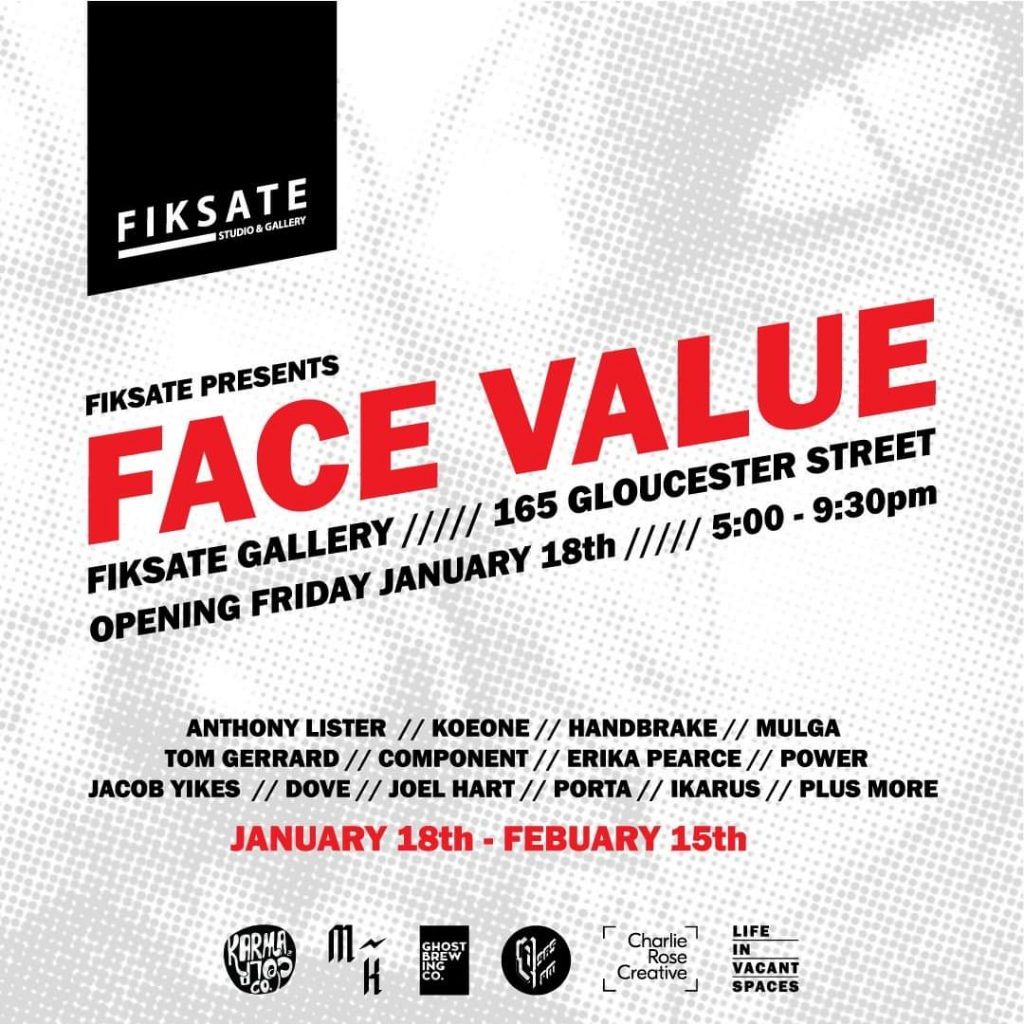
- It isn’t just the end of a year; it is also the end of a decade. What events or sentiments have defined the last decade for you? Starting my business M/K Press in December 2013, becoming self-employed full-time in December 2016, having my first art studio space (The Welder) in September 2017, and becoming a part of Fiksate Gallery and Studio in April 2018.
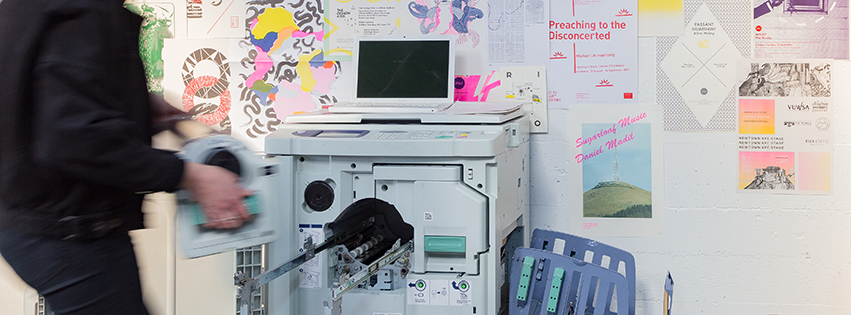
M/K Press in action at Fiksate (photo credit: Charlie Rose Creative). - What is the biggest artistic/pop cultural moment from the last decade? The creation of Instagram in 2010 and its impact on the art world.
- Which artist or artists have stood out over the last decade? The 2010s was the decade that ‘Street Art’ became the new ‘Pop Art’. Banksy, KAWS and Shepard Fairey stand out to me as the most prominent street artists who first broke into the mainstream.
- Lastly, what do you hope 2020 has in store, personally and for the local scene? The growth of M/K Press, as I am back to running the business full-time. This includes working on some personal projects and hopefully starting my MFA. In the arts scene in Christchurch, I just hope that the support we are getting from local council and the general public continues to increase. Pay local artists appropriately for their time, buy their work and give full credit when sharing their work, and we should all be able to keep on growing.
Josh Bradshaw (Uncle Harold) – Artist (@thejournalofuncleharold/@joshuamarkbradshaw)
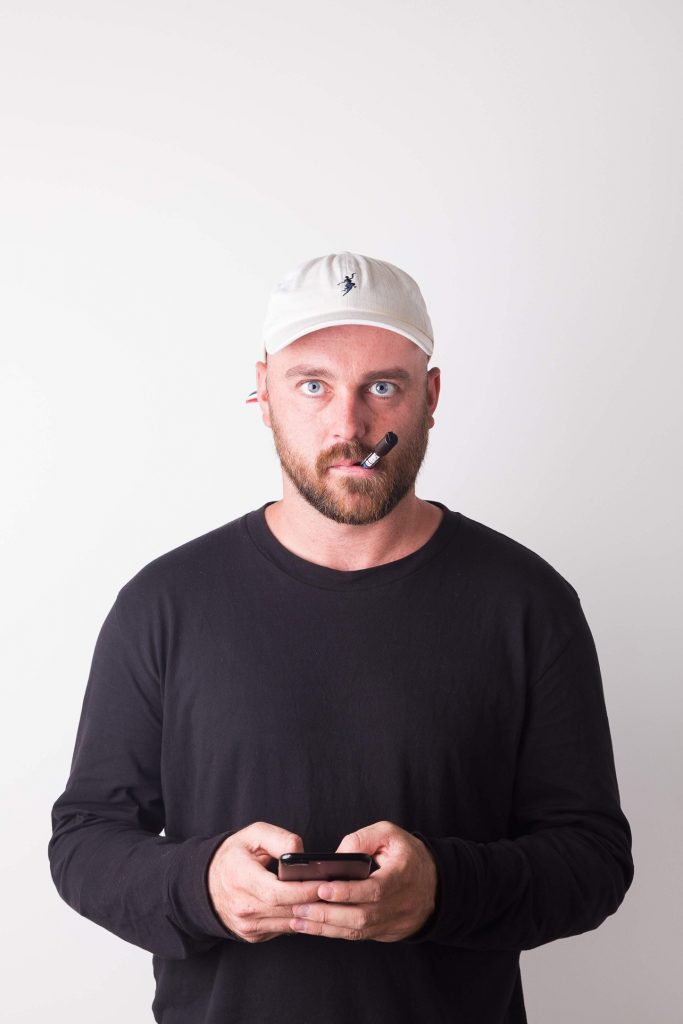
- What has been your personal highlight of 2019? A personal highlight of mine of 2019 was the decision to branch out and fully delve into new mediums and explore a lot of new ideas and work that are really breaking away from the style that people would be used to seeing from me. None of this work has been seen publicly yet and that in itself is really exciting.
- What piece of someone else’s art in Christchurch has been your favourite this year? My favourite piece by a local Christchurch artist in 2019 was What Do You Write Bro? by Tom Kerr from Face Value group exhibition at Fiksate.
- What piece of someone else’s art outside of Christchurch has been your favourite this year? My favourite piece by an artist outside of Christchurch was I Never Learned To Tie My Shoes by Julio Alejandro from his solo exhibition Apple Eaters at Blackbook Gallery in Colorado.
- What exhibition by an urban artist(s) has been your favourite this year? My favourite exhibition of 2019 was the group show Urban Abstract at Fiksate Gallery in October.
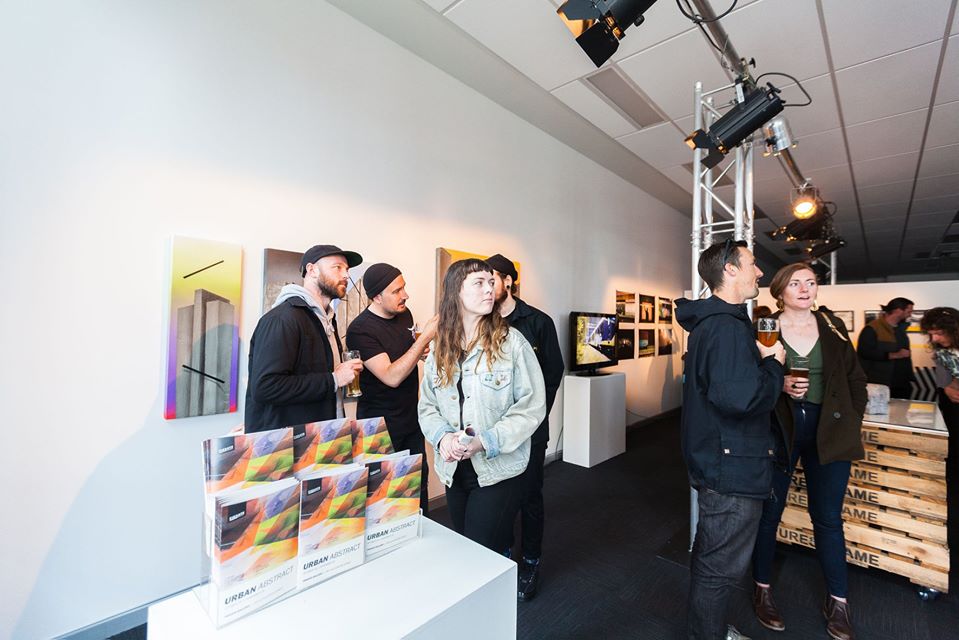
Opening night of Urban Abstract at Fiksate, October, 2019. - It isn’t just the end of a year; it is also the end of a decade. What events or sentiments have defined the last decade for you? Some key events of the decade that were super impactful for me were moving from a small rural town with absolutely zero form of culture to do with the arts into the city, which was a pretty big eye opener, then shortly after was the opportunity to start a city all over again with the earthquakes. The city became a playground for any artistic endeavours. From the graffiti and street art that resulted from fallen buildings and newly exposed building facades to the rise of small collectives and exhibitions run by local artists that for the most part were met with great support from peers and the public.
- What is the biggest artistic/pop cultural moment from the last decade? I don’t know a damn thing about any art movements or anything but I do feel like the introduction of social media has absolutely had a huge impact on the art world. Anyone and everyone is an artist on Instagram.
- Which artist or artists have stood out over the last decade? Michael Reeder is one that stands out off the top of my head. He has produced an incredible amount of work and I’m always impressed how he is able to do so many different variations of his work. Materials and techniques are always being explored to keep it fresh and exciting.
- Lastly, what do you hope 2020 has in store, personally and for the local scene? For me personally I hope 2020 brings a lot more freedom for me to go down different avenues with the work with the work I make and to not just feel restricted by anything that doesn’t seem necessary. For the local scene this year, I hope to see more small, gritty, underground DIY exhibitions being put on by local artists.

